
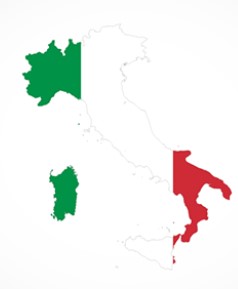
Italy is somewhere that we have been to several times before the existence of the Blog.
My first foray was way back in 1996 and our first one together was back in 2007.
Needless to say in this time we have seen quite a lot.
Rome
Rome is an obvious favourite and we have both been here more than once and it is about number four for me. In saying that we didn’t really get off the beaten path but we have certainly blitzed the tourist attractions within an inch of their lives.

So I will summarise these as best I can starting from the main attractions and making my way through what is not a small list of things to see. I guess the first thing to put on the list is the Vatican. The home of the pope and the seat of the Roman Catholic church this place classifies as its own country (the Holy See). The main port of call here is Saint Peter’s Basilica.

It doesn’t really matter where you go in the world and what you end up seeing, but St Peter’s Basilica is impressive no matter what sort of list that you are putting together. The sheer size and scale of the place is amazing, add to that the ornate paintings, mosaics and sculptures, there really is a ton to keep you amused here.
The thing that you will need to know is that it is always packed with people, always. The line to get in (even on a normal day) can stretch for hours, and on a day when the pope is around, or something special is on, forget about it. But if you brave the queues, you cannot help but to be impressed.
The area is patrolled and guarded by the Swiss guards in some of the ponciest uniforms on the planet.






You can get into the place, you can go to the top floor of the Cathedral (bottom of the dome and where all the statues are), and you can even climb the curved staircase to the top of the dome (something that I did a couple of times and we have done together). Inside you see the usual catholic church type bling, and from the middle you get a great view of the square and all of the statues. But if you make it to the top you get an amazing view over the whole place and if you walk around the other side you even get an aerial view over the top of the papal gardens.



While you are here you can then take in the sights of the Vatican Museums which house ancient Roman sculptures, Renaissance frescoes and the main attraction, the Sistine Chapel, famous for Michelangelo’s ceiling. But be warned, about 25,000 people a day come here and stand in 3-4 hour queues to see it.



Having stood in all of these queues previously, this was not high on our list of things to do this time (just to catch the blog up).
Roman Forum & Palatine Hill
This is one of those travel tips that will come in handy. The ticket that gets you into the Forum and Palatine Hill is the same ticket that will get you into the Colosseum. So if you visit either of these two first there will be almost no line so when you get to the Colosseum you can just breeze on through.







The Colosseum is another big ticket item when in town and invariably, it will be packed. This (and other key sights) used to be a hub for gypsies and pickpockets but on our most recent visit (unlike the earlier ones) we did not see any evidence of this. We obviously took the usual precautions (wallet and valuables in the front pocket with hand on them at all busy places and choke points) but the once ubiquitous gypsy had been replaced with HOHO touts.







While you can enter the Colosseum, you cannot enter the underground area, the Arena or the third level. The earlier excursions of ours saw the Colosseum shrouded in scaffolding, but not this time around, we got some really nice unobstructed views.
The next big ticket item was the Trevi Fountain, this 26.3 metre (86 ft) high and 49.15 metre (161.3 ft) wide fountain is the largest Baroque fountain in the city and one of the most famous fountains in the world. To say this place is busy would be an understatement. The entire area is packed at almost all times of the day. The up side of this is that the Instagrammers are pretty well regulated as hordes of people cram in to get their photos.






Castel Sant’Angelo is the Mausoleum of Hadrian, a towering rotunda on the banks of the river between the Vatican and the Trevi fountain.
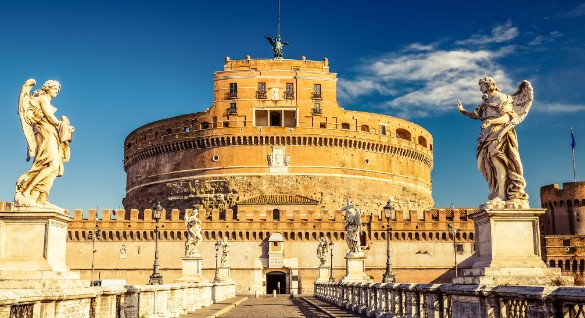
In the city of Rome there are more than sixty catacombs composed of kilometers of underground tunnels in which thousands of tombs are found. Currently only 5 of them are open to the public:
- Catacombs of San Sebastiano – 12 km long named after a soldier who was martyred for having converted to Christianity.
- Catacombs of San Calixto – 20 km long and house the tombs of 16 pontiffs and dozens of Christian martyrs.
- Catacombs of Priscilla with some preserved frescoes
- Catacombs of Domitilla – 15 km long
- Catacombs of Sant’Agnese –



My enduring memory of the catacombs is that I am considerably taller than your average Roman, and even more so than the ones from 2000 years ago. So my time was spent hunched over bashing my head on the ceiling and collecting any stray dirt or spider webs that may have been lurking about.
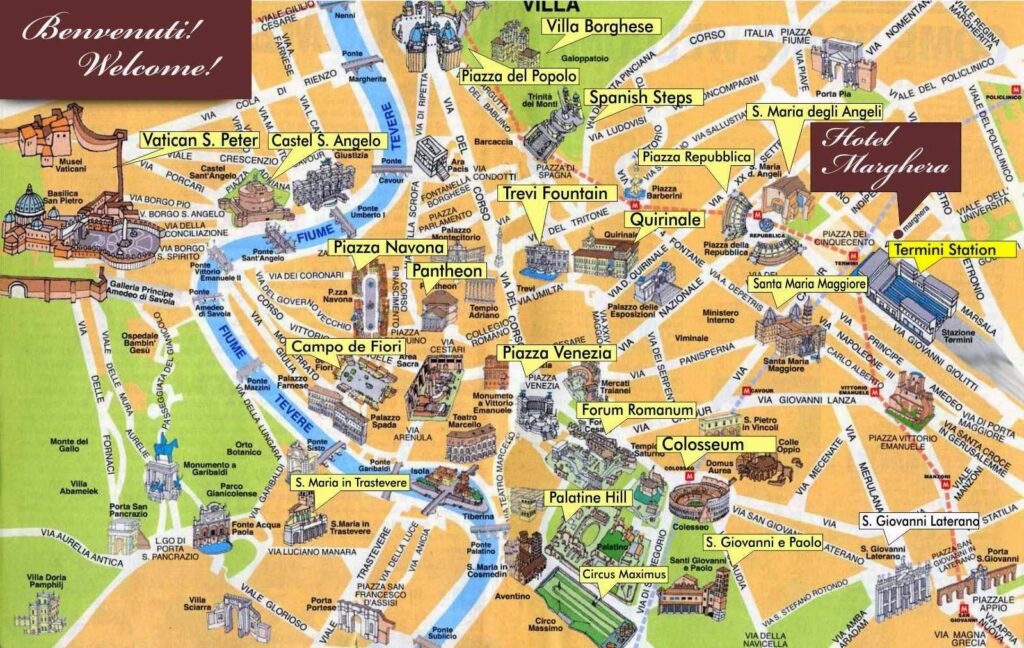

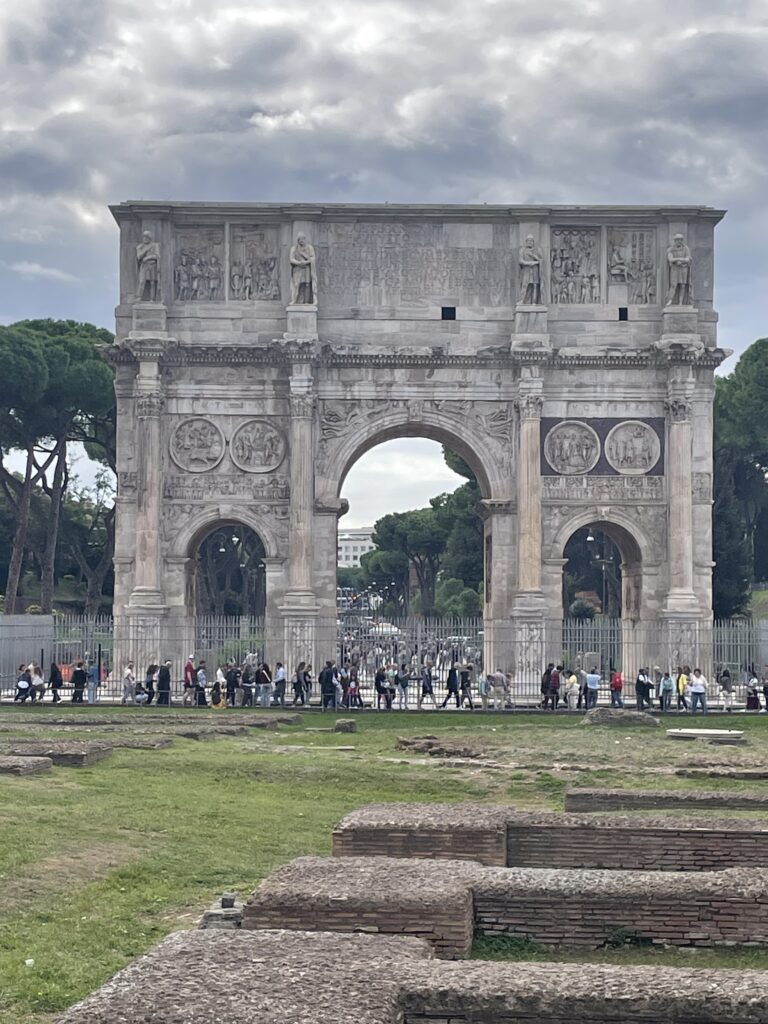

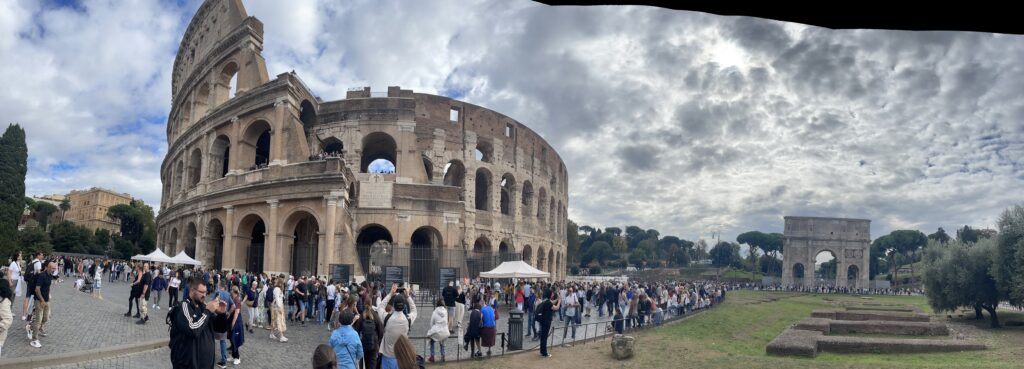
The first thing to do was to grab a 3 day train pass (all you can ride) and hop on the metro (a short walk from our hotel) for the Colosseum. Jill had pre-booked us an all inclusive pass into the Colosseum and the Roman Forum. The booking had us milling about for quite a while (there are now assigned time slots when you can enter). Being punctual people, we were early for our guide, who was early for the appointed time, and the guard were anal on the time that you could enter.
So in essence we sat around in some crazy crowds, for over an hour, rebuffing the approaches of the incessant touts offering us tickets, water, travel batteries and the like. And this continued, and continued, and continued until we were finally allowed to enter the Colosseum. On the up side, last time we were here, the whole thing was covered in scaffolding and the photos sucked. But this time the place was pretty much scaffold free and the photos were good.
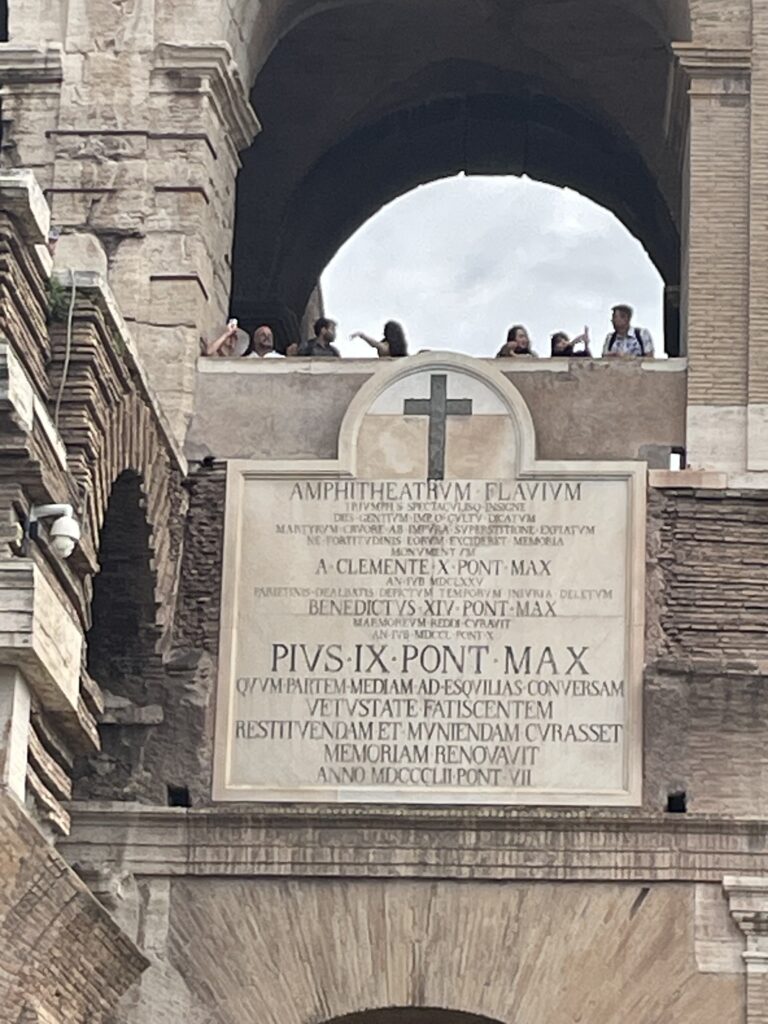
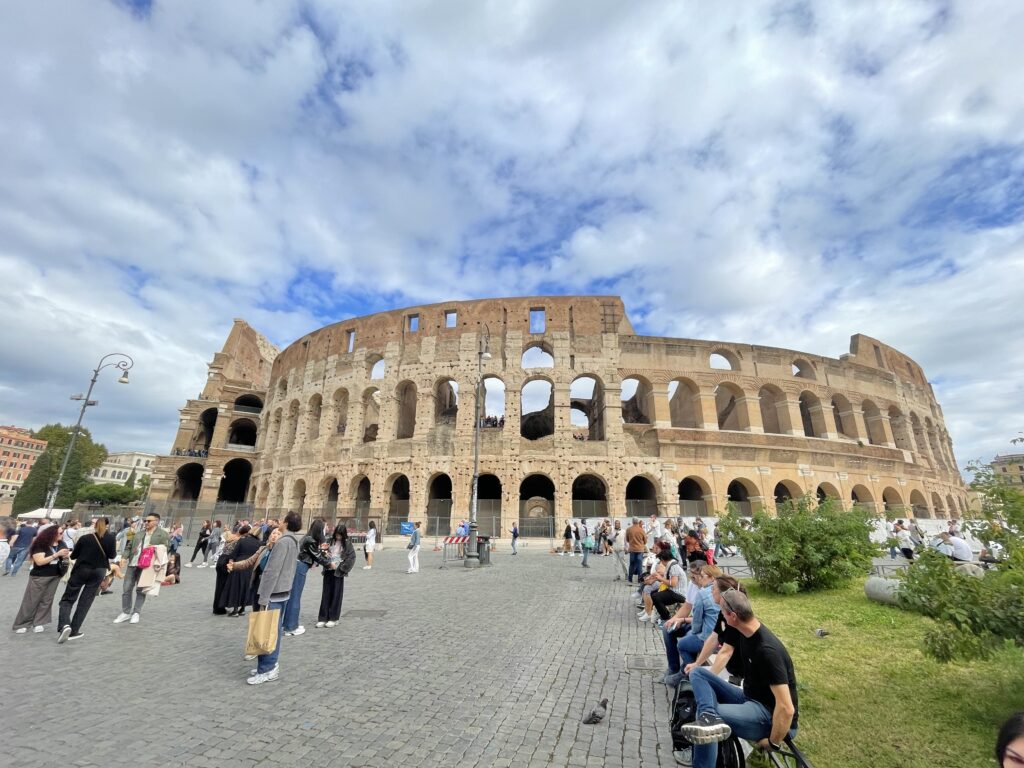

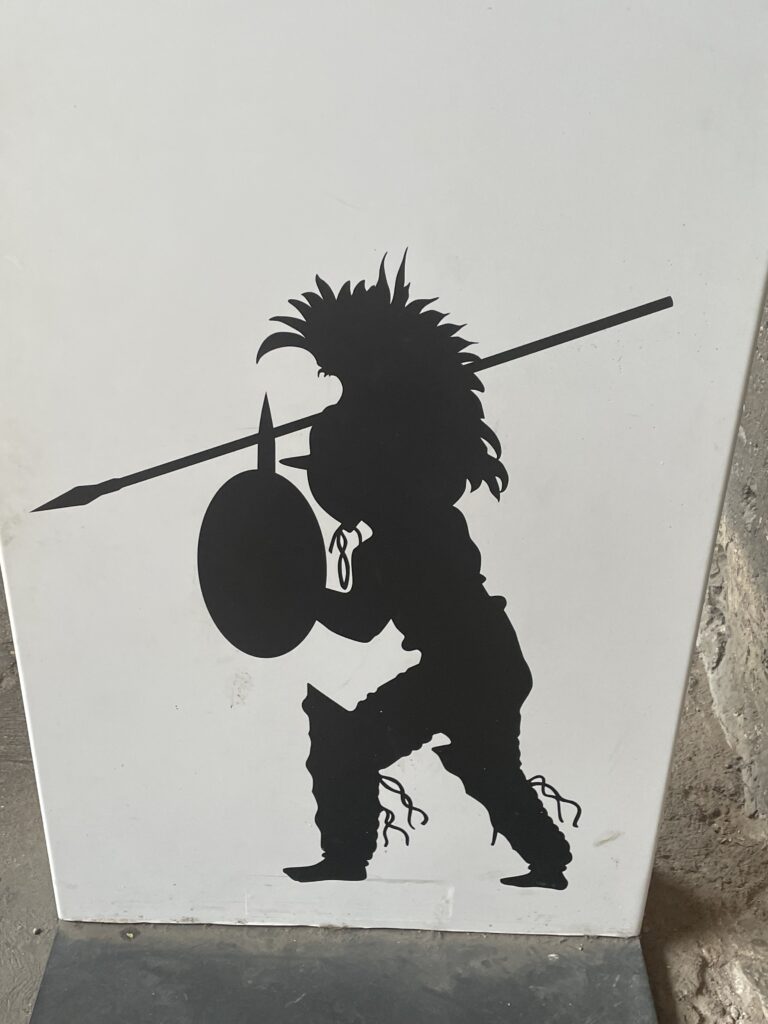
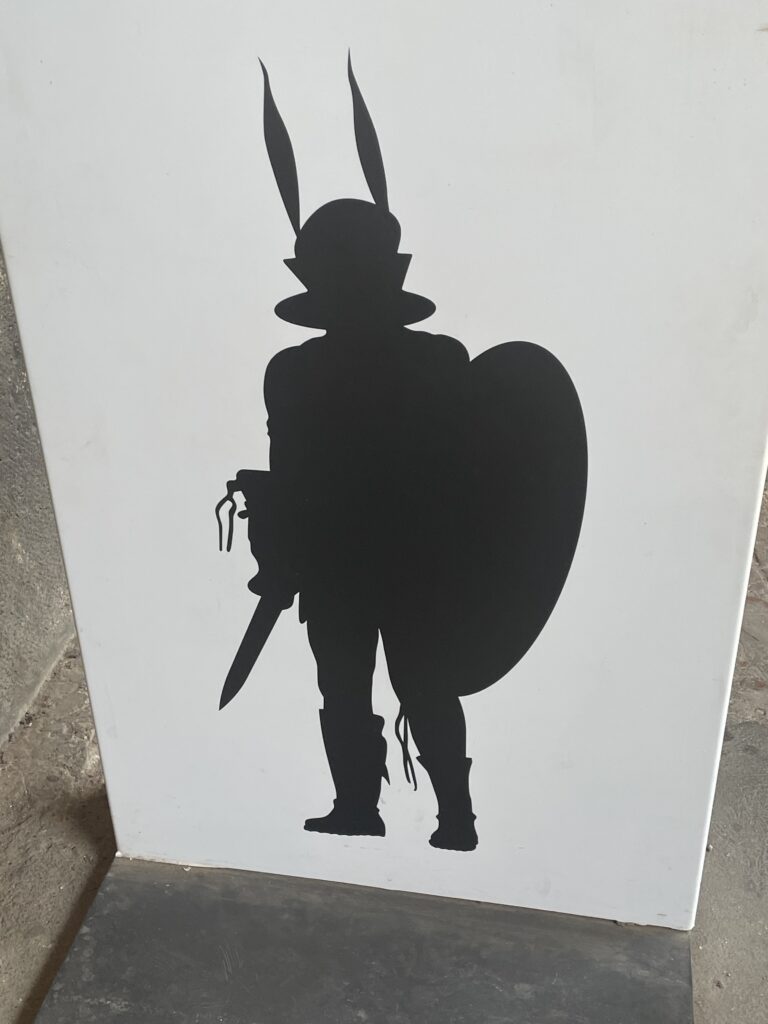
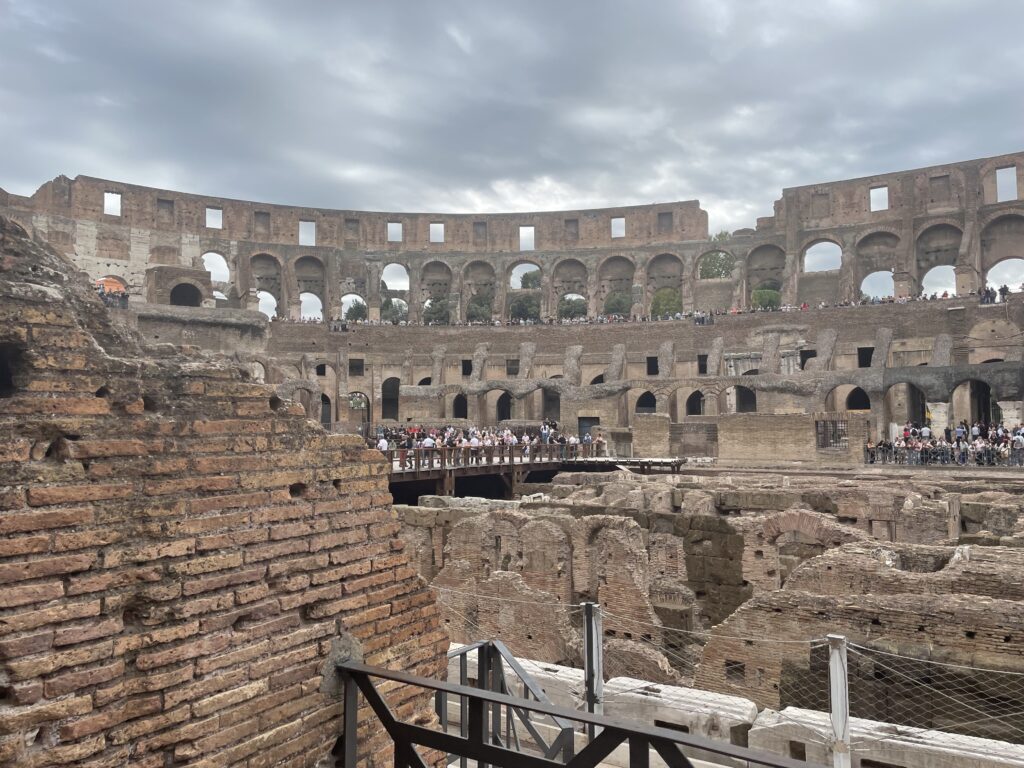
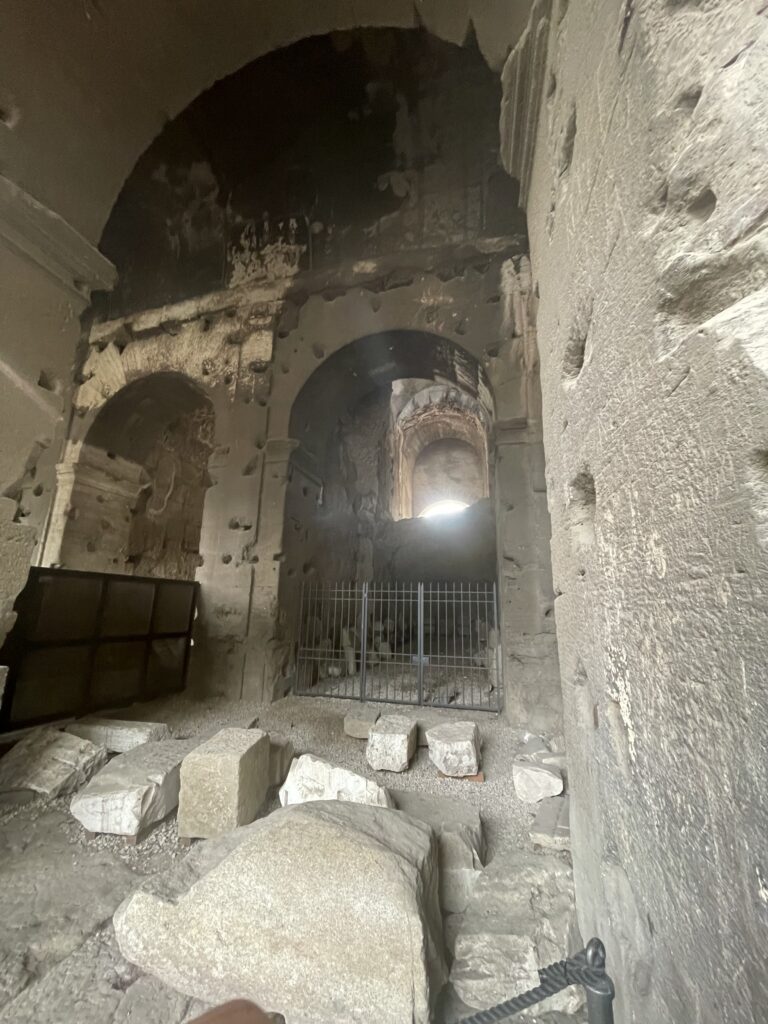
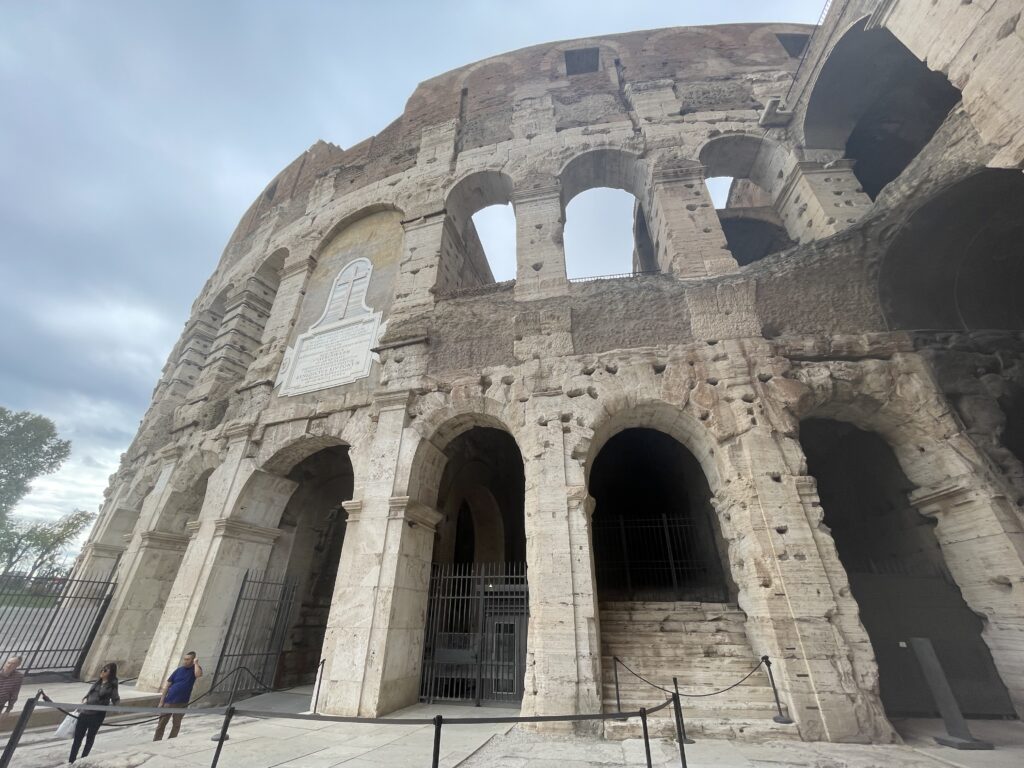
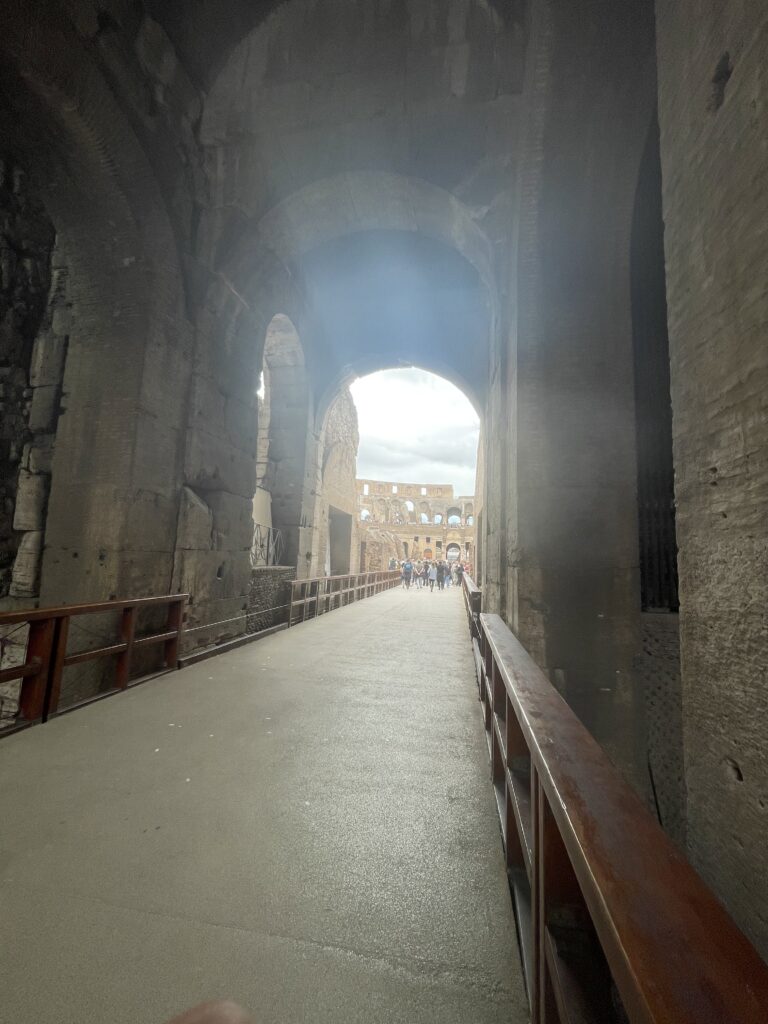
The other big change, the first time that we came (and entered the Colosseum) the arena was closed to the public. But as of now, the Arena has been reopened and you can stand on the ground level while getting fantastic views of the sub-floor. This includes the trap doors where lions etc were set upon unsuspecting gladiators. To say that this was seriously cool is a massive understatement.

A bit longer in the Colosseum checking out the various levels and our day could continue.



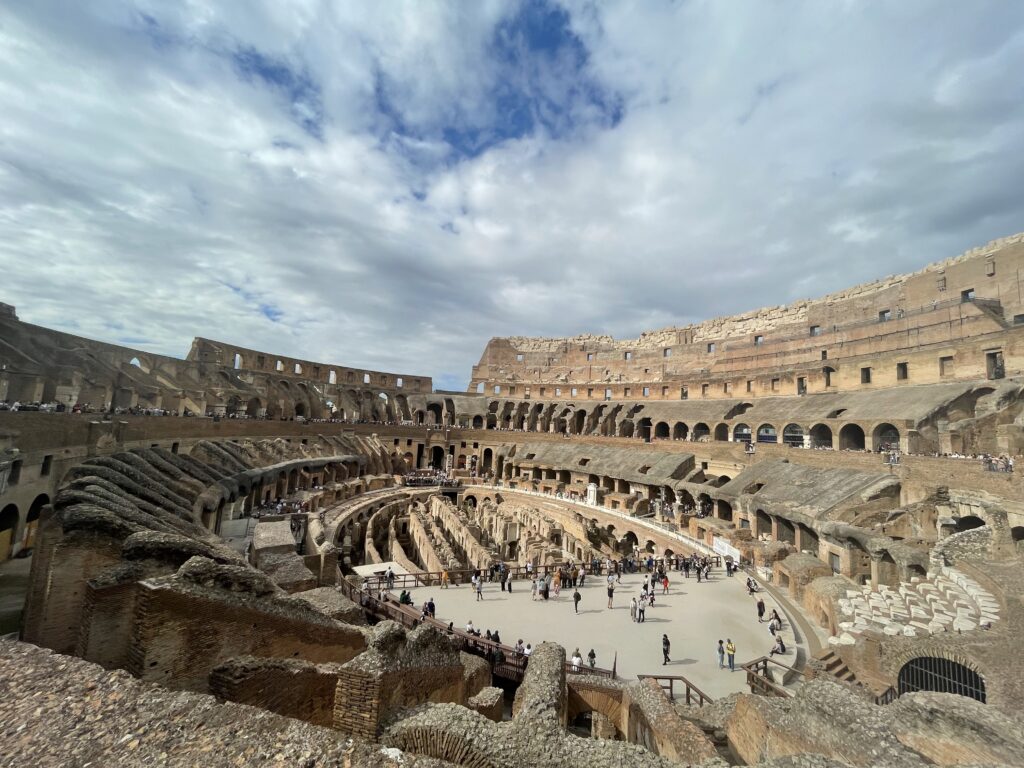

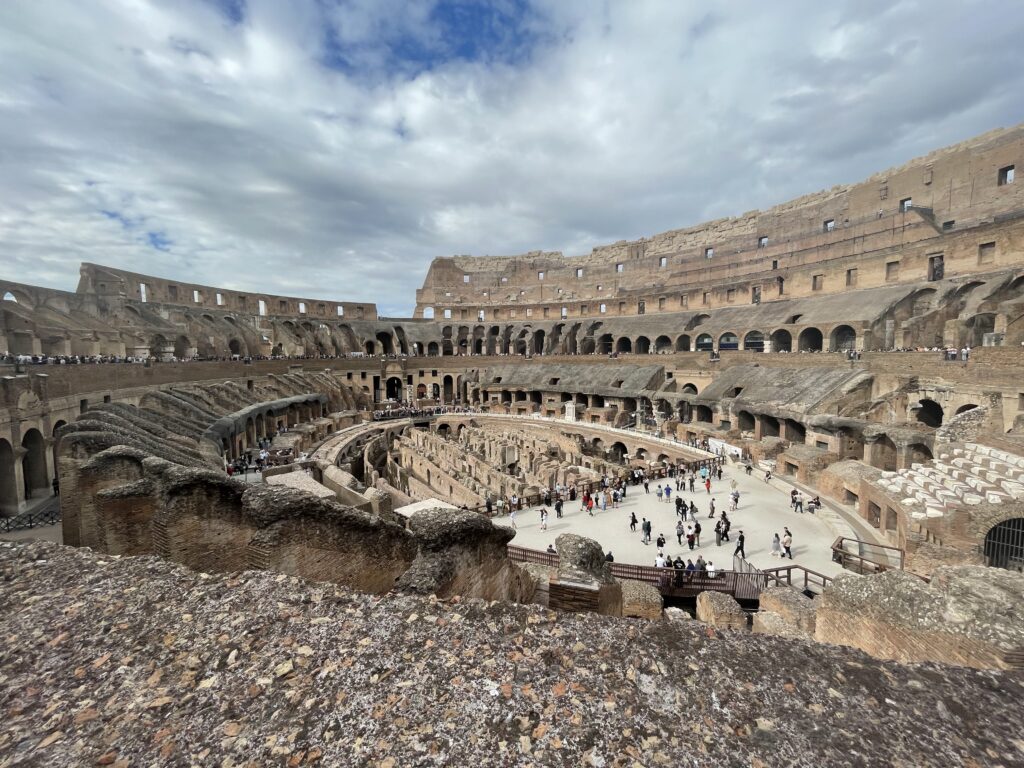
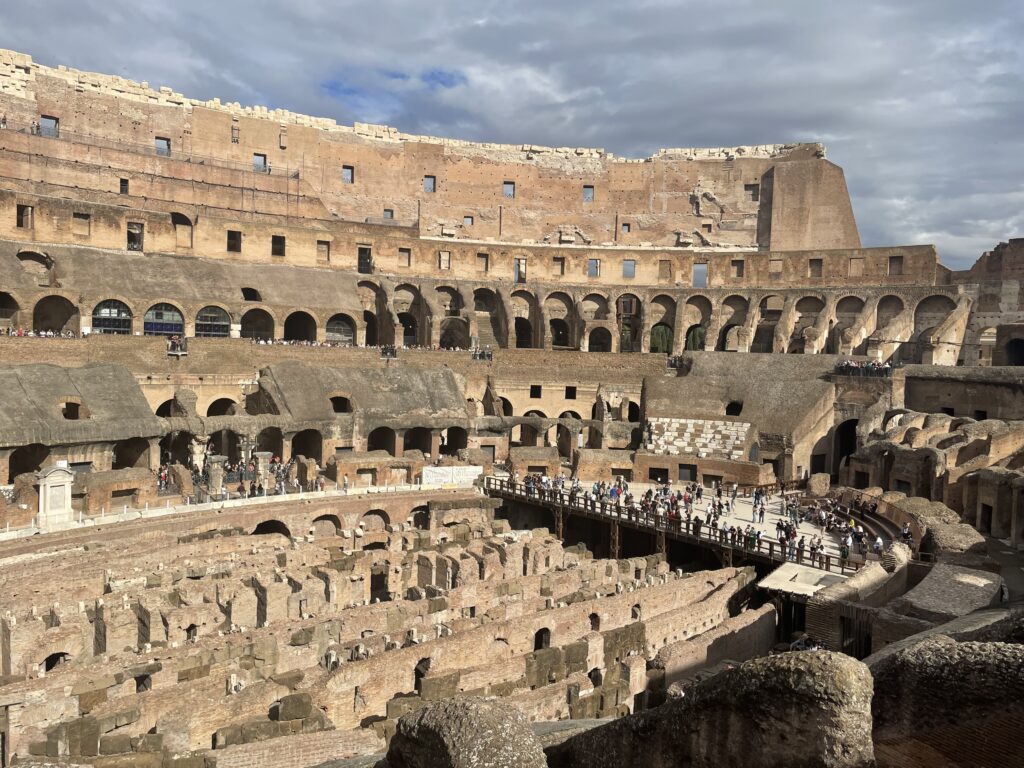

After the Colosseum it was off to the Roman Forum, Circus Maximus and Palatine Hill. But after an early start, some waiting around on hard surfaces and a healthy amount of walking, this ended up being a rather abridged exploration. But this took us back to a magnificent meal near the hotel and an early crash before yet another big day tomorrow.
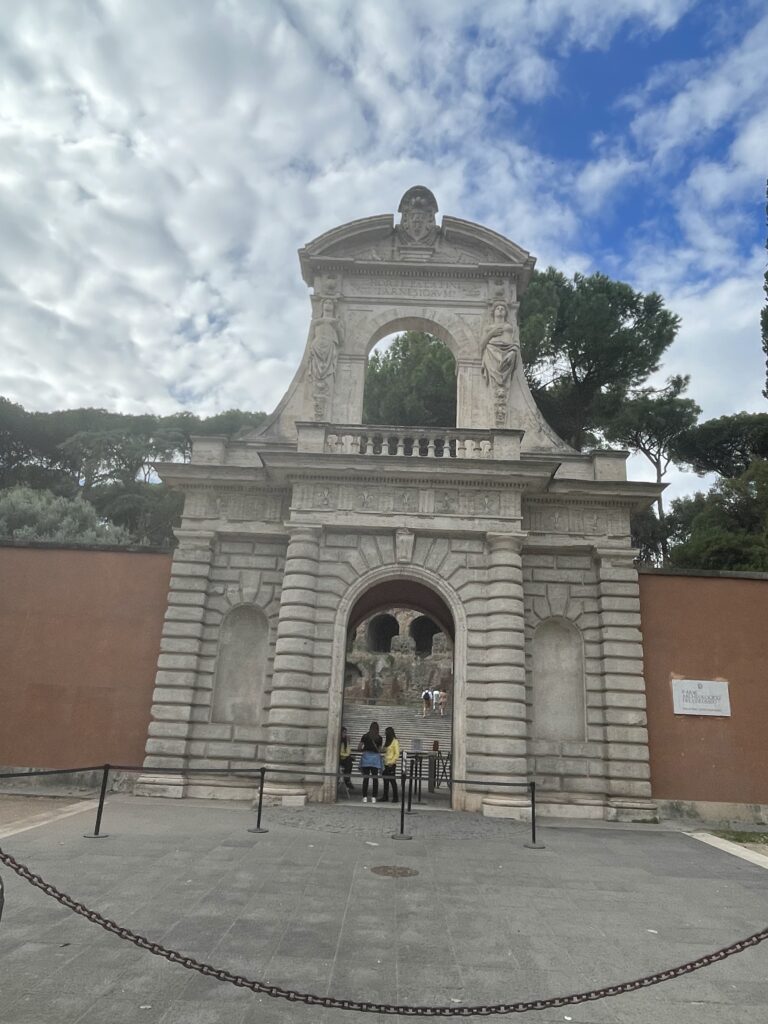

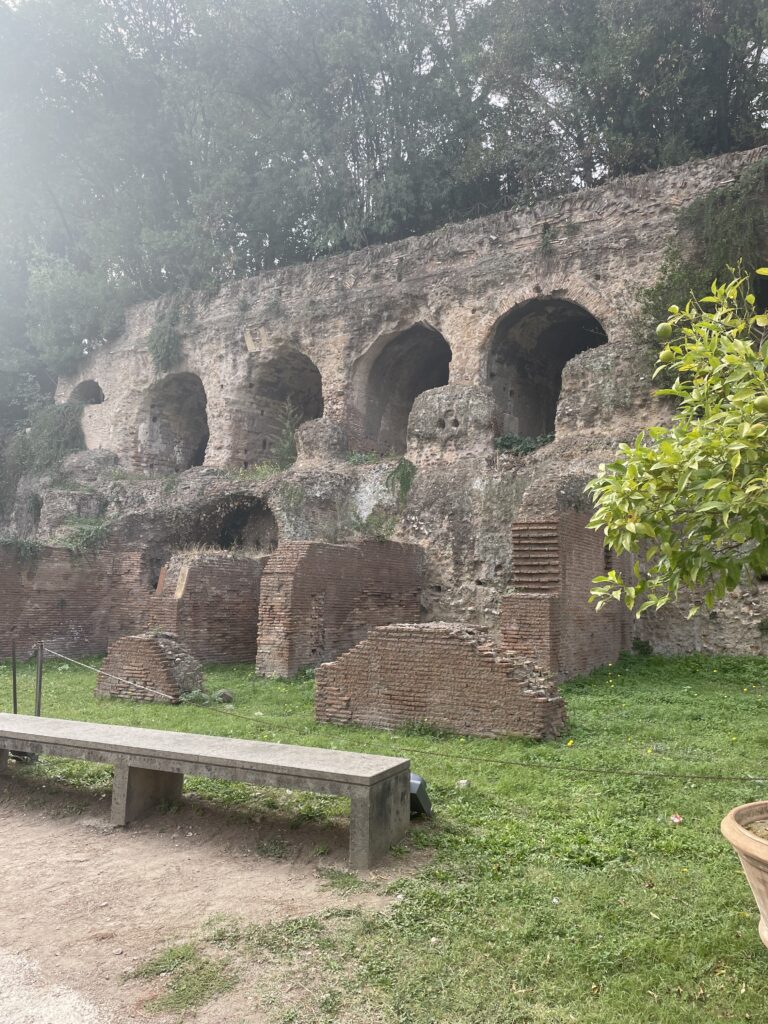
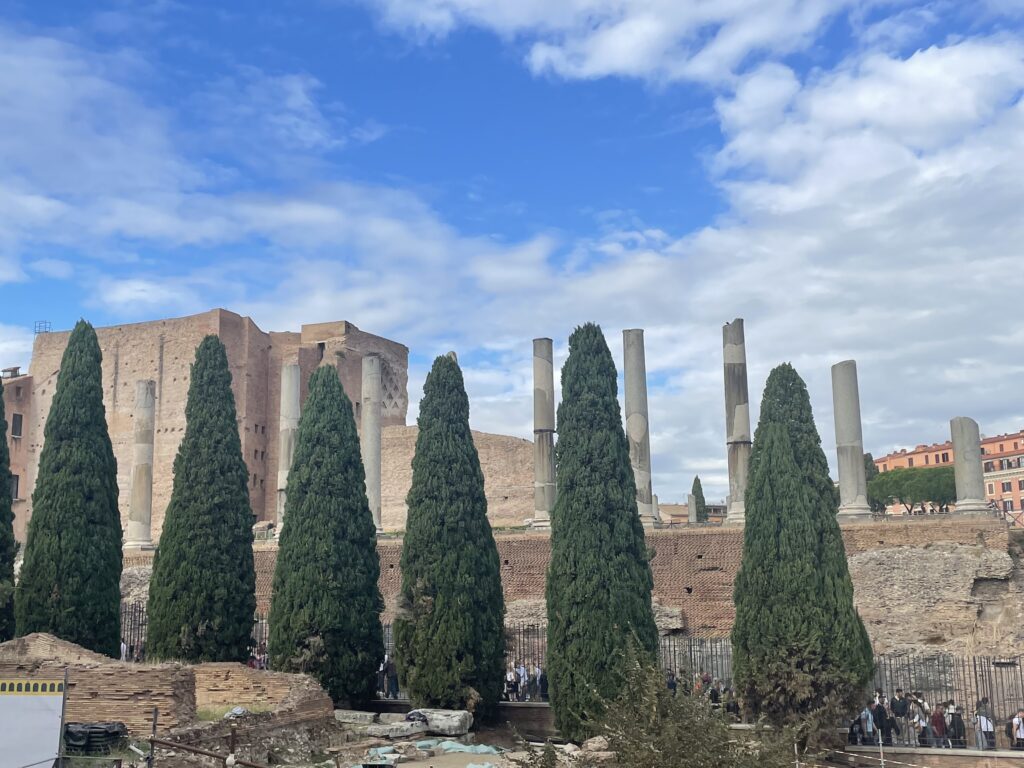



As it turned out, we picked the worst possible weekend ever to be in Rome. Our arrival on Friday (and the Saturday) happened to coincide with the arrival of thousands of pilgrims. Don’t get me wrong here, modern day Rome is so much busier than on our first few forays, but our weekeend had the pilgrims arriving Sat/Sun. On the Sunday the pope was hosting a mass in St Peter’s where he was to name another 20 new saints (hence the pilgrims) and on the other side of the river was the Rome half marathon.
Anyway, day 2. We were up early for a breakfast (coffee, juice, omelette, toast and pastry for 10 Euros) and back on the metro to St Peters. The main square was a mess (pilgrims and setting up for the papal mass etc) so we got a few happy snaps and headed around the corner for the Vatican Museum tour (including the Sistine Chapel).
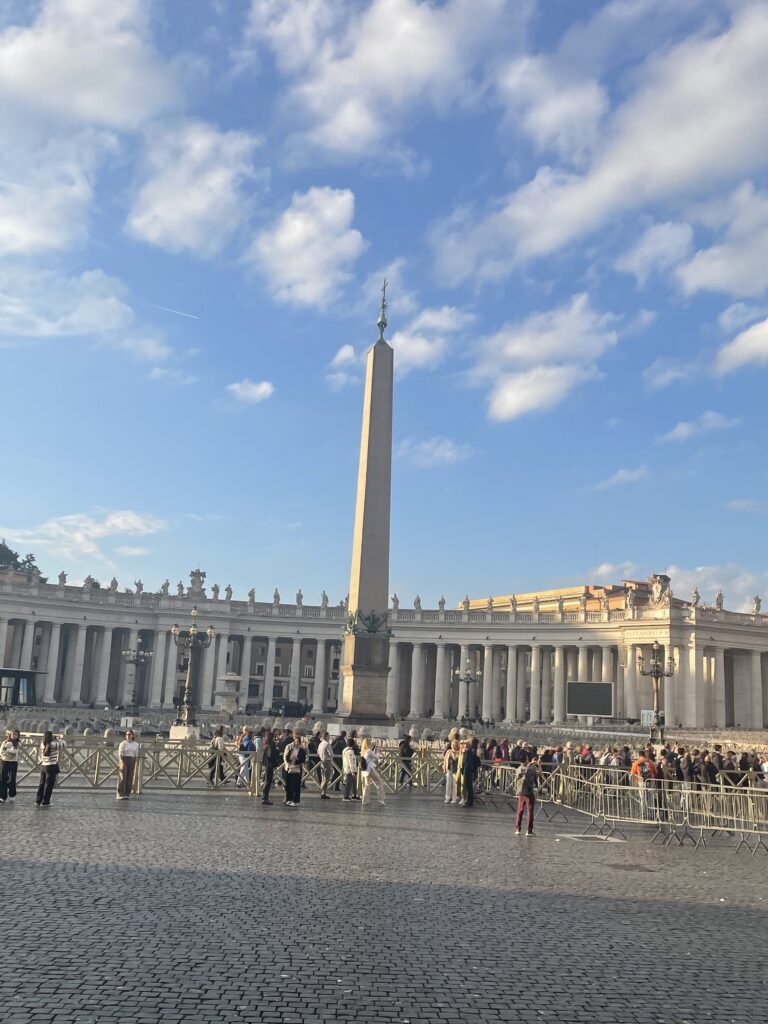
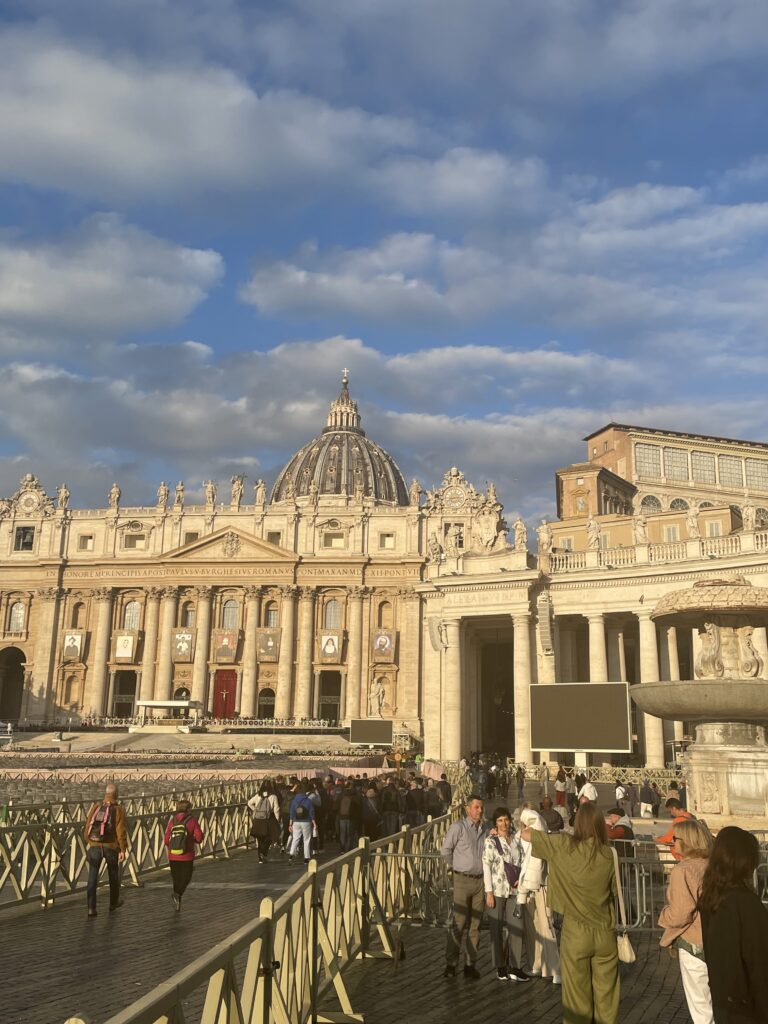
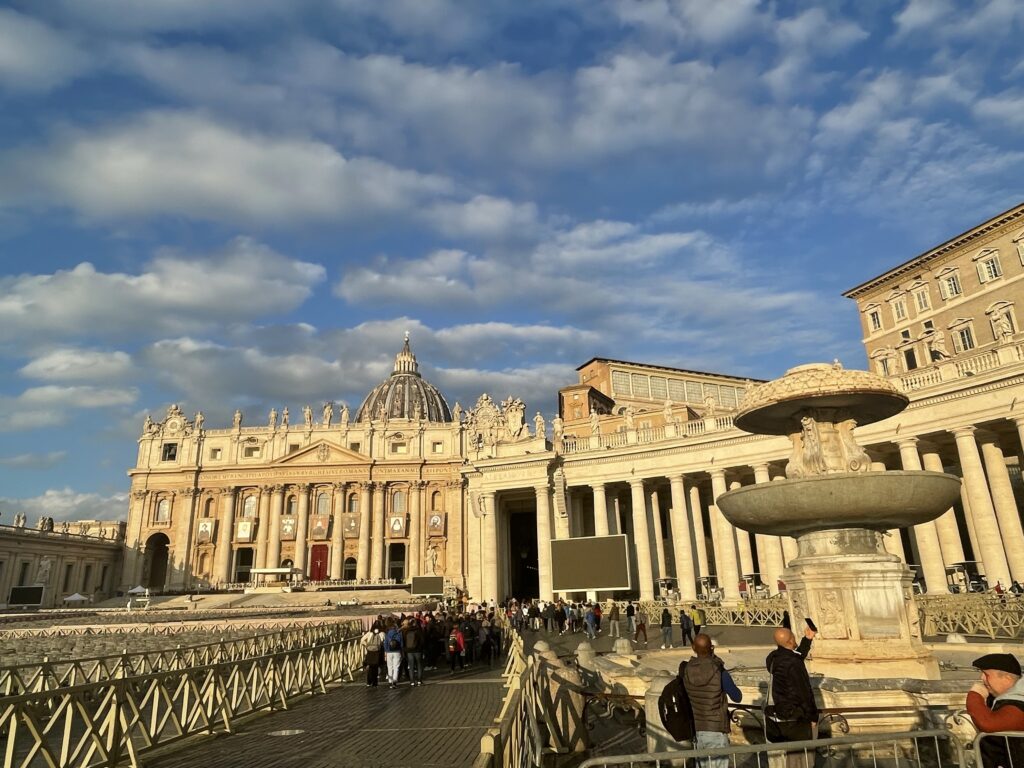
Same as the day before, we were early, the tour guide allowed extra time, and the lines were crazy long. So we spent the better part of an hour and a half on our feet before we had seen anything other than a brick wall. But eventually that all passed and we got moving…sort of.

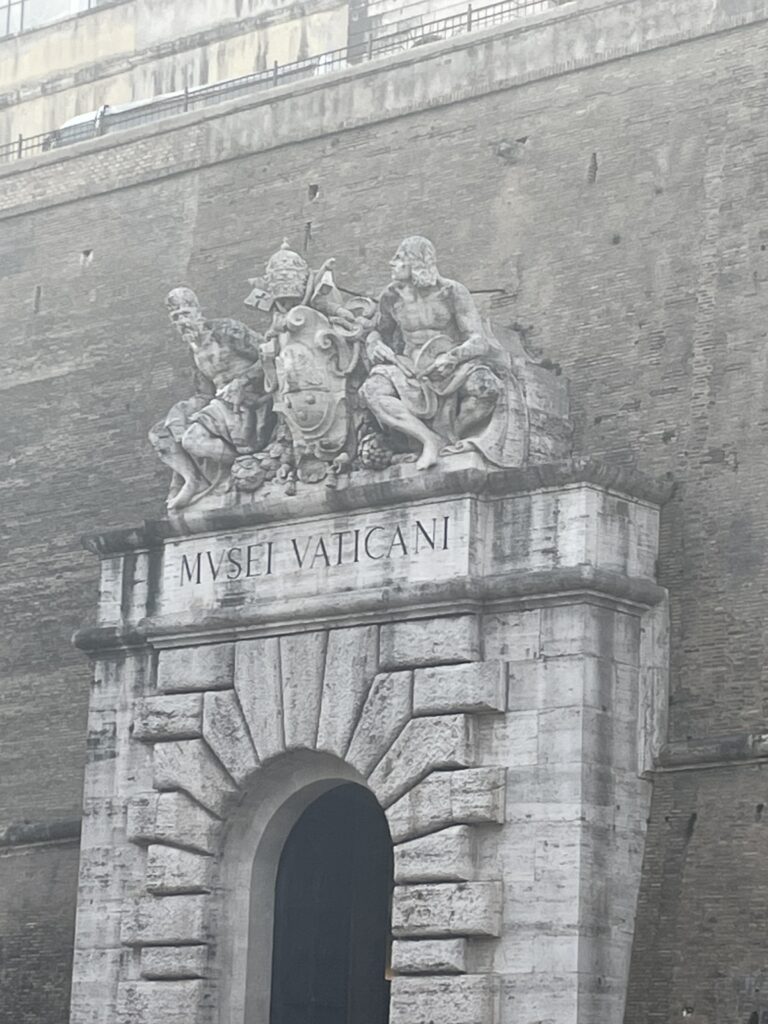
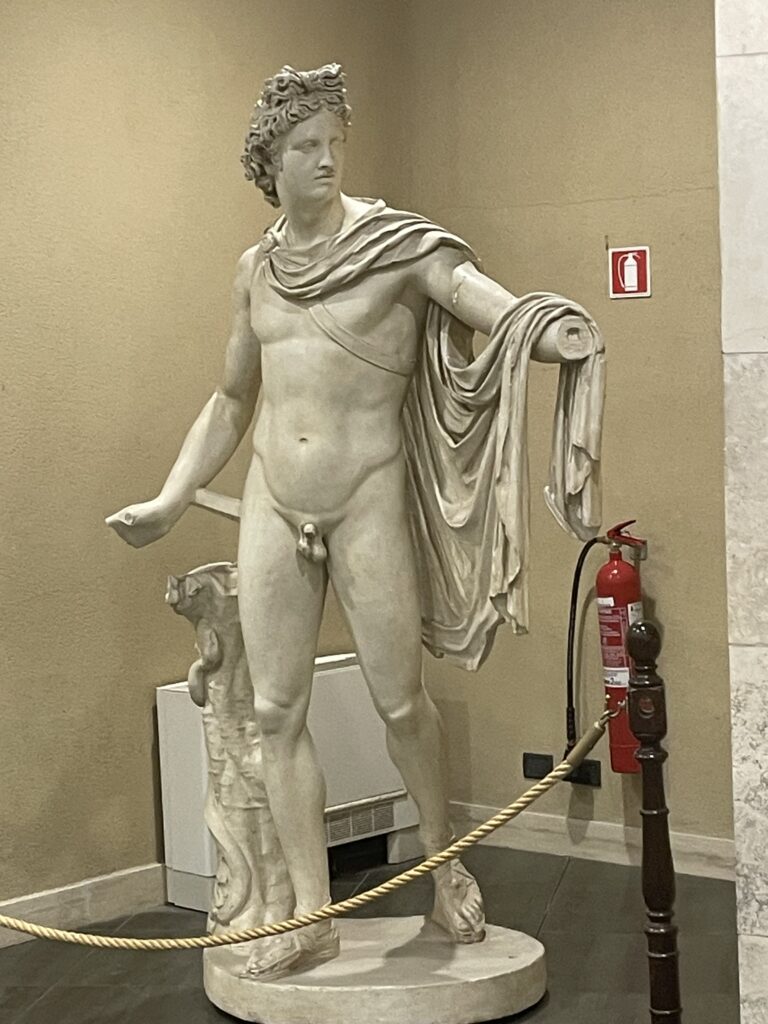
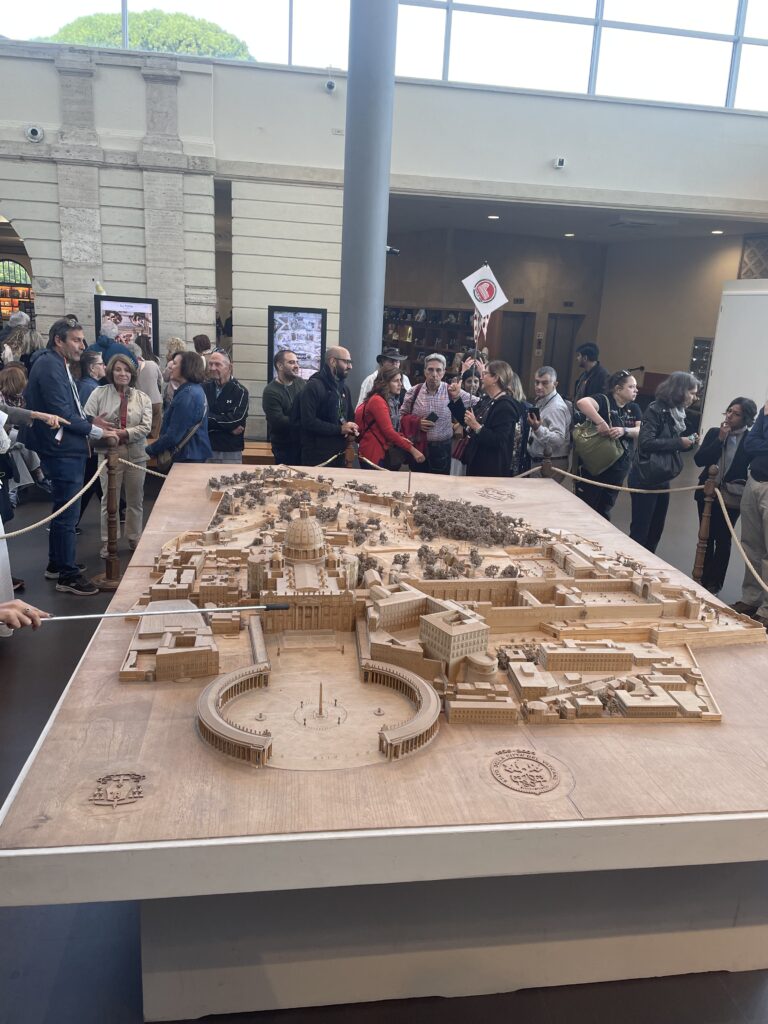
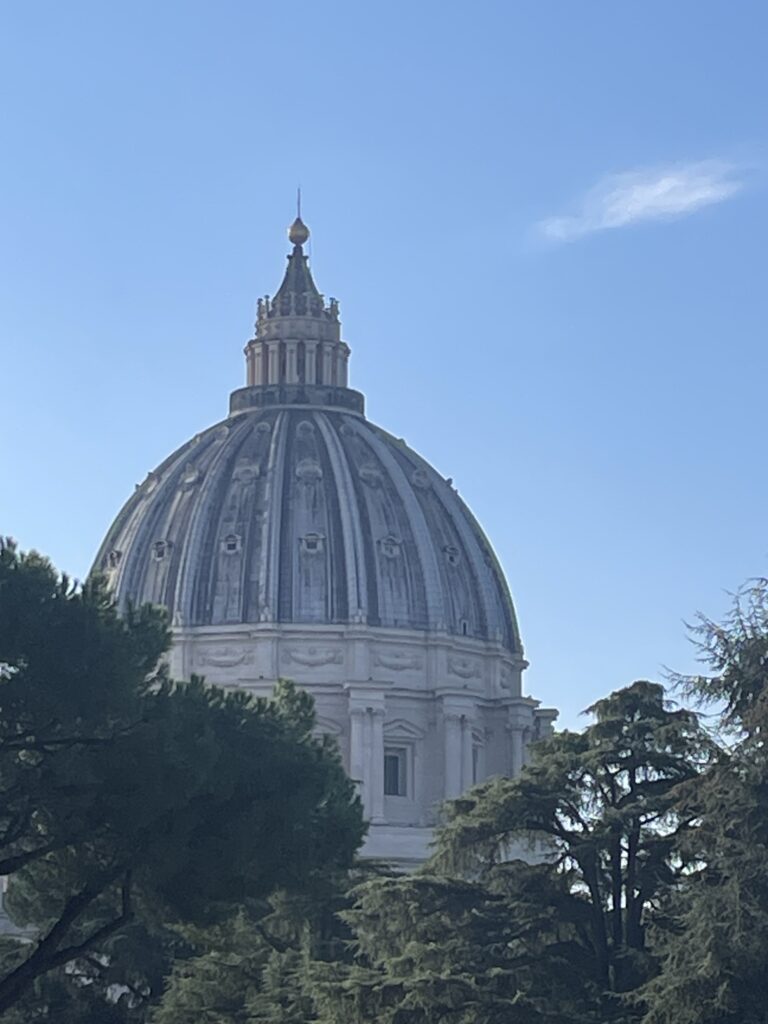
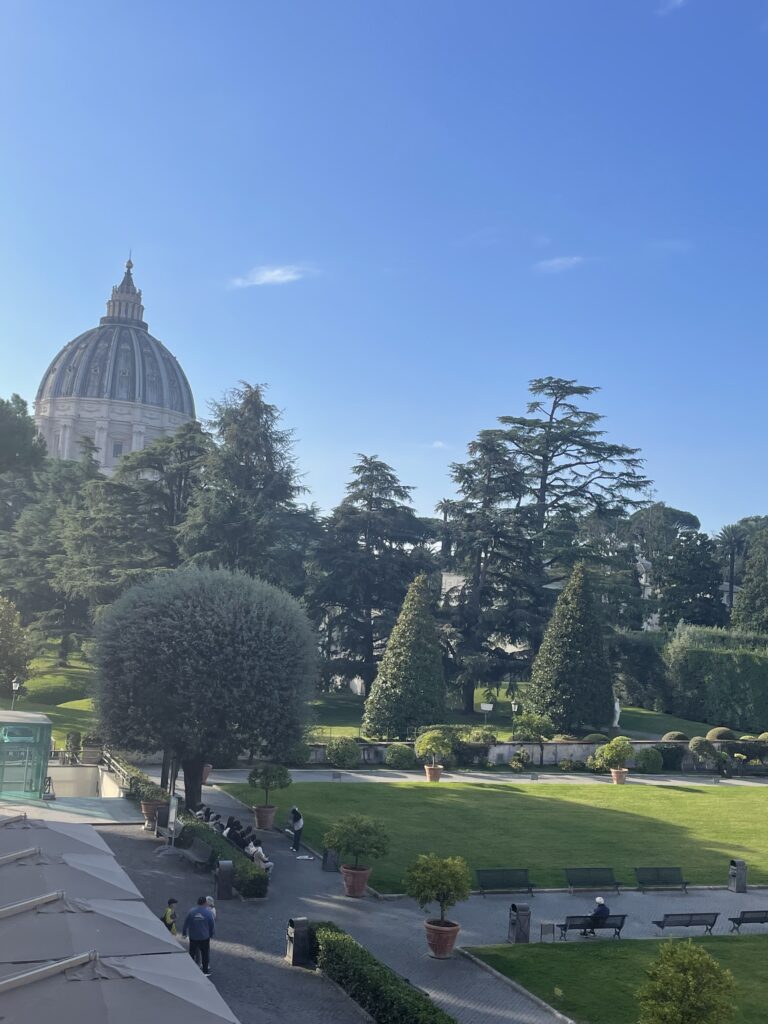
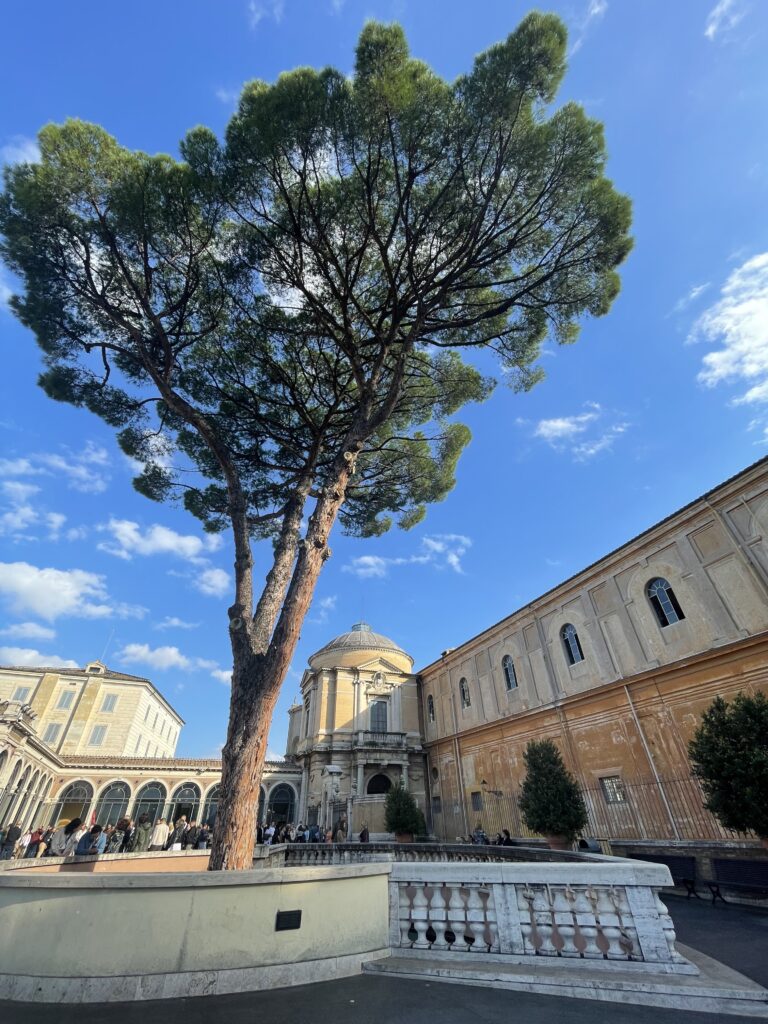
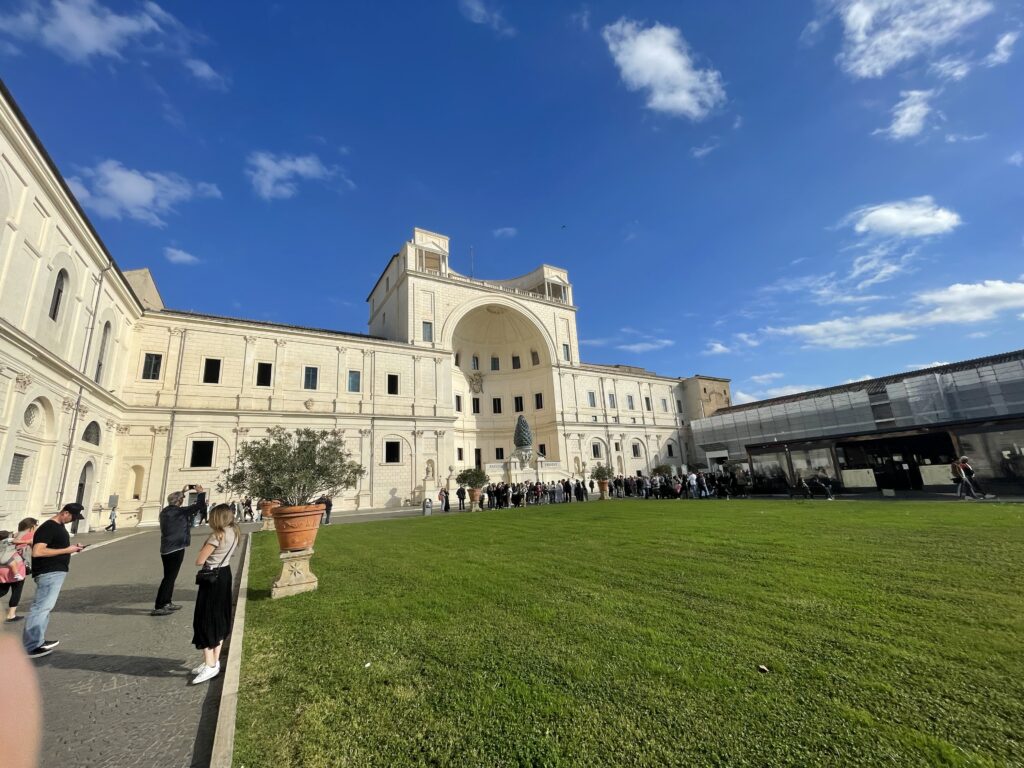

Because you only have a few minutes in the Sistine Chapel, and no photography is allowed, you pull up in the above courtyard where there are a series of 3 photoboards. These photoboards show all of the images and paintings contained within the Sistine Chapel, and without the time restrictions, the guides described each of the images in a varying degree of detail.
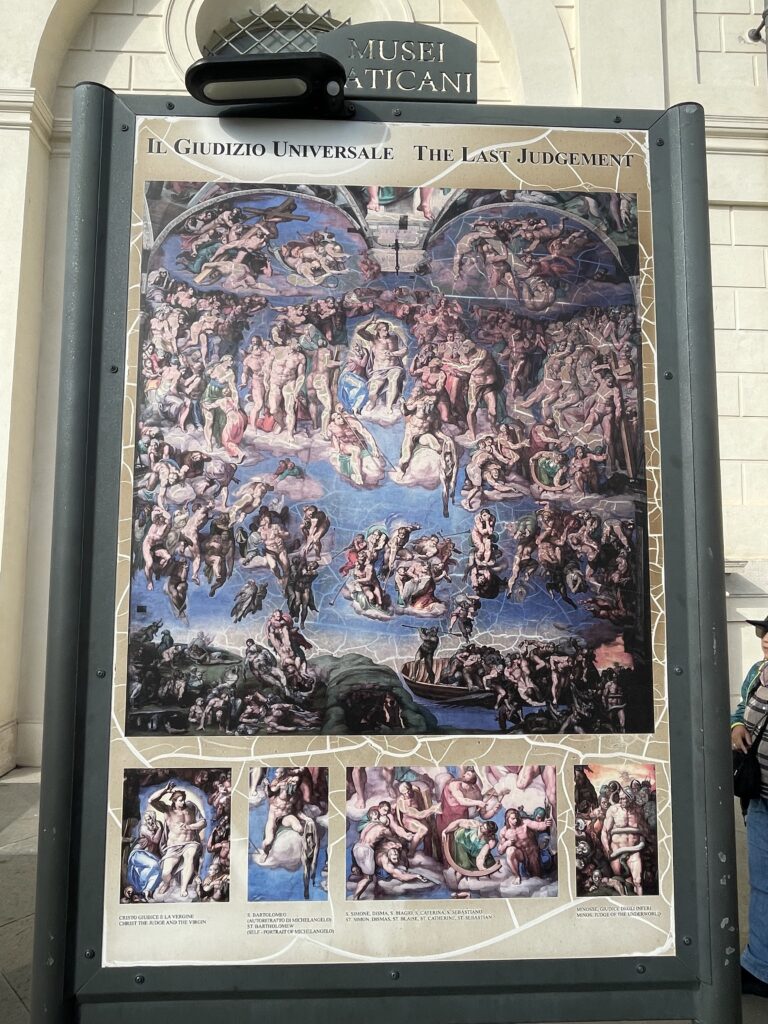
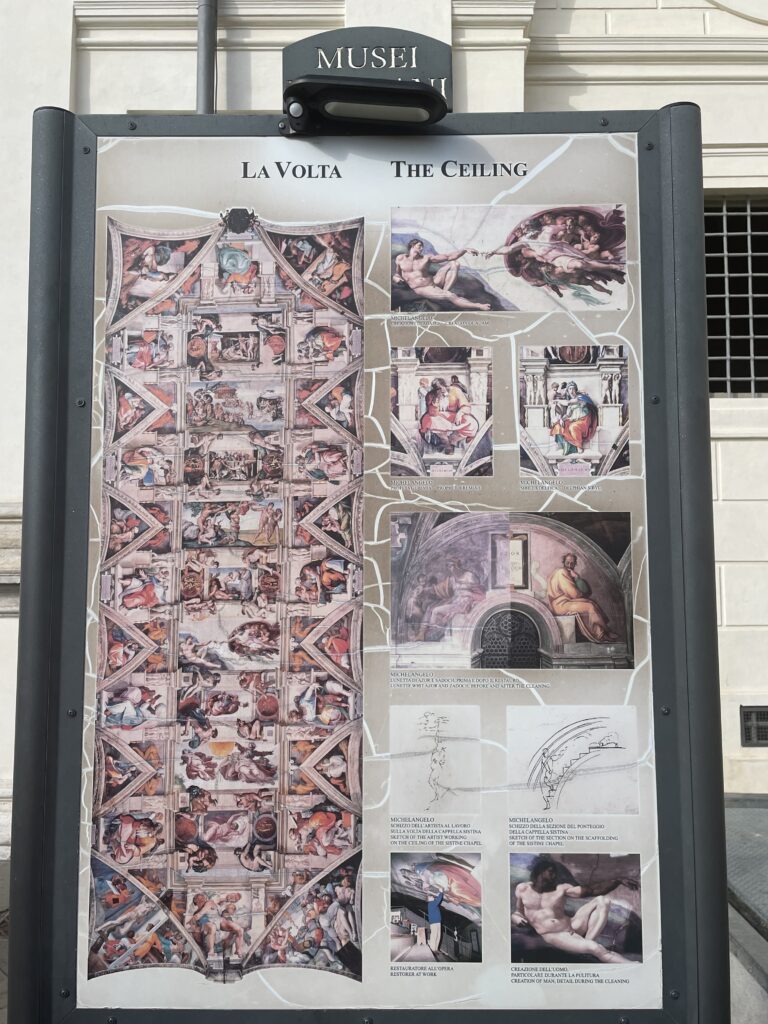
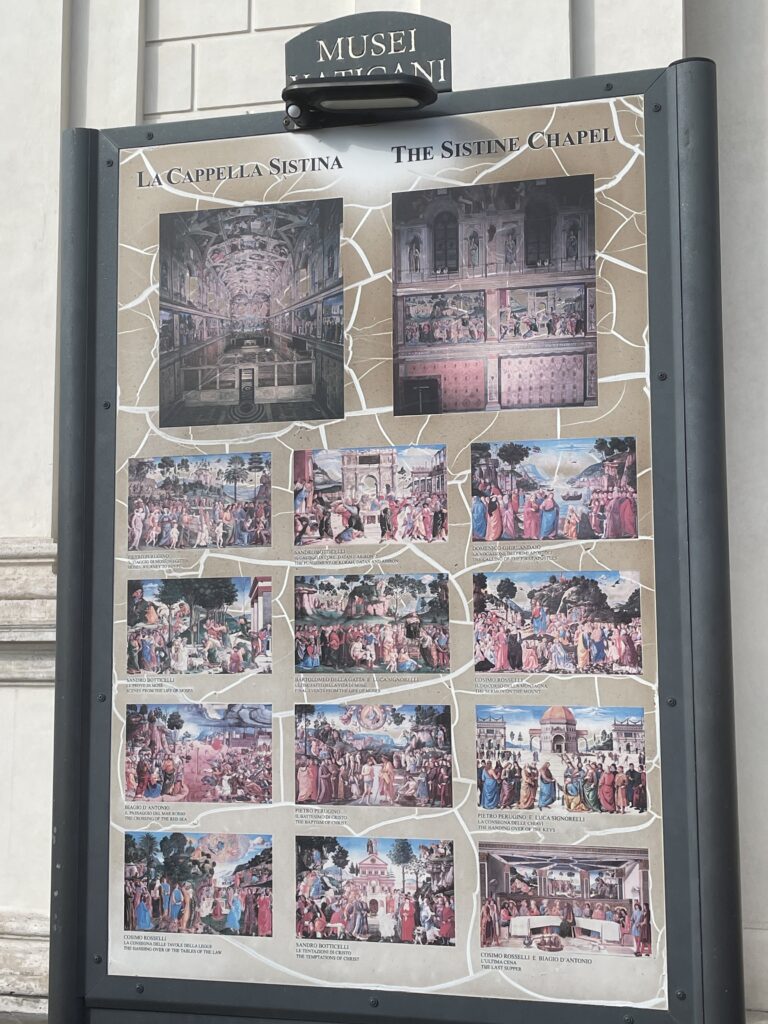
Our guide decided on extreme detail. So we stood in the sun for 90 minutes (well Jill did) Karin and I took photos of the 3 boards, found a seat and followed along with the audio commentary from about 30 meters away. Eventually she finished and the tour continued with a maze of corridors and religious bling.
Statues, carvings, ceilings, paintings, you name it, it is in here. I will refrain from comments about national debts, poor and starving people, but looking at suck lavish displays of overt wealth, it really does make you wonder.
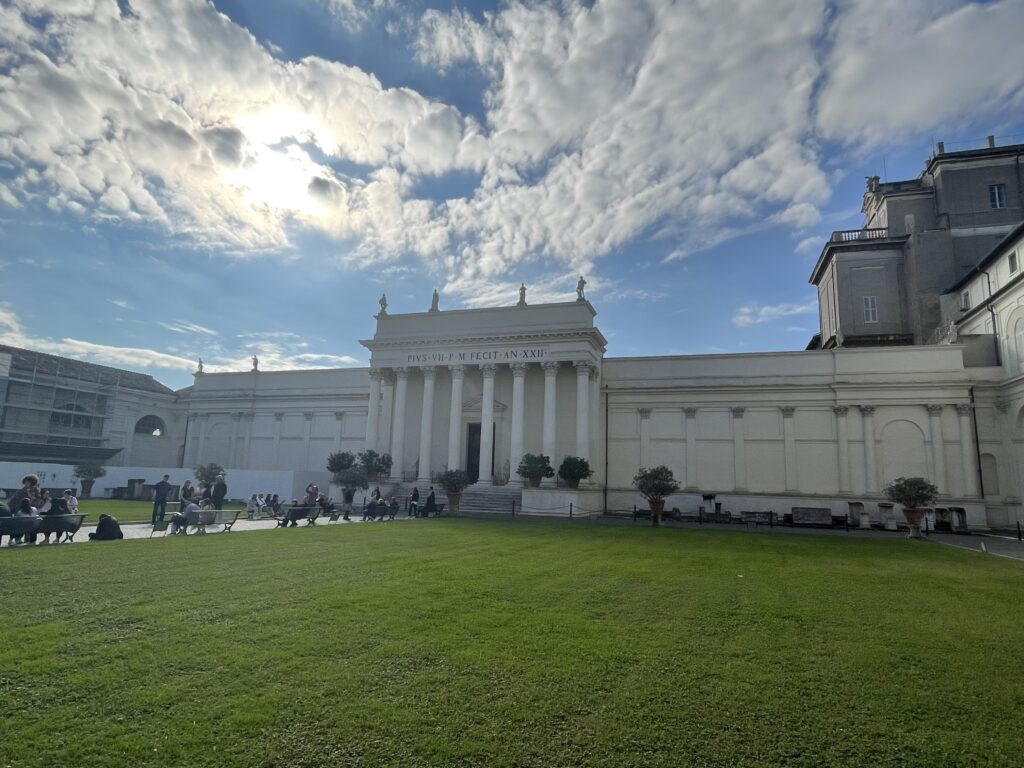
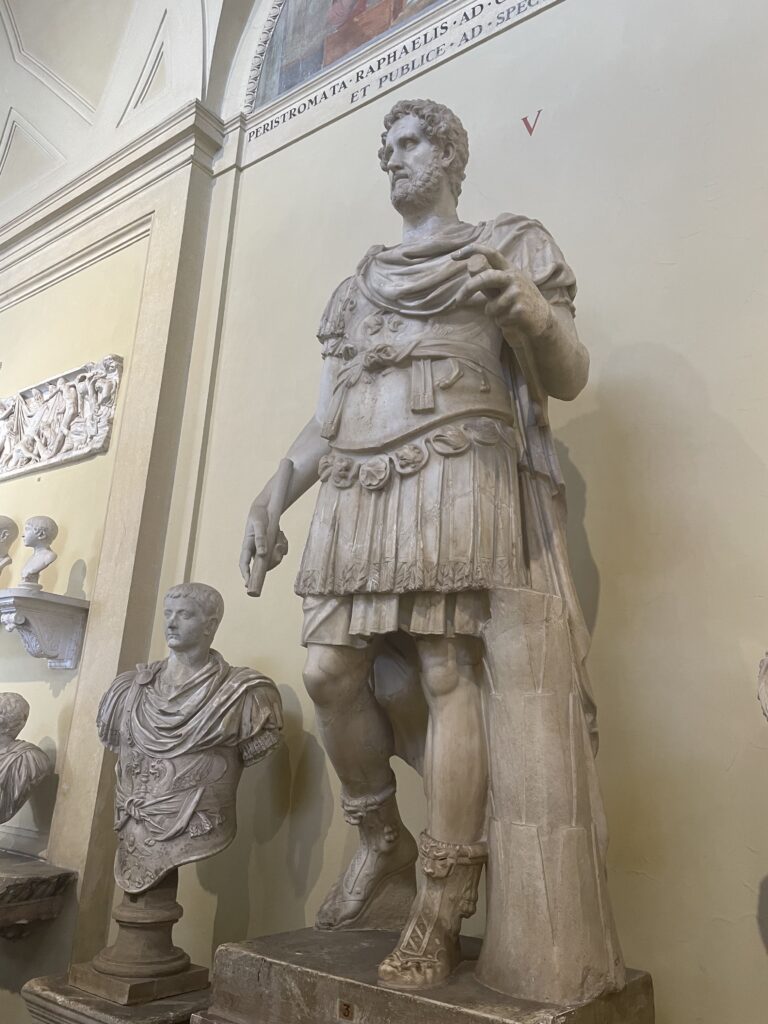
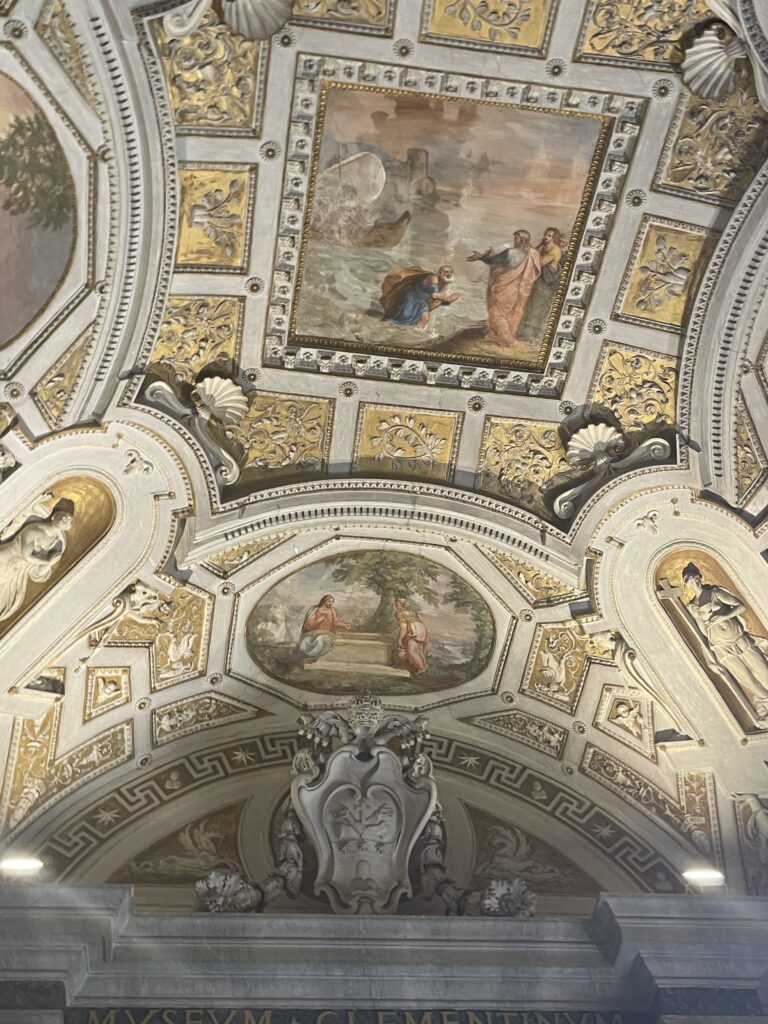
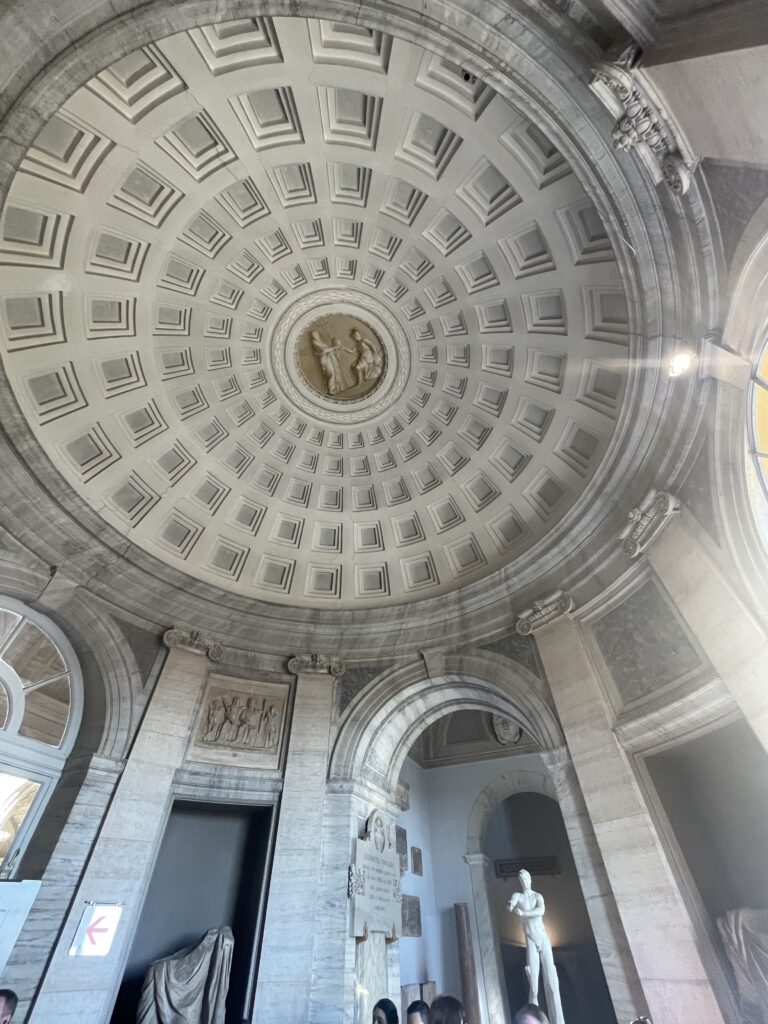
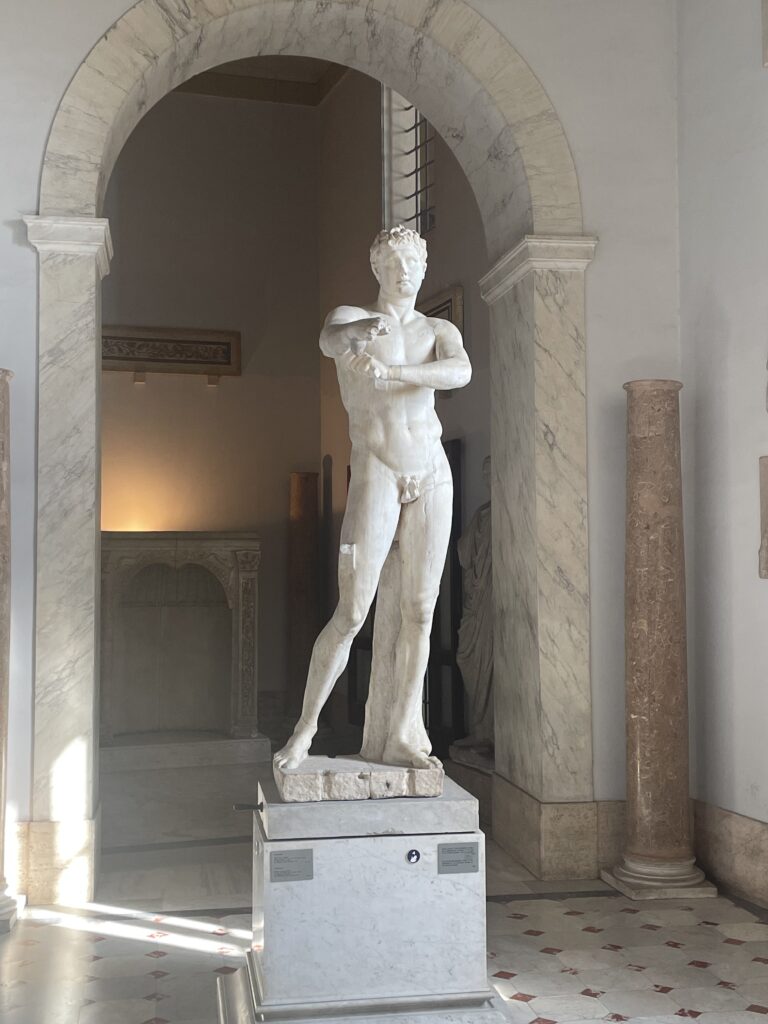
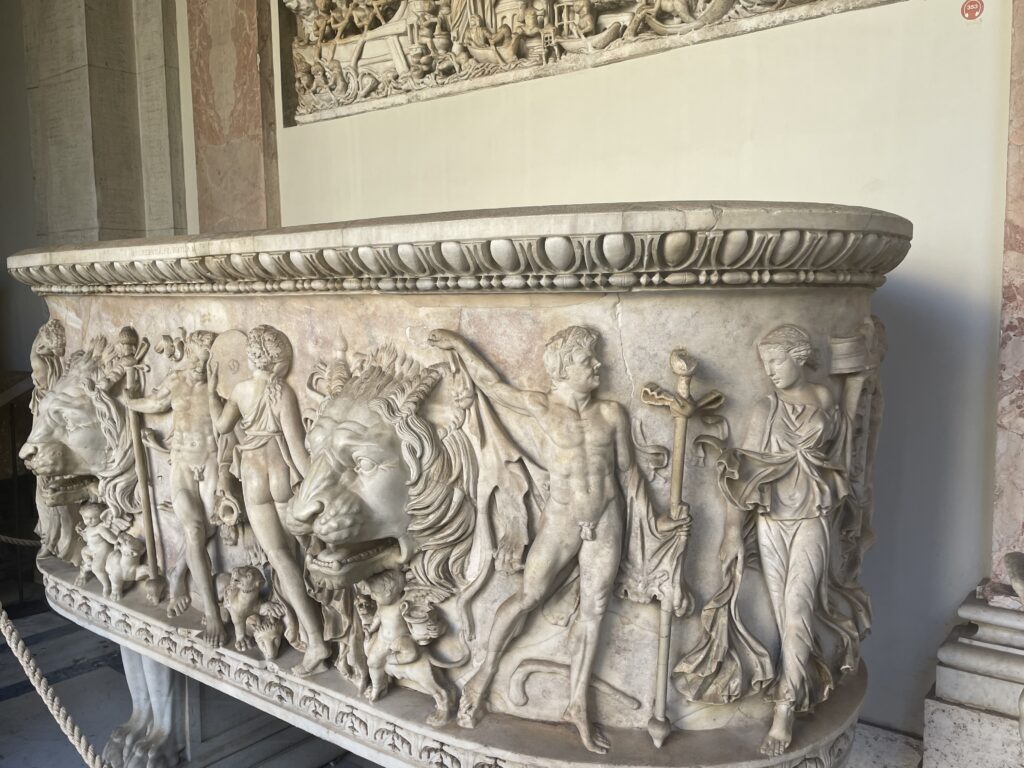

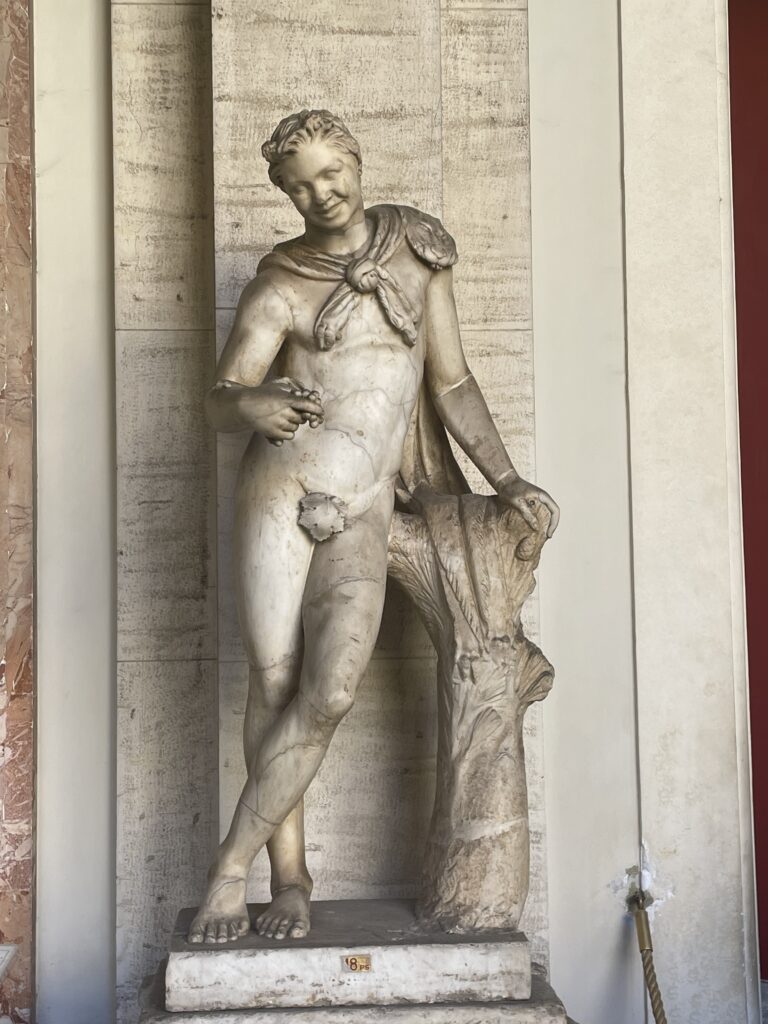
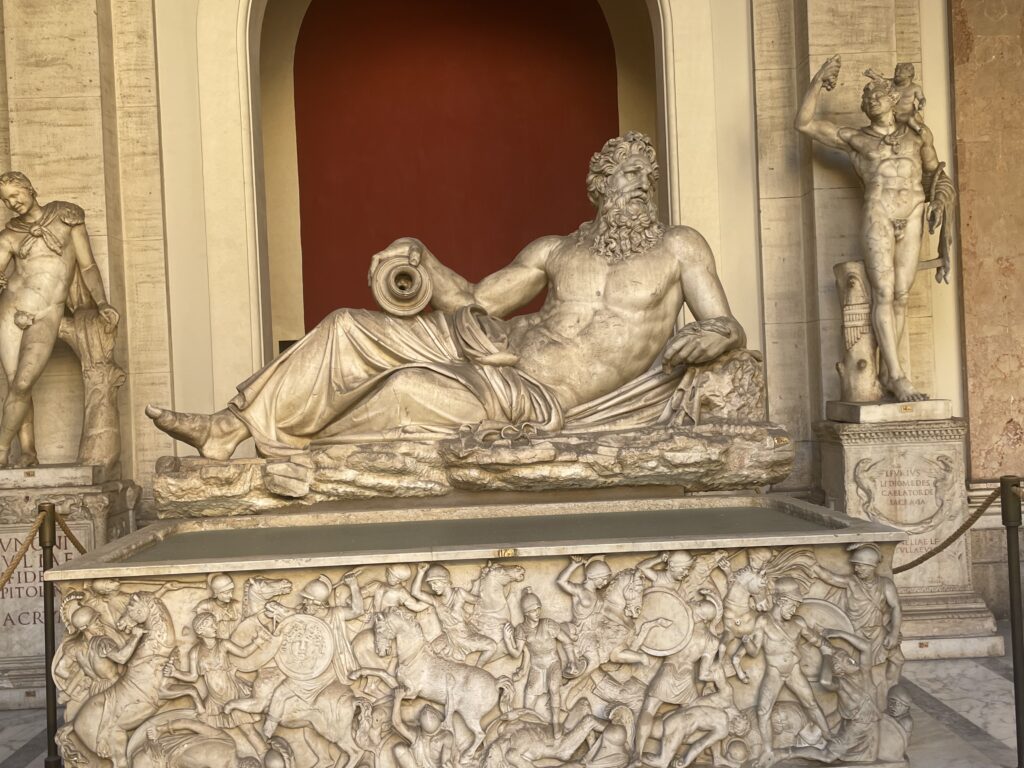
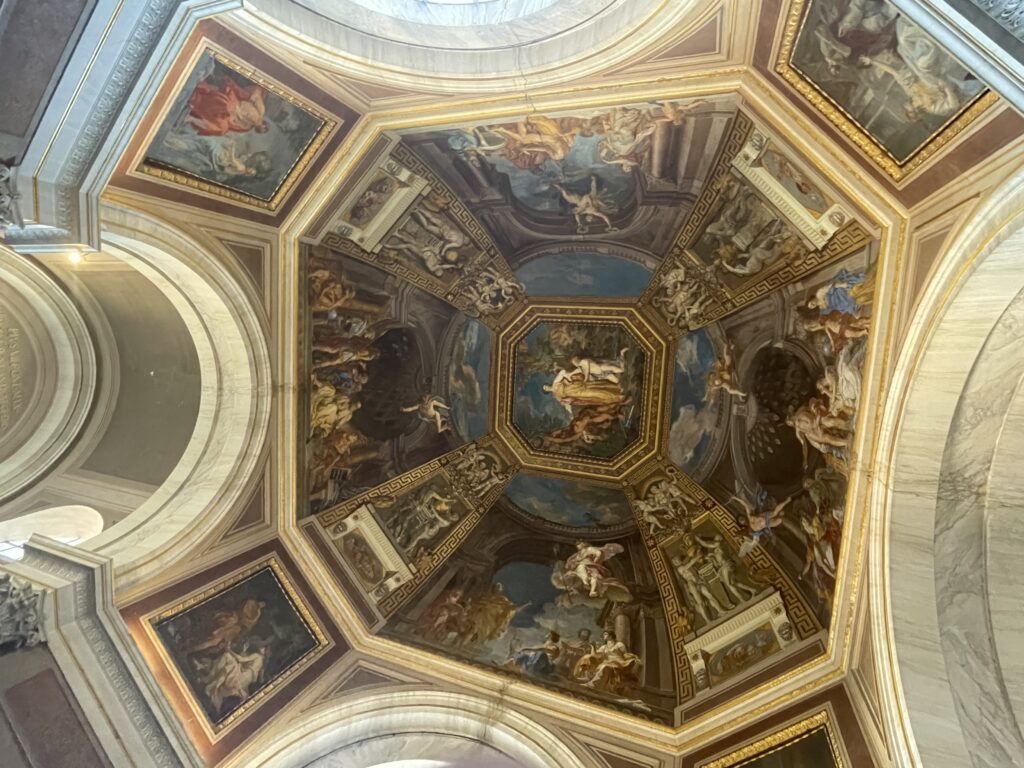
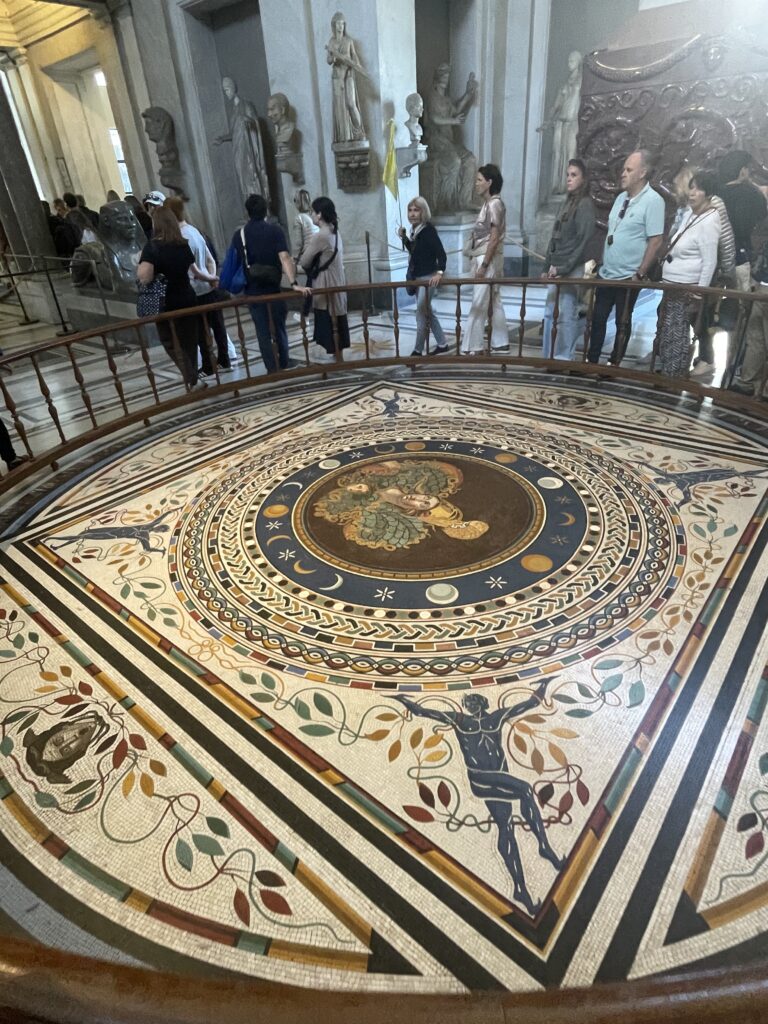
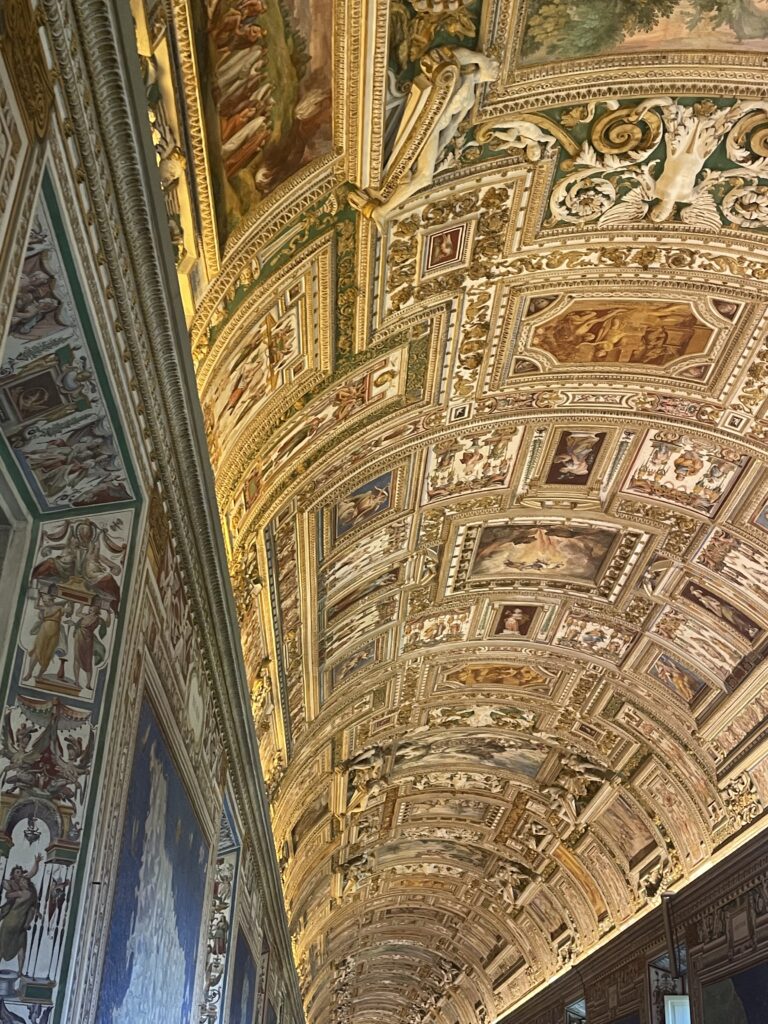
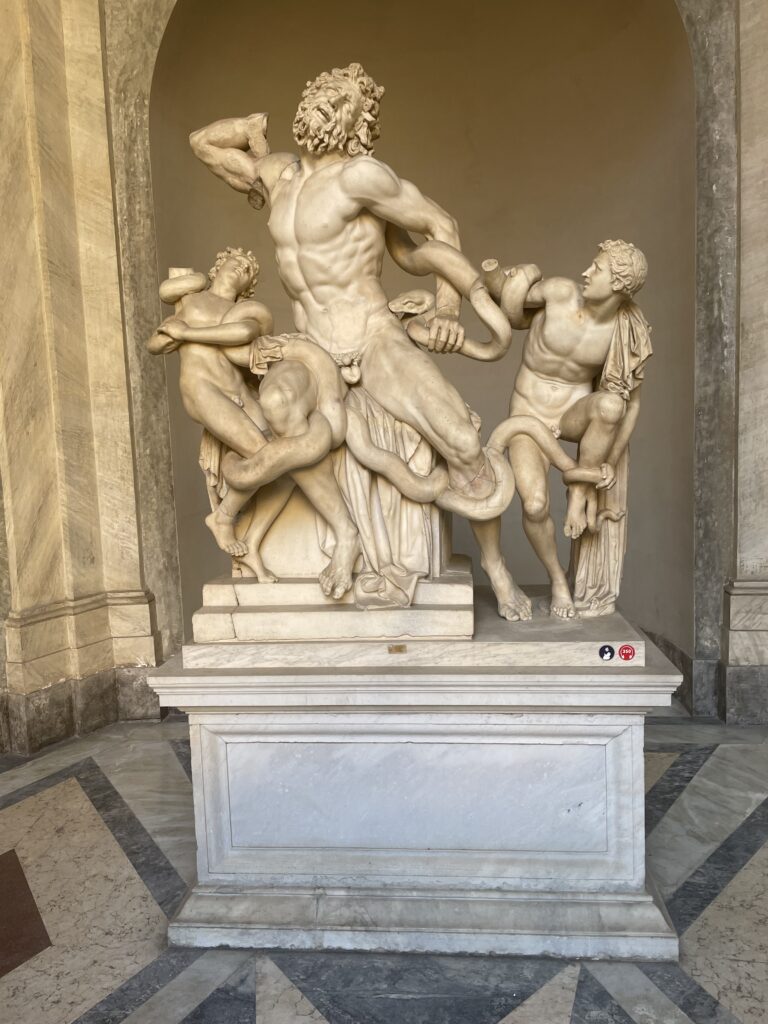
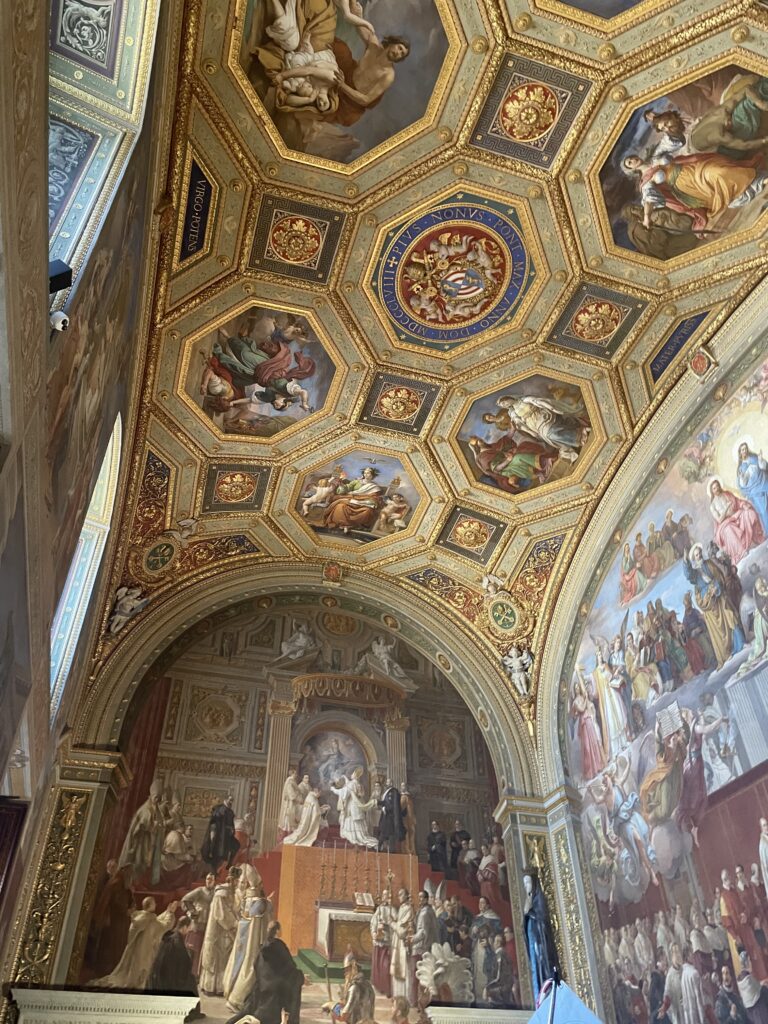
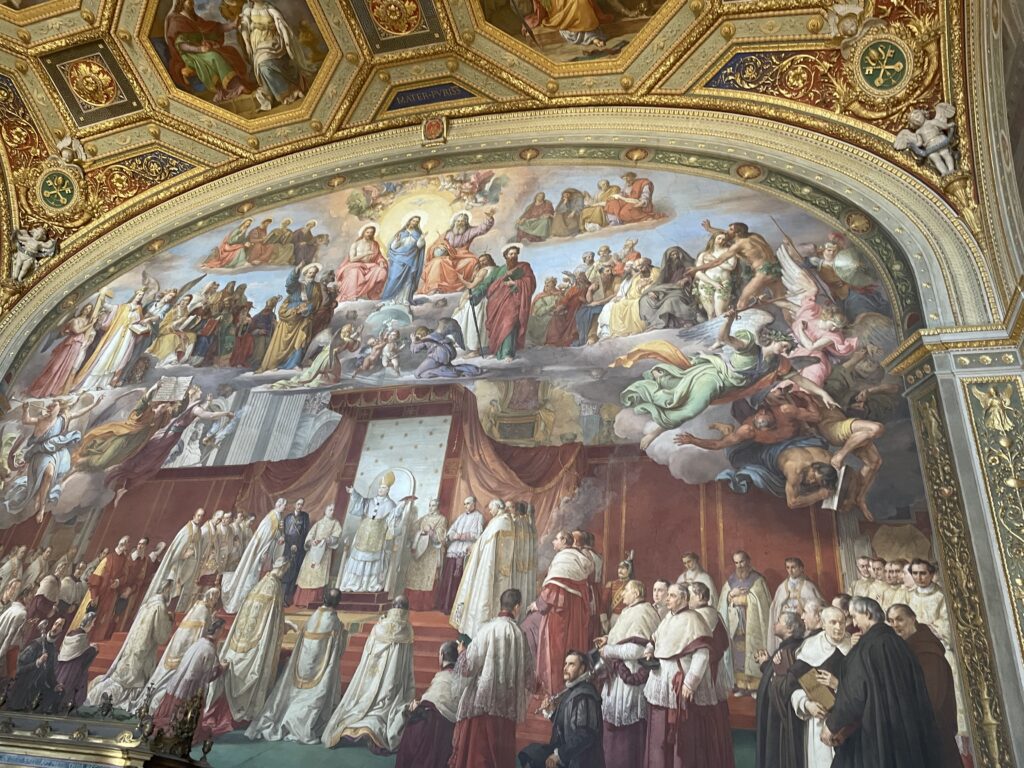
After the Sistine Chapel we got held up in a corridor and got to witness the changing of the Swiss Guards (in their ludicrously coloured uniforms) but, you guessed it…no photography. From here it was down into St Peters Basilica for a poke about and some photos.

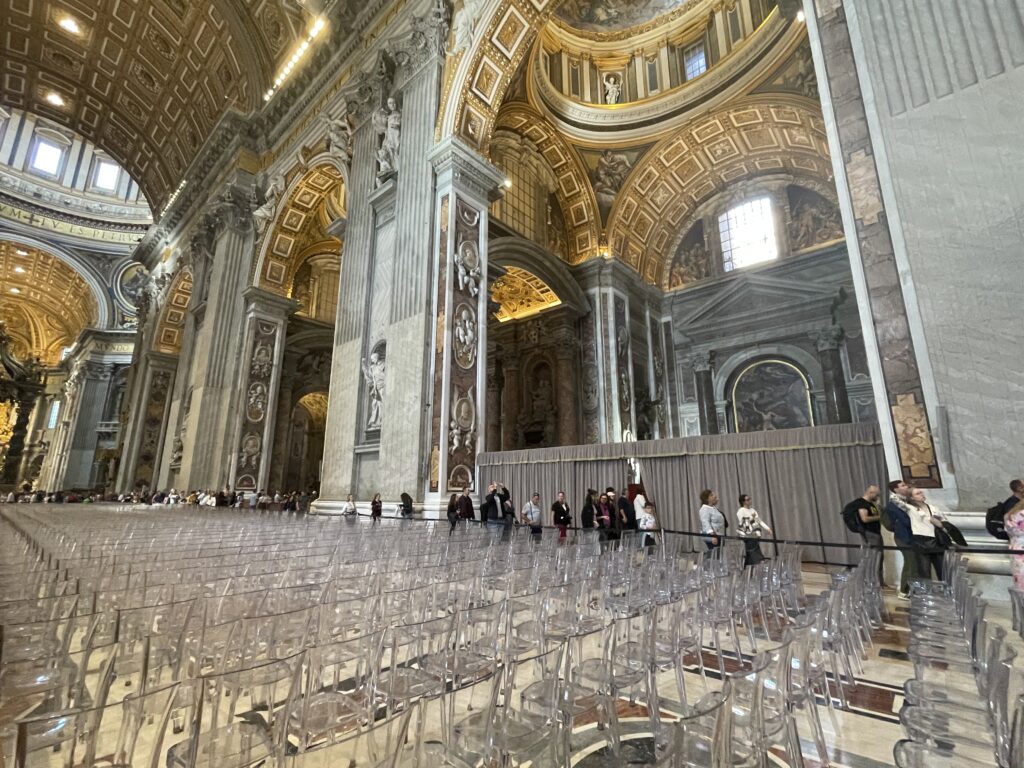

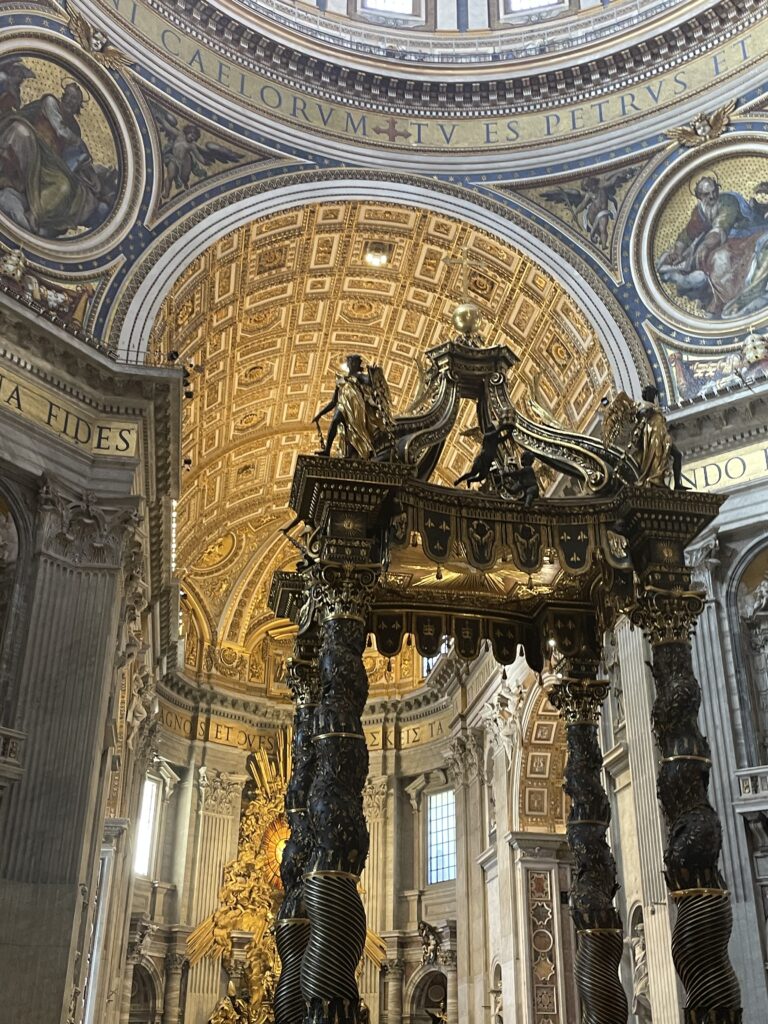


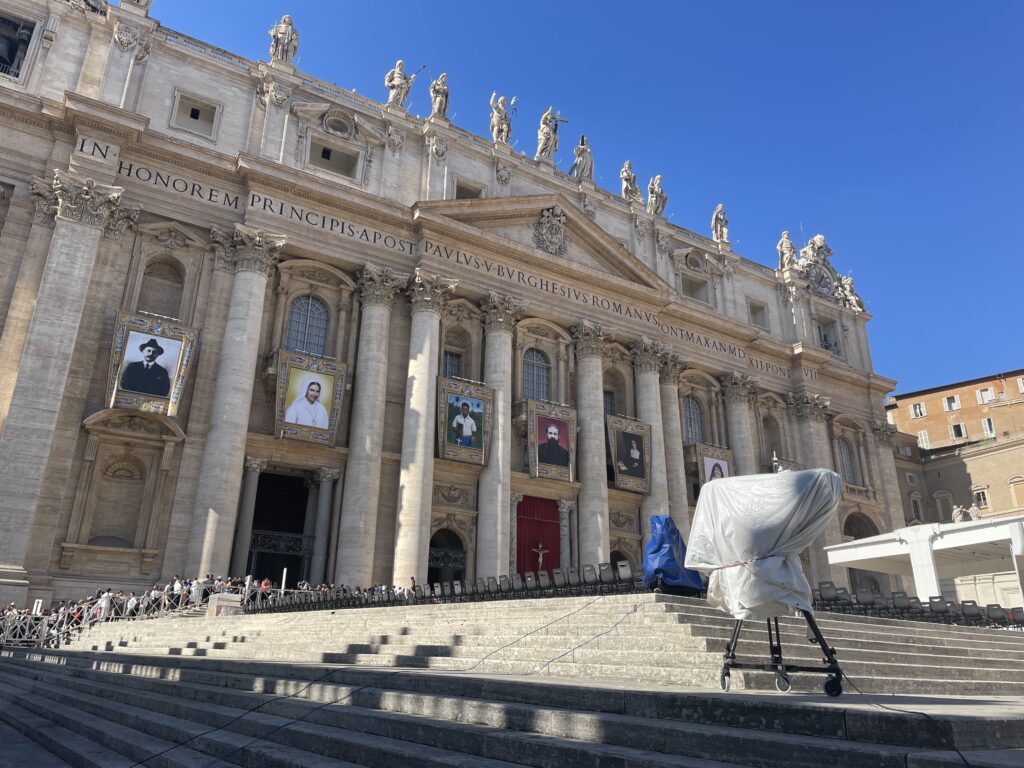
On my first foray here I climbed to the top of the base and then climbed the dome to overlook the papal gardens. The thought of doing this in modern times seems impossible. Maybe it was our crazy weekend choice, or maybe it is just the massive increase in human traffic in the area. This is quite simply the busiest place I have ever been (and it didn’t use to be this bad).
Getting about modern day Rome is akin to getting out of a major sporting event. You grab your possessions, enter the human traffic flow and just shuffle your feet until you eventually achieve your goal or find your way to a clear path.
After our early start (a recommendation for anyone who wishes to visit) it was mid afternoon and everyone was pooped. So it was back to the hotel for a rest, before a nice dinner and yet another early start the next day.
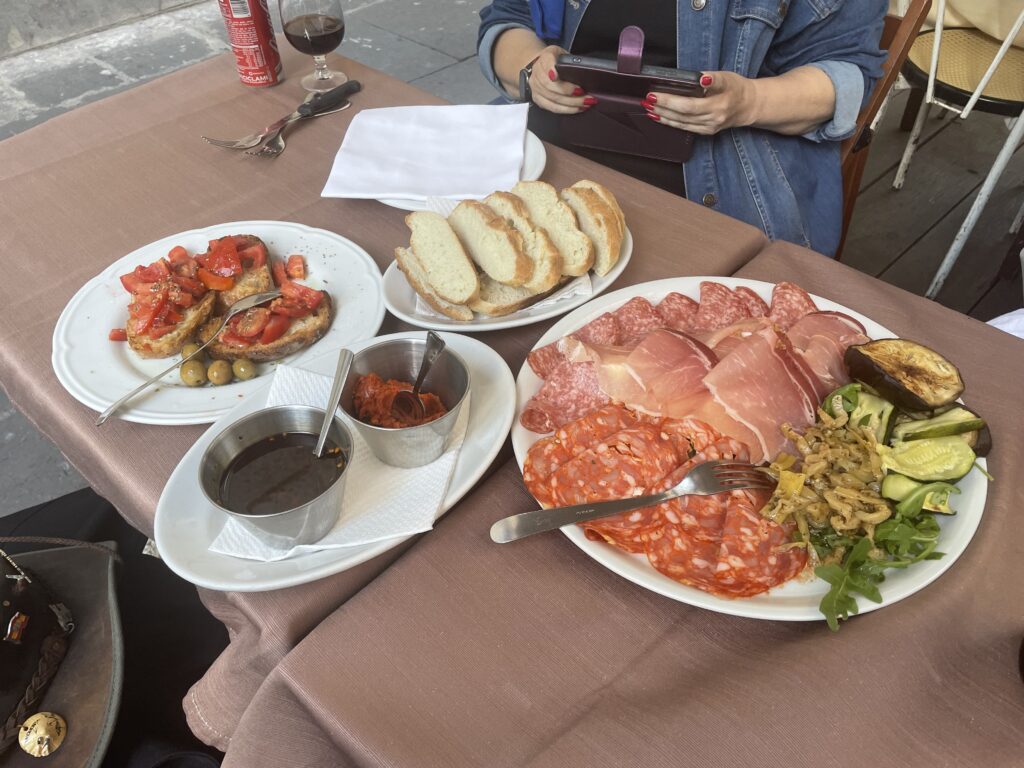
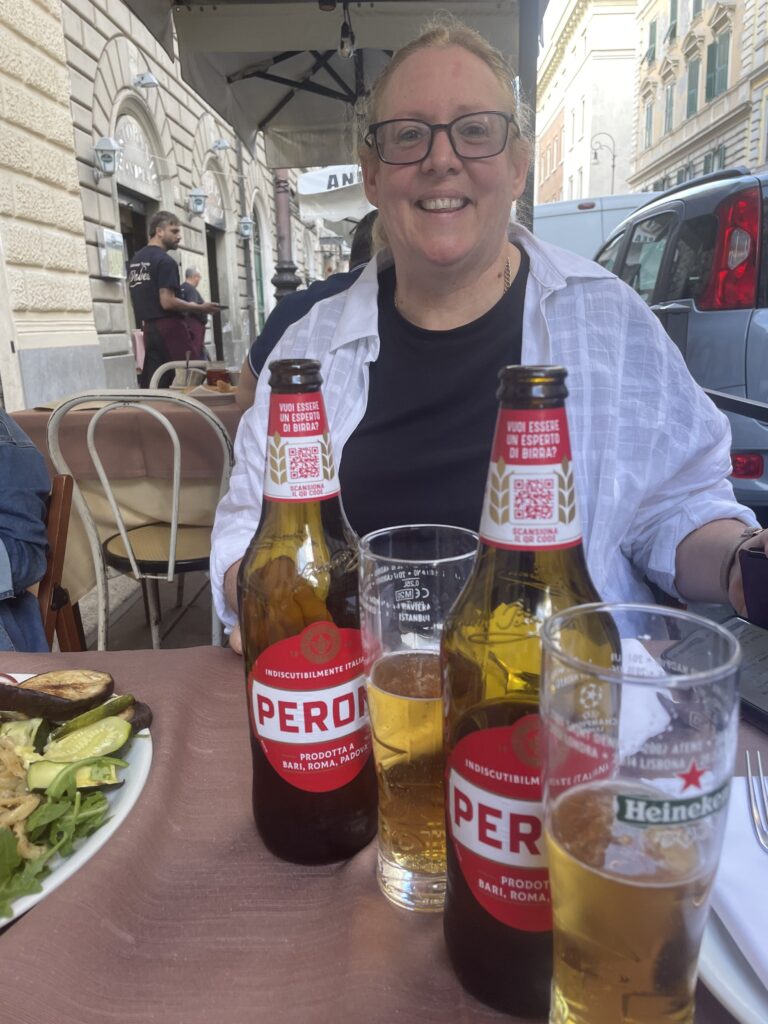
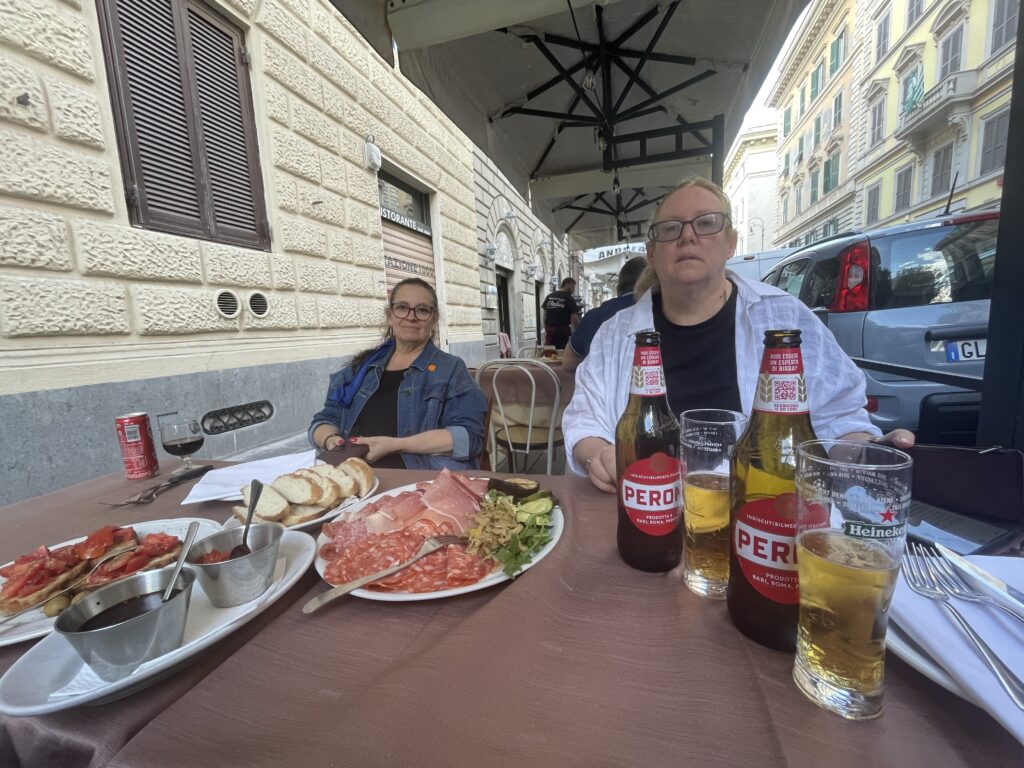
We were up early on the Sunday morning and made sure to go nowhere near the Vatican and Papal Mass. So it was on the Metro and off to see the Trevi Fountain. A bit like the Colosseum, last time we were here it was being cleaned and was covered in scaffolding. But not today, and our early start meant we had the place basically to ourselves.


A bit further on and we were in Piazza Navona (where our other sister (Lynn) used to live and her son was born). Some happy snaps and a wander about before heading down the alleys to find a statue of the monk Bruno (Lynn took an amazing photo of it back in the day). But on the day we were there it was surrounded by a busy and bustling Sunday market. Our chances of recreating the photo was nil.


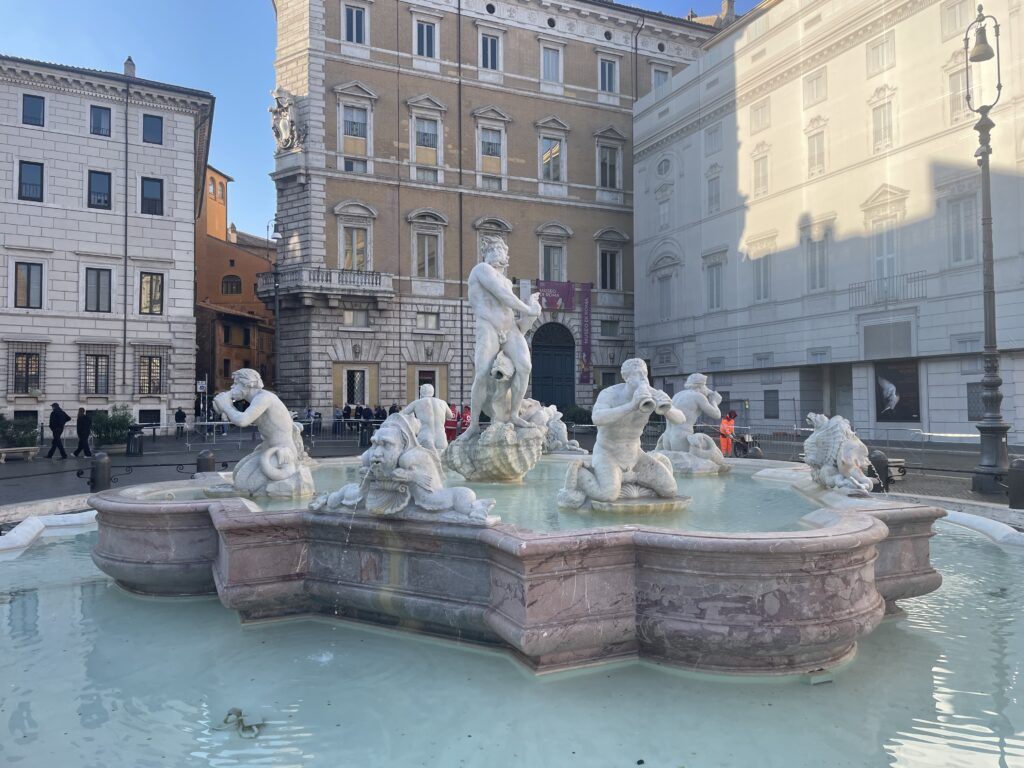
The Monument to Giordano Bruno, created by the Grand Master Mason Ettore Ferrari, was erected in 1889 at Campo de’ Fiori square in Rome.
It was erected to commemorate Bruno, (the Italian philosopher) who was burned there in 1600.
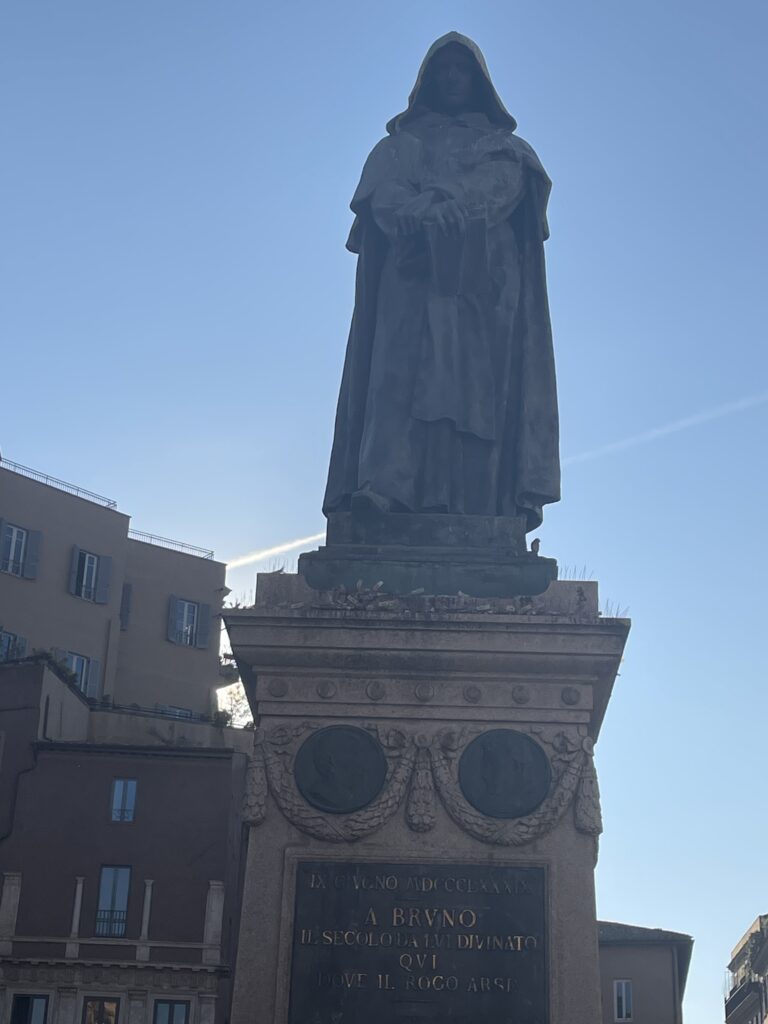
On our way back we stopped at Piazza Navona so that Karin could have her gelato (a tick box for her). We arrived just as the first runners (African) in the half marathon came sprinting past. And I mean sprinting. These guys had been going for an hour, but were at full tilt as they went past us.
We set up in the cafe, had a coffee and Karin had her gelato, while we cheered on the runners as they went past.
Did you spot the mistake?
We were now in a cafe with the running track between us and where we needed to be. In the beginning there was plenty of room to cross between runners. But by the time we had drunk our leisurely coffees, the also-rans were coming and there was a wall of humanity, that we had to cross. We managed to make it out of the cafe and got a few blocks away, but…you guessed it…the metro station was blocked by the track.
This became the story of the day. And for the next two hours we tried to find a way to get to the metro station (any metro station), while avoiding what had now become a massive fun run field, with zero gaps to cross. I darted across at one point, while a policeman screamed at me, (leaving Jill and Karin a window to cross) while I waved my arms about saying no habla. He was unimpressed.
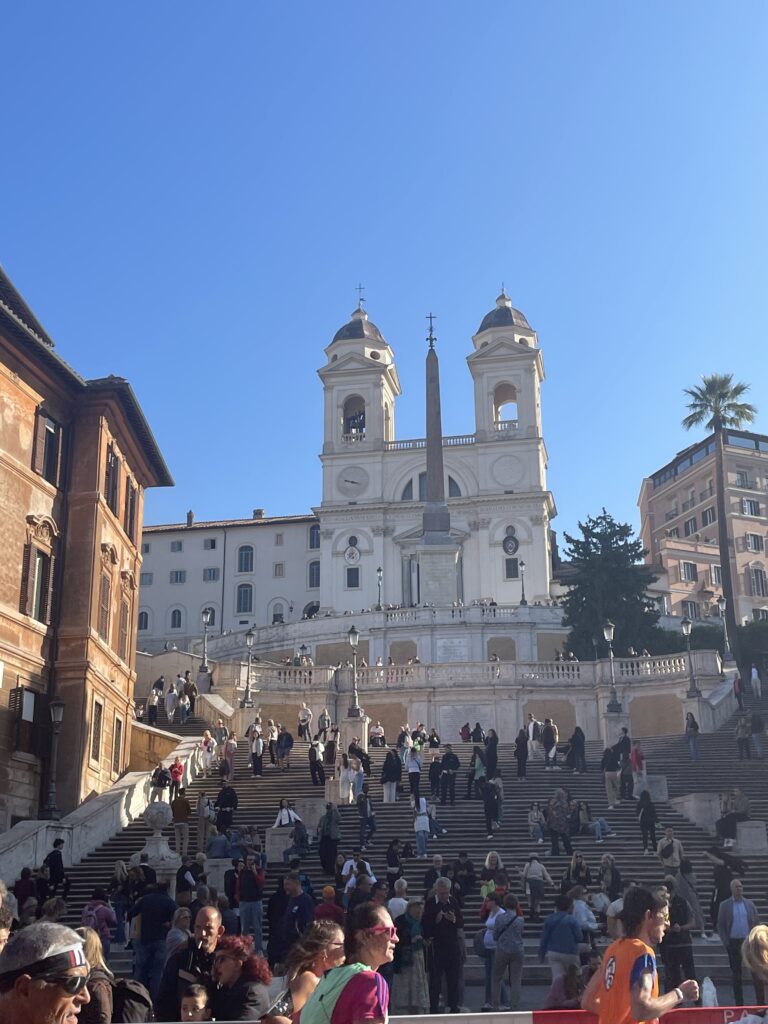
But for all of that, we found ourselves at the bottom of the Spanish steps (wanna guess?) on the wrong side of the runners.
We tried on multiple occasions to cross to no avail. I eventually joined the race, jogged with them and crabbed my way across, Jill did similar and made it.
Karin was the last to cross and rather than the crab move she tried a more direct route. This led to a squark, some waving of arms and now it was her turn to be yelled at in Italian.
Anyway we were across, and the metro station was in sight. We had walked (and jogged) way further than we had inten
Venice
Venice is built on a group of 118 islands in a lagoon in the Adriatic Sea that are linked by over 400 bridges. It has no roads, just canals. The Grand Canal and Piazza San Marco are your first introduction to the place and are the centre of all tourist activities.
With its Venetian Gothic architecture, Renaissance and Baroque buildings, wide piazzas, and narrow canals, Venice is often described as one of the most beautiful cities in the world.
Grand Canal thoroughfare – lined with Renaissance and Gothic palaces. The central square, Piazza San Marco, contains St. Mark’s Basilica, which is tiled with Byzantine mosaics, and the Campanile bell tower
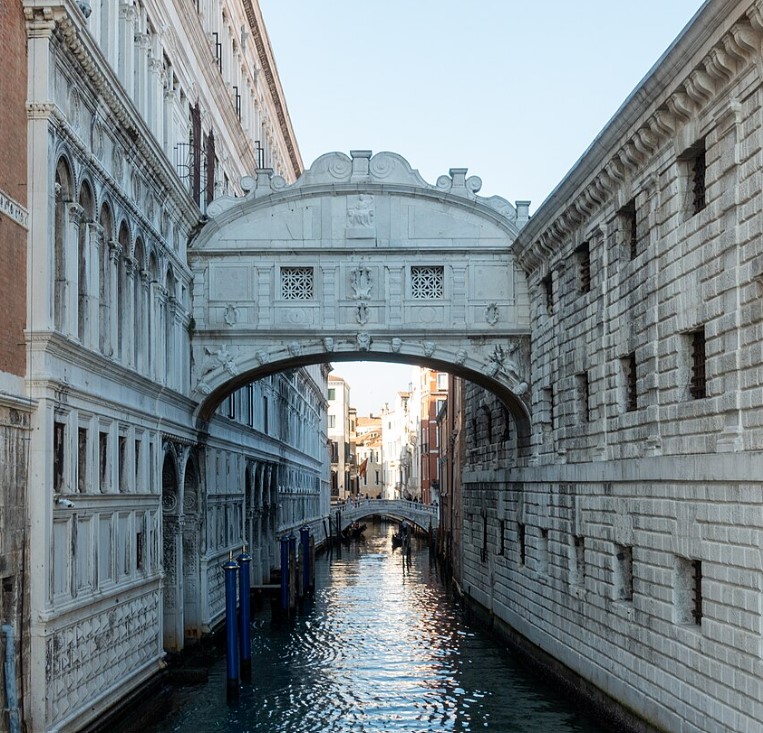
Bridge of Sighs
Murano glass is world-famous for its quality, craftsmanship and range of colours. The island of Murano boasts a monopoly of quality glassmaking for more than 700 years. It was the home of perfecting glassworking techniques that are still employed by the local glass artisans today.

Milan
Milan for us was a debacle. Back in the day before accurate maps on phones etc, our accommodation was meant to be in the heart of everything and ended up being miles away form anything. This meant that our walk into town (meant to be about a kilometer) ended up being almost 10 (one way). So by the time I had arrived I was hot, tired, and severely pissed off.
Our first port of call was the Galleria Vittorio Emanuele II where by this stage I just needed a sit down and a cold drink. Jill did warn me, but I was tired and pissed off. So I sat, had a coffee and a cold drink and regrouped for what was to follow. Sadly, this is possibly one of the most expensive shopping centres in the world and my sit down cost us well over $50.



Wiki describes Milan’s layout as having streets either radiating from the Duomo or circling it. The original basilica was built in 355 and was dedicated to St Thecla. An adjoining basilica was erected in 836 but after a fire in 1075, they were rebuilt as the Duomo. The Gothic Duomo di Milano cathedral took almost six centuries to complete.






Our trip saw us not only go into the Cathedral but also to climb the stairs and walk atop it. All in all a great experience, apart from the debacle that was our accommodation.
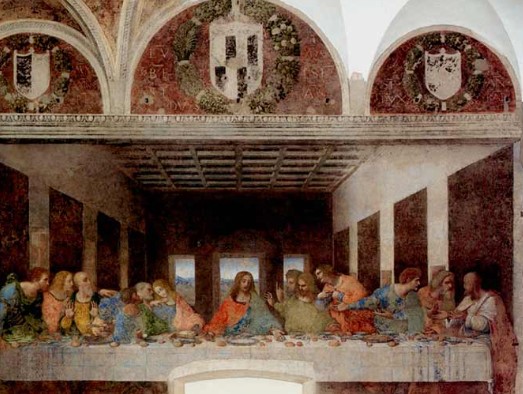
The convent of Santa Maria delle Grazie hosts one of the most famous attractions in the world: Leonardo da Vinci’s Last Supper. Work began on the Last Supper in 1496 and he completed it in 1498.
Pompei and Vesuvius
The city of Pompeii was discovered in the 16th century. It was originally destroyed in 79 CE when the nearby Mount Vesuvius, erupted, covering it in ash and volcanic debris. The city was buried quickly by at least 6 metres (19 feet) ash and therefore preserved it for centuries before its discovery.






You can do this in a day trip from Rome, via train, for about 25 euros. It involves a 90 minute fast train ride to Naples (or Salerno if you prefer) and then a ride on the regional service (every 40 minutes or so) from Naples to Pompeii. As a tip, if you sit on the left-hand side of the train you will get great views of Mount Vesuvius on the way.
Naples

Rather than do a Rome day trip to see Pompeii and Vesuvius we chose to head to Naples and hang out here for a few days.
Our first introduction was to Piazza Garibaldi the main heart of town and where the train drops you off. I’m not sure what it is like today, but when wee were there it was pretty filthy, disgusting and not safe for the everyday traveller. In fact, in researching for this update, many of the reviews still referred to it in this manner, despite the addition of a new underground shopping mall.
By all accounts the place has remained a gathering point for vagrants, street sellers and hawkers and is best avoided at night.
On the other side of Vesuvius was another city, Herculaneum, that was smaller than Pompeii and had less destruction. Herculaneum was covered by a 20 meter thick lava flow and the buildings are much more preserved.

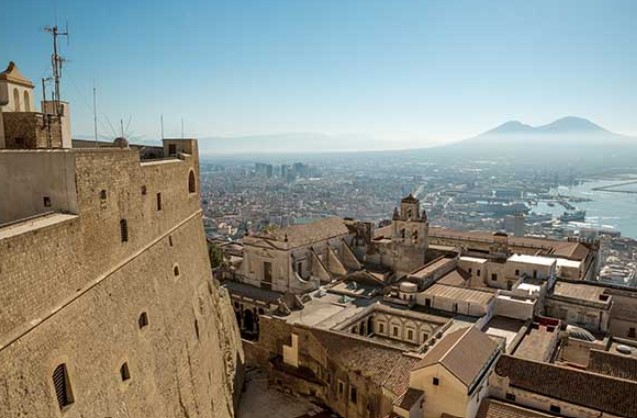
Castel Sant’Elmo is a castle sitting on Vomero hill, overlooking the center of Naples. The castle has a large moat in the shape of a hexagonal star. And importantly, you can get there in a funicular and don’t have to hike the hill.
Castel dell’Ovo or the ‘egg castle’ was first built in the 1st century BC as a strategic stronghold overlooking the Bay of Naples. Over the centuries, the castle suffered a lot of damage from wars. In 1975 it was finally decided to restore the castle.
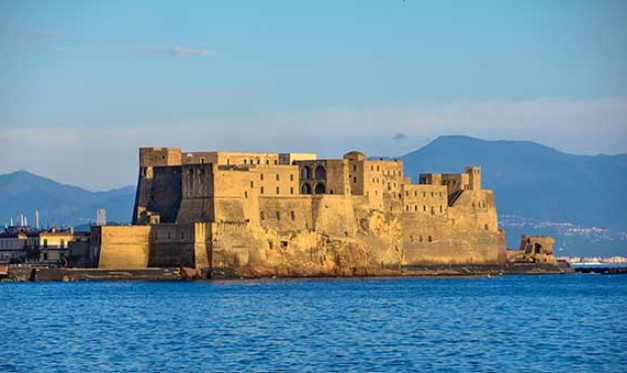
According to legend, the Roman poet Virgil laid an egg in the foundation of the castle, if the egg broke, the castle would perish. Castel dell’Ovo is still standing, so i guess the egg is still whole.
But the big reason to come here was the fact that pizza was first invented in Naples. Originally it was designed as a a fast, affordable, tasty meal for working-class Neapolitans on the go. Originally known as ‘Pizzaiola’, the dish consisted of dough, tomatoes, mozzarella cheese, olive oil, sometimes Parmesan cheese, and fresh basil.

We settled in at our local pizza joint and were blown away at how good it was (especially the dough). So much so that Jill made her way into the kitchen and was shown how to make it, true Napoli style.
We had both been to Naples before, Jill raided the kitchen of a pizzeria (Naples is the home of Pizza) to get the secret to making the perfect base (which they were happy to share). And after a general amount of wandering about town we also spent a day on the train to visit the nearby Pompeii and Herculaneum.
But this time it was just about hanging out and eating the food. While walking up the hill I spotted my ultimate weakness (sfogliatella) in a bakery and had to stop.

The first thing that you see when arriving at the port is the Castel Nuovo is a medieval castle directly in front of Piazza Municipio and the city hall (Palazzo San Giacomo).
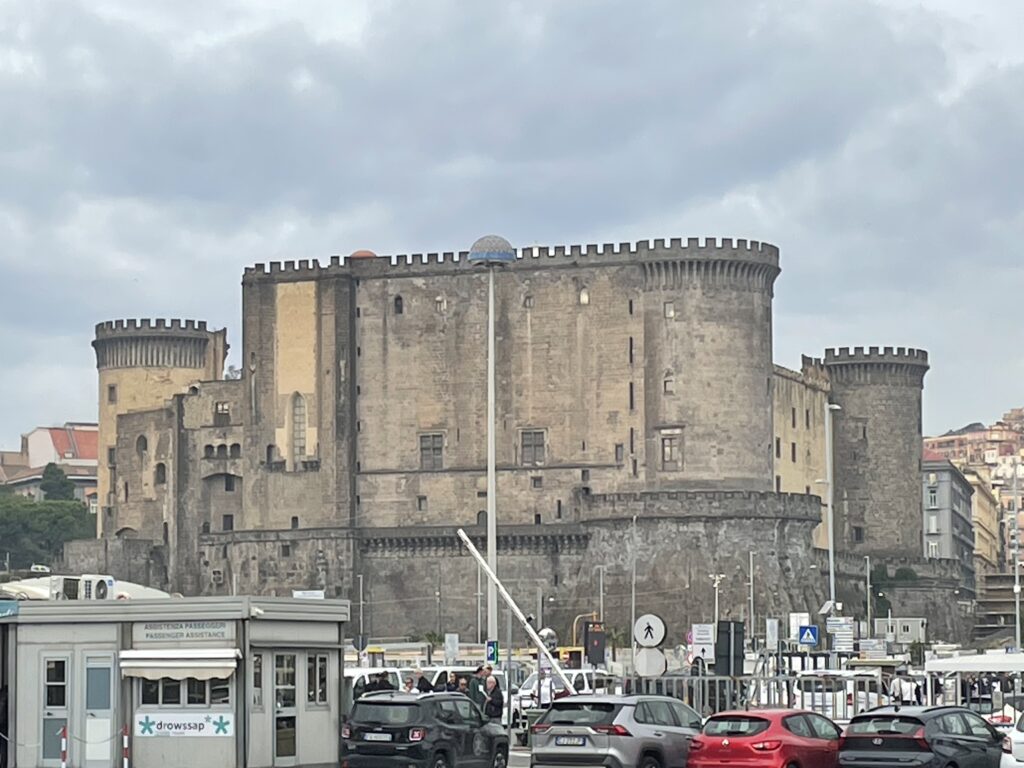


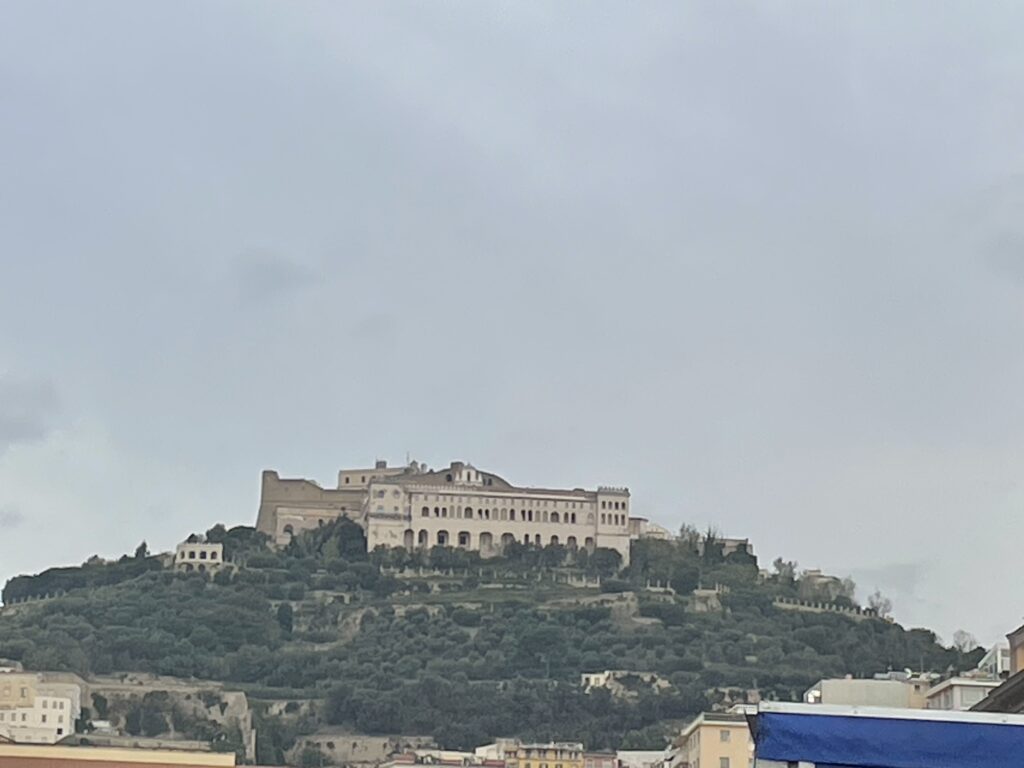

On our way up the hill we came across one of the flashiest shopping malls that you will ever see (Galleria Umberto) sitting directly across from the San Carlo opera house. Which is the oldest continuously active venue for opera in the world, having opened in 1737, decades before either Milan’s La Scala or Venice’s La Fenice.
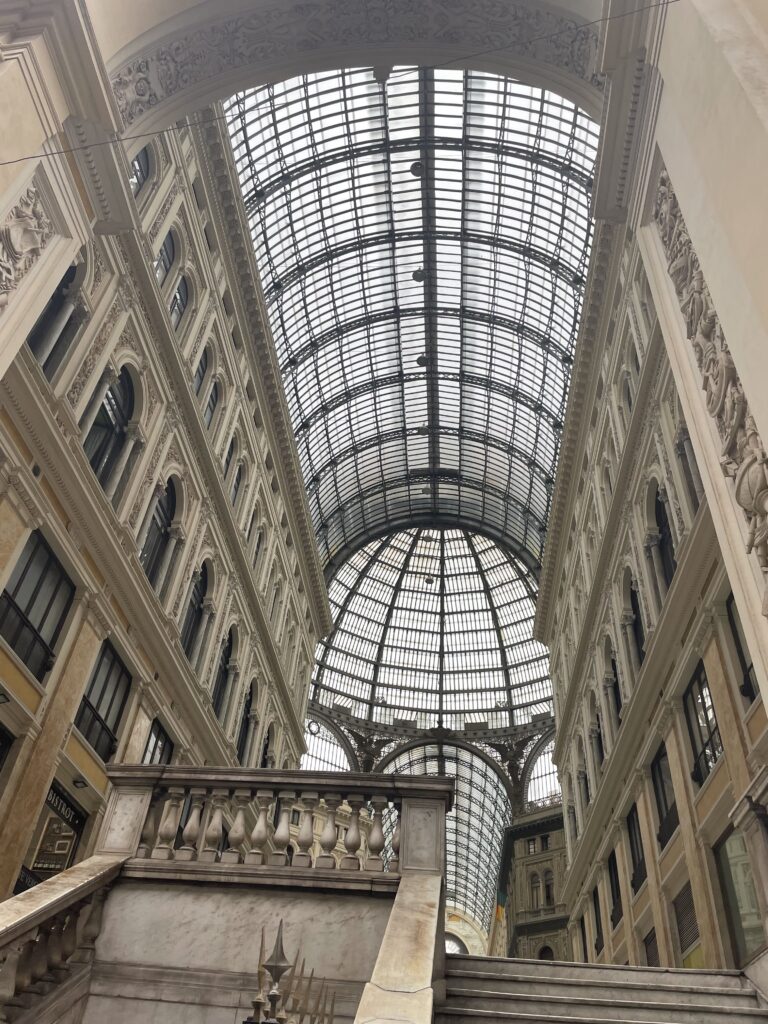

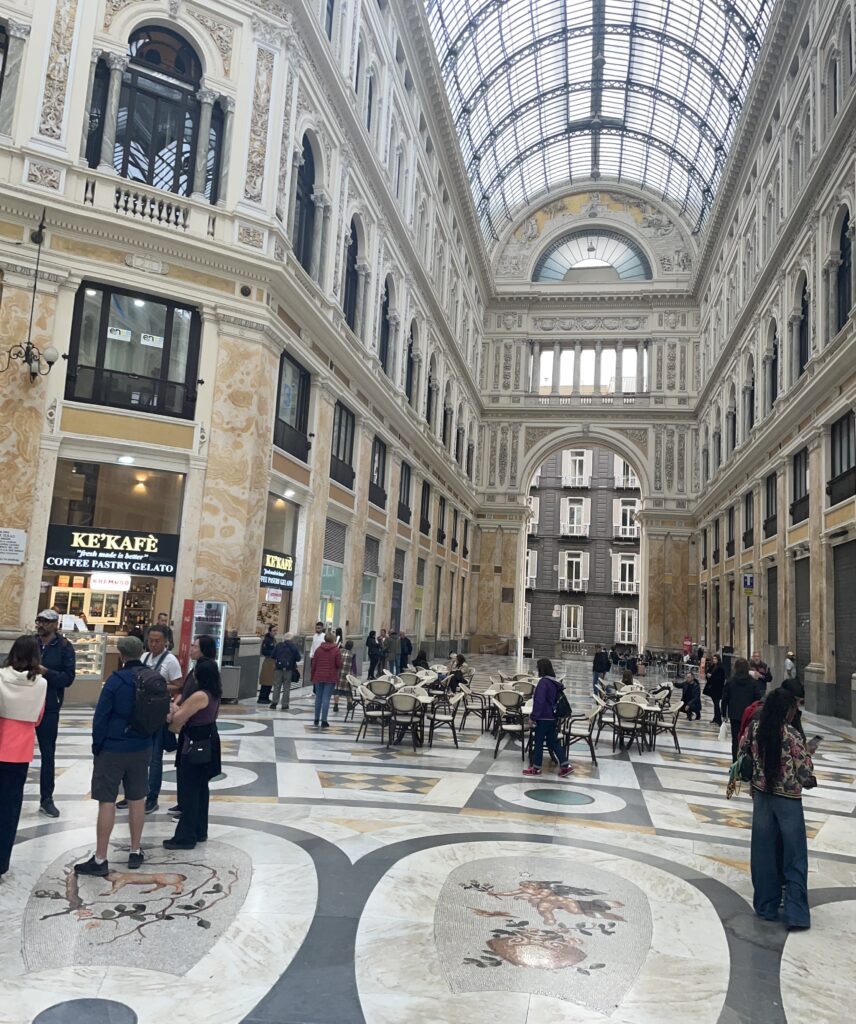

Directly beside the opera house is the Royal Palace of Naples that fronts the Piazza del Plebiscito (named after the plebiscite taken on 21 October 1860, that brought Naples into the unified Kingdom of Italy under the house of Savoy.
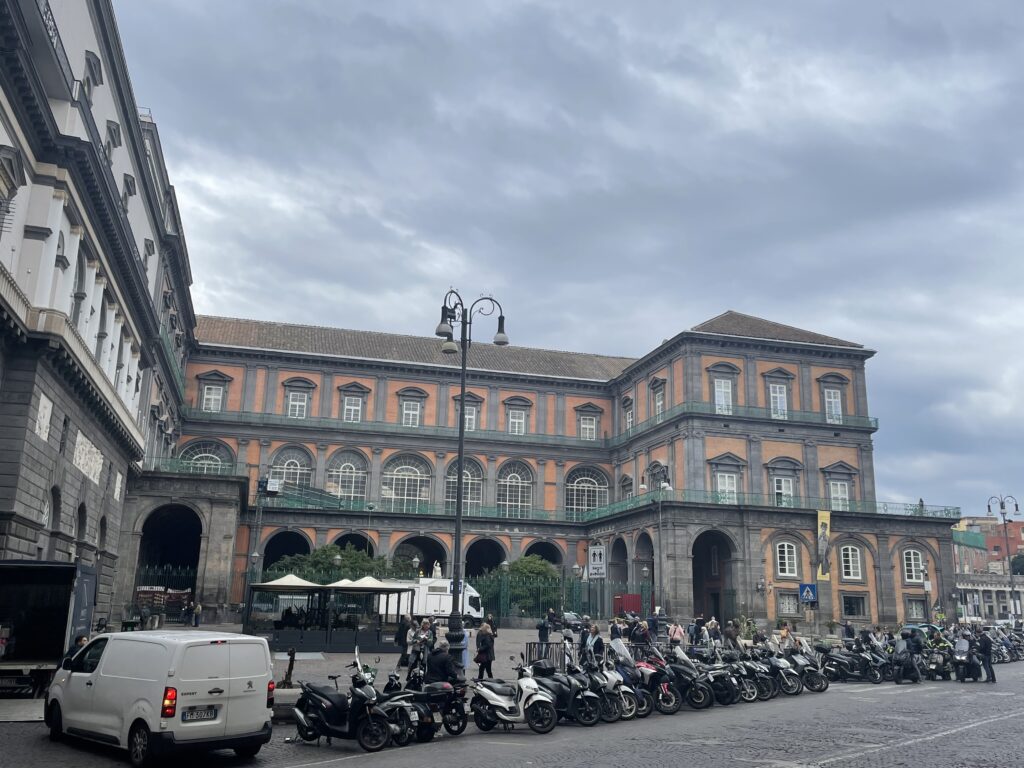
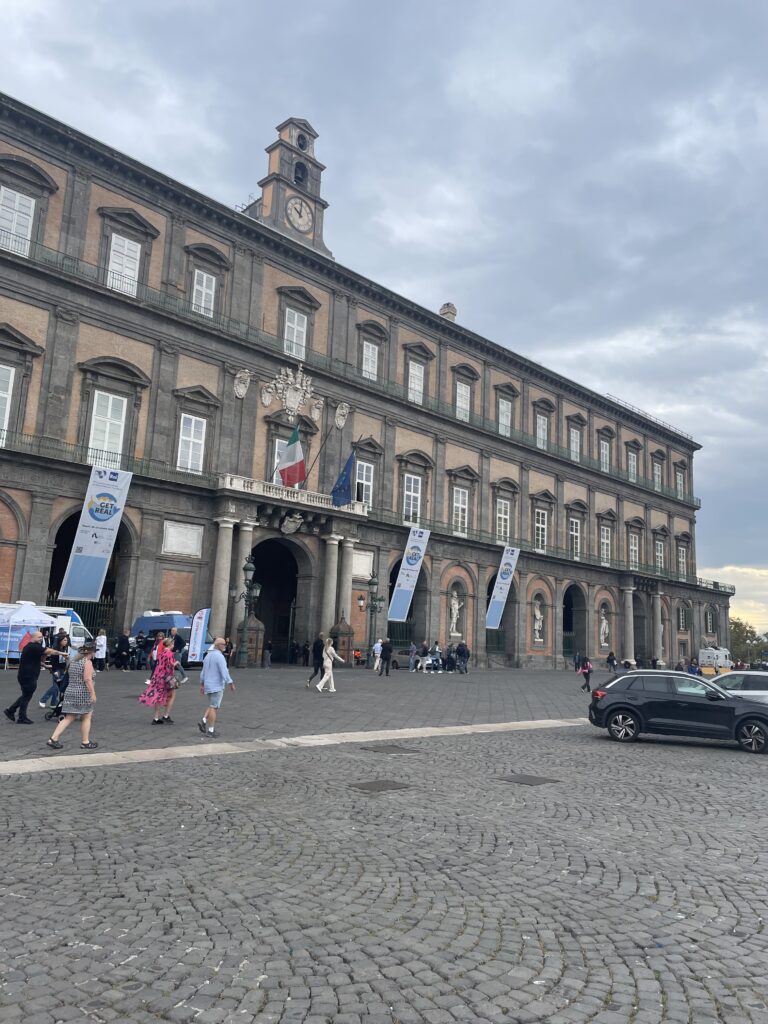
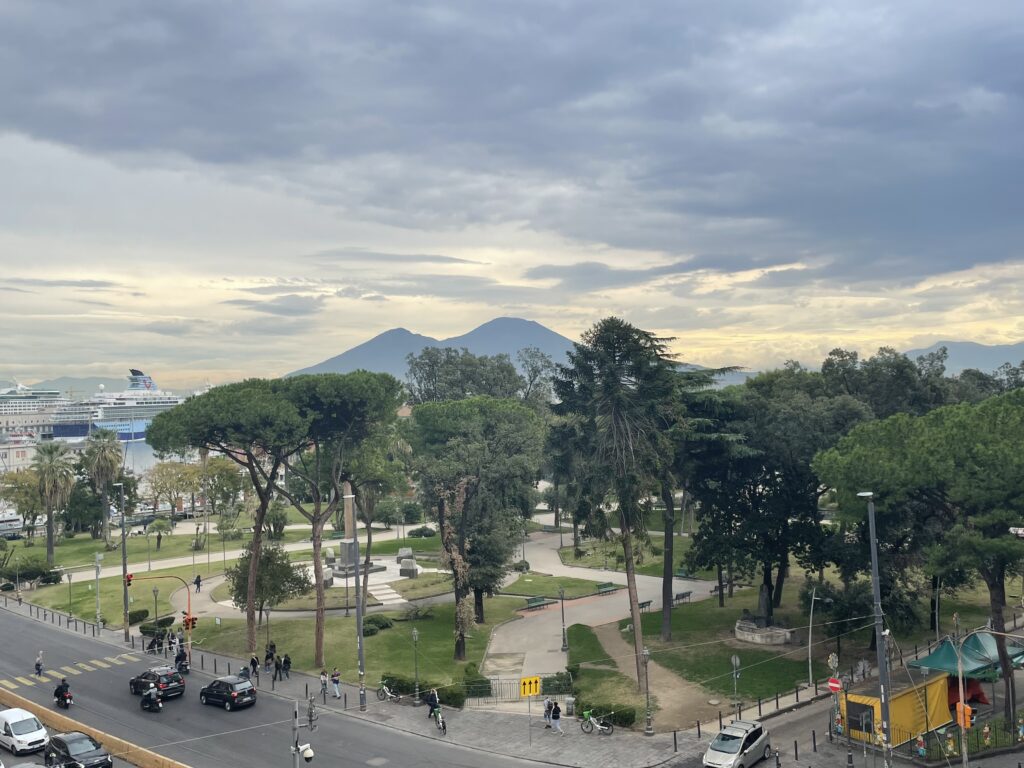
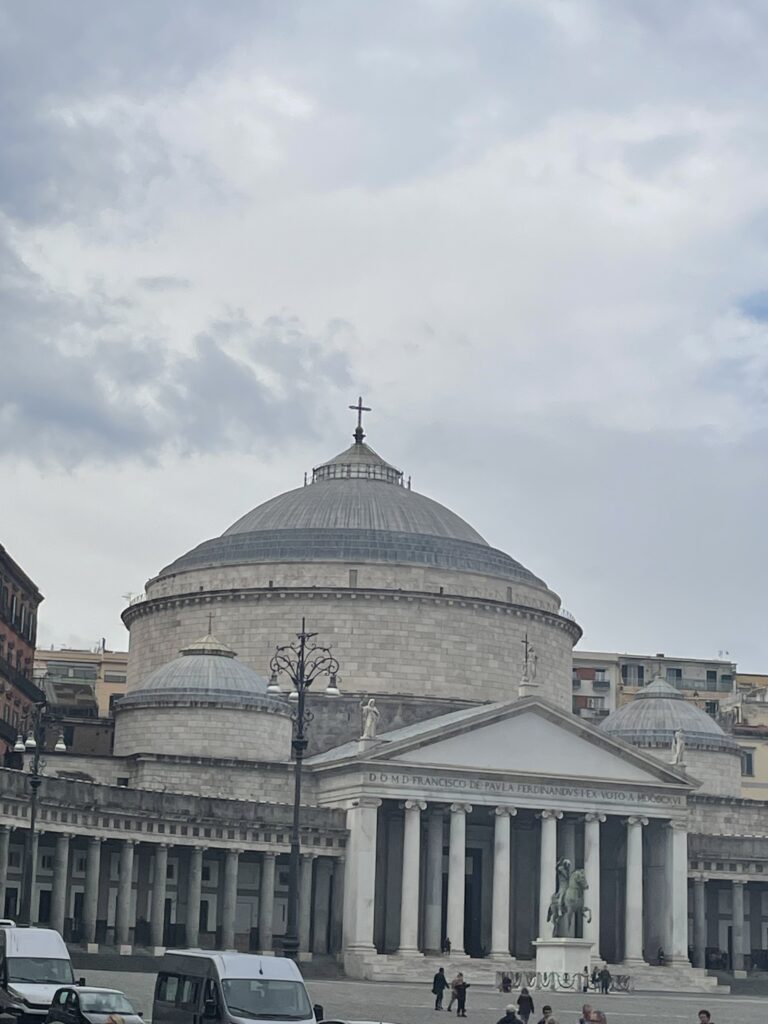
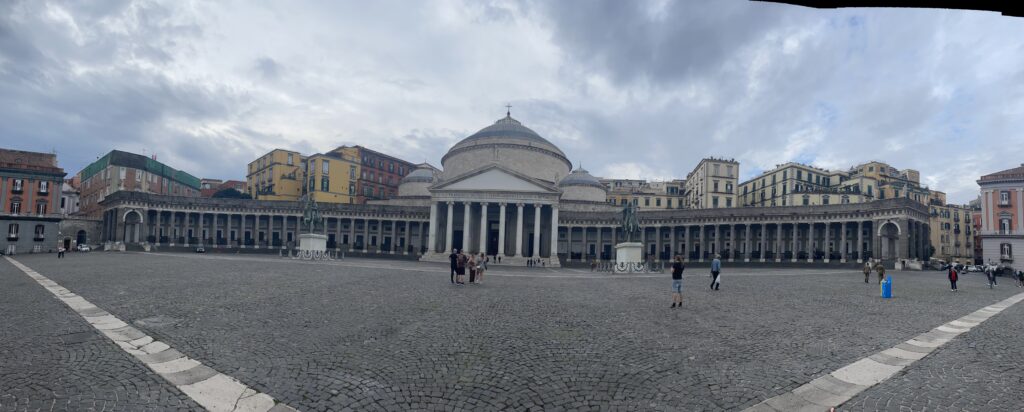
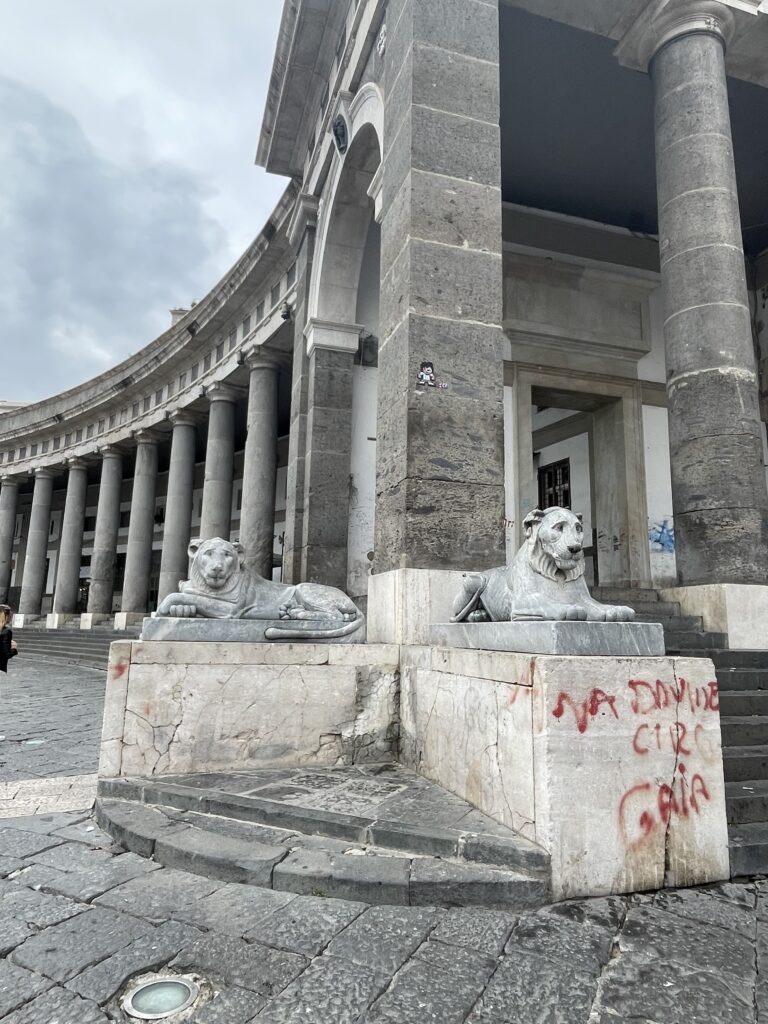
We kept climbing the hill, following Jill who had a plan of where the best pizza could be sourced, After about an hour of uphill walking, past dog turds at every turn (apparently picking up after your dog in not a thing that Italians do) when the heavens opened. We found shelter at an overpriced (but dry) café where some coffee and nibbles briefly staved off the drowning that would eventually follow.
After a period, it was clear that there would be no let up to the rain and that our only options were to brave it. This saw Patrick spending 10 euros for the worst umbrellas that were ever made (did not even make the day), Jill had her Fluro pink rain jacket (which ended up leaching the colour) and I just got soaked. But we made it down the hill and into a pizza joint, for some pretty spectacular pizzas.
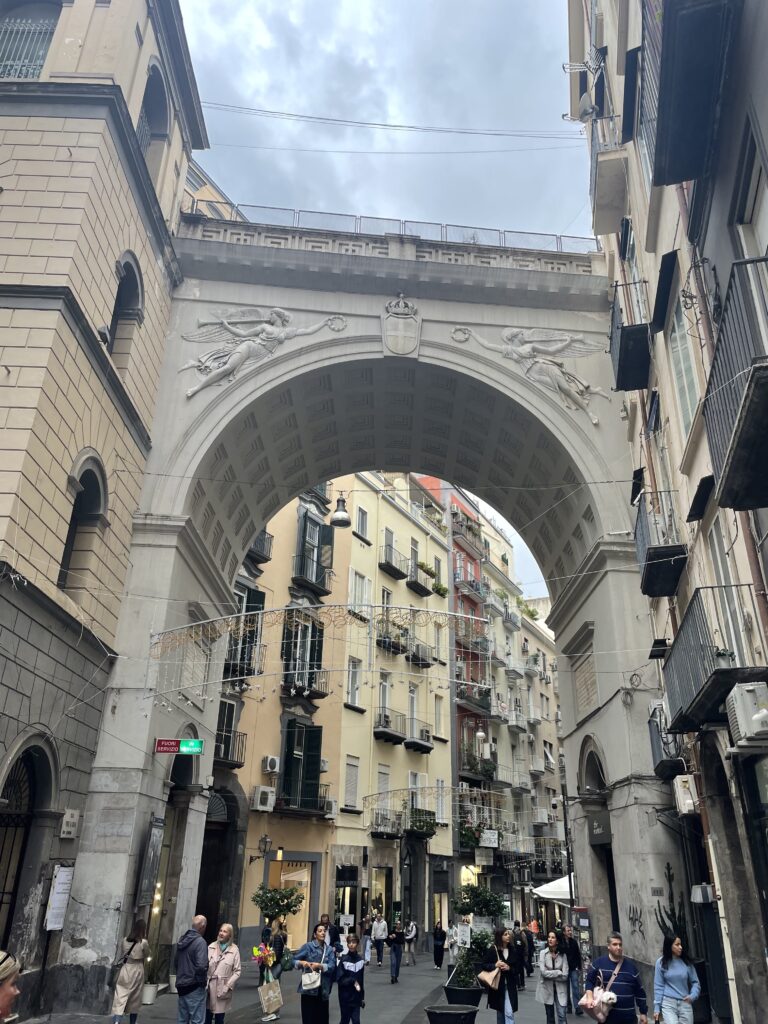
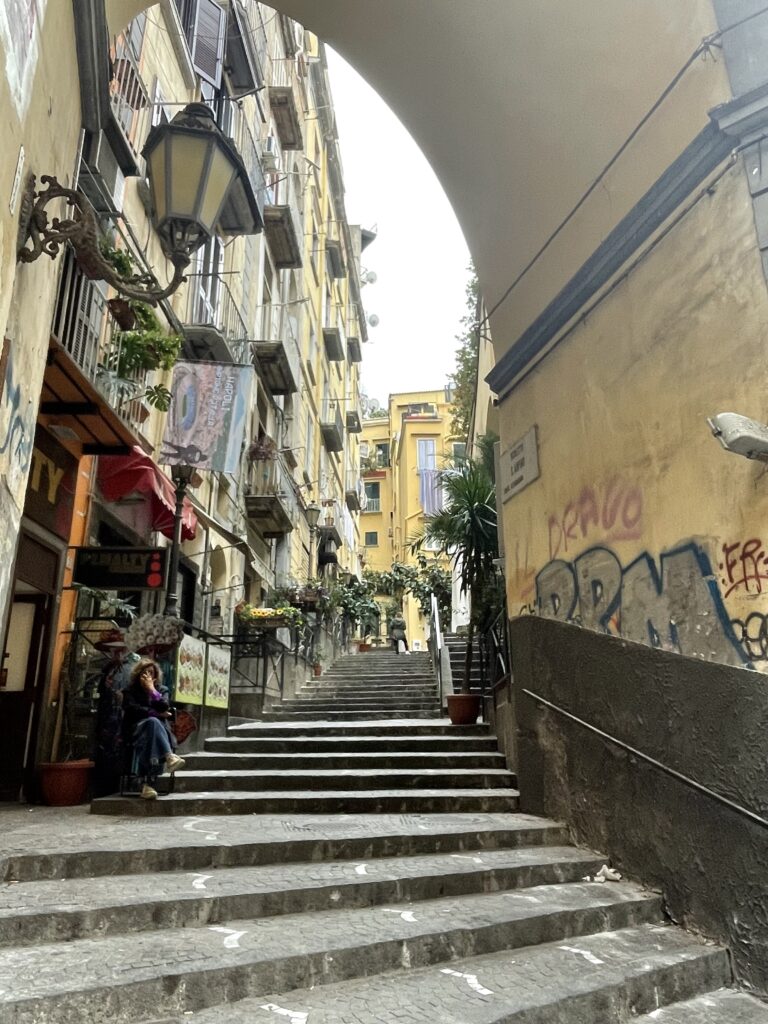


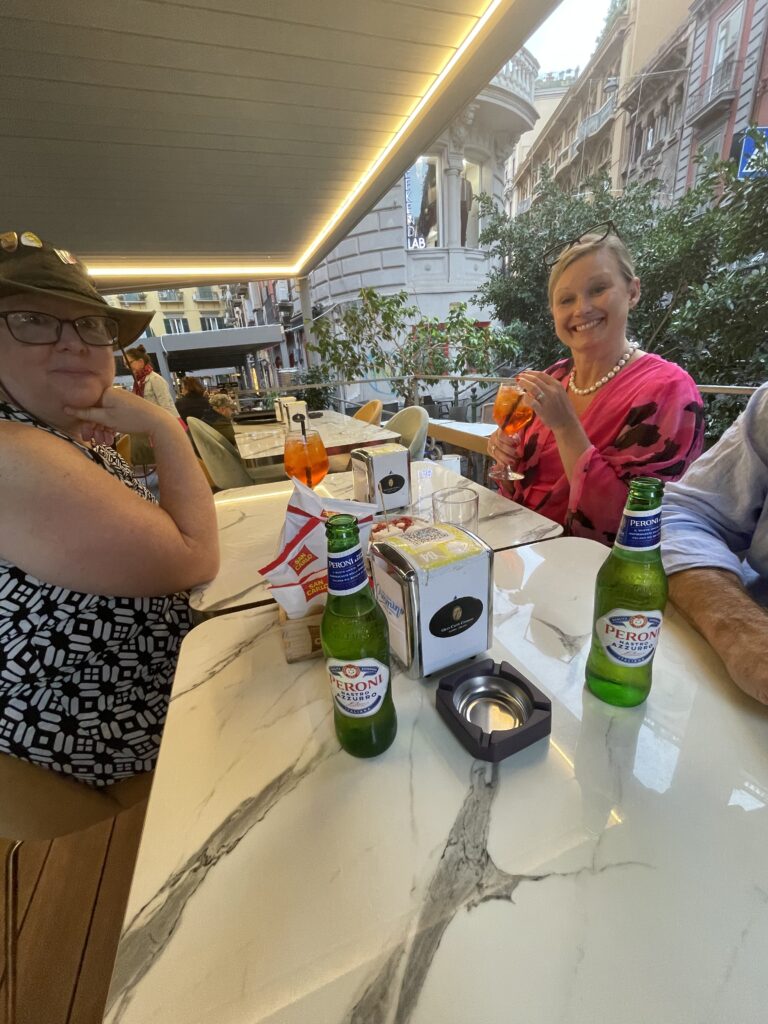
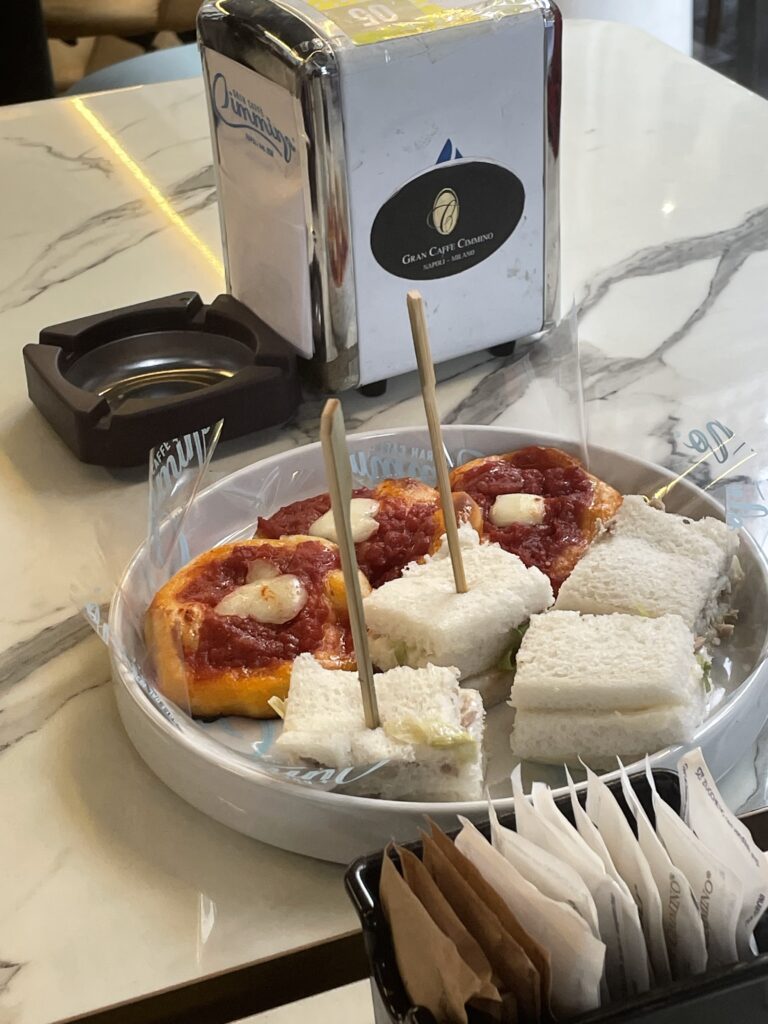
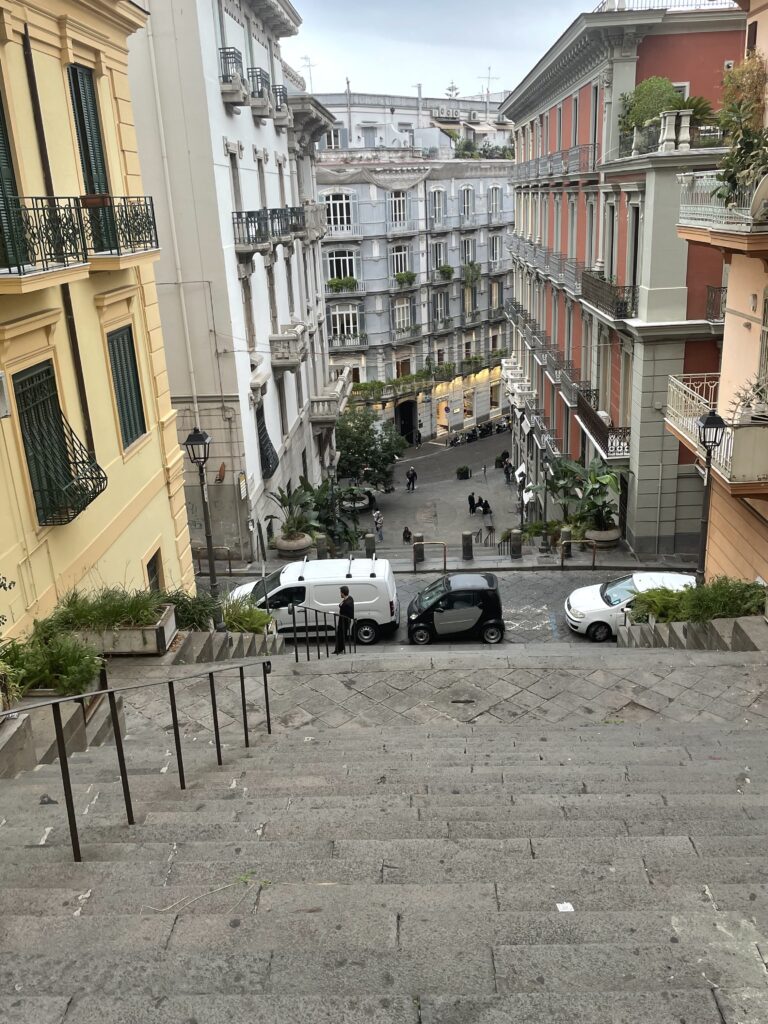

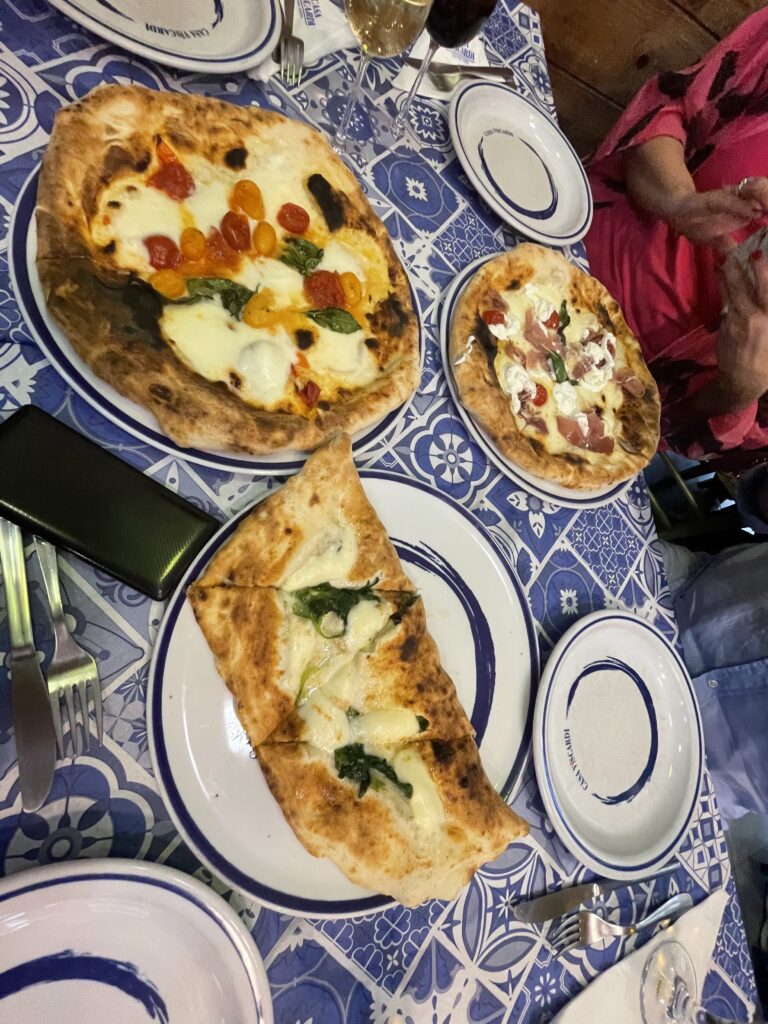
ded, but we were done. We made it back to the hotel, Jill and I packed our bags (we would leave Karin here for a couple of days) while we headed off on a cruise (more to follow). In the mean time Karin would keep exploring Rome for a couple of days before heading on to Barcelona.
So Jill and I hopped a train to Civitavecchia (the cruise port closest to Rome) crashed for the night and boarded our ship. But before doing so we met up with Patrick and Anna (our Swedish friends from the ill-fated tilty ship and various Caribbean beaches). We would have the next 9 days together exploring the world.
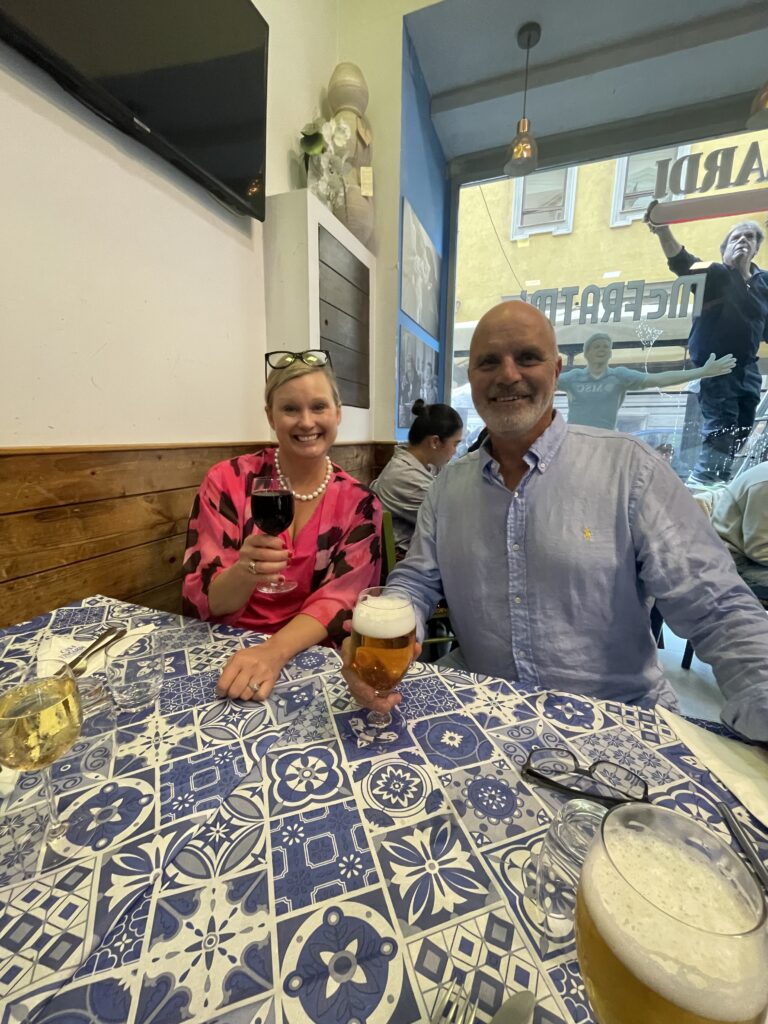
Messina
The next stop for us was a new one, we had made it further south (in Italy) than ever before and made it to the southern island of Sicily, more particularly the town of Messina. As seems to be the case for all of the coastal Italian towns, they are all built on the side of a damn mountain.
There is a beautiful seaside, some nice piazza’s and buildings and then a damn cliff that needs to be climbed to see some more cool old buildings.
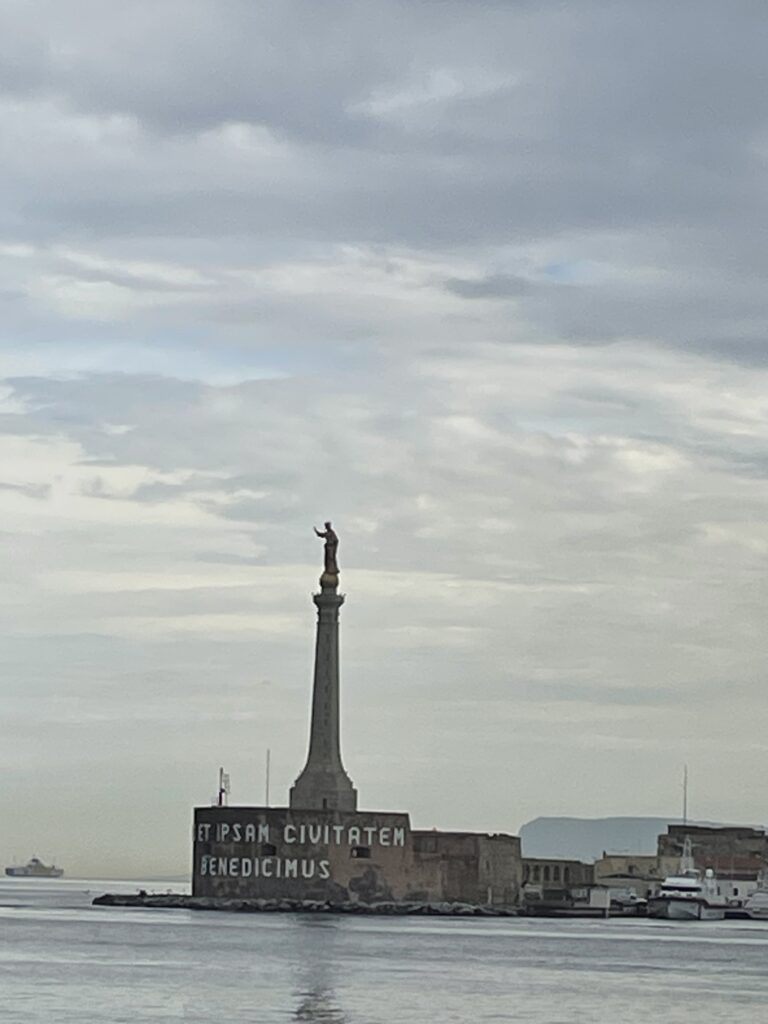


In Messina the thing to see (perched high on the hilltop) is the Temple of Christ the King. But on the way up the hill, we came across another fairly impressive shopping mall.

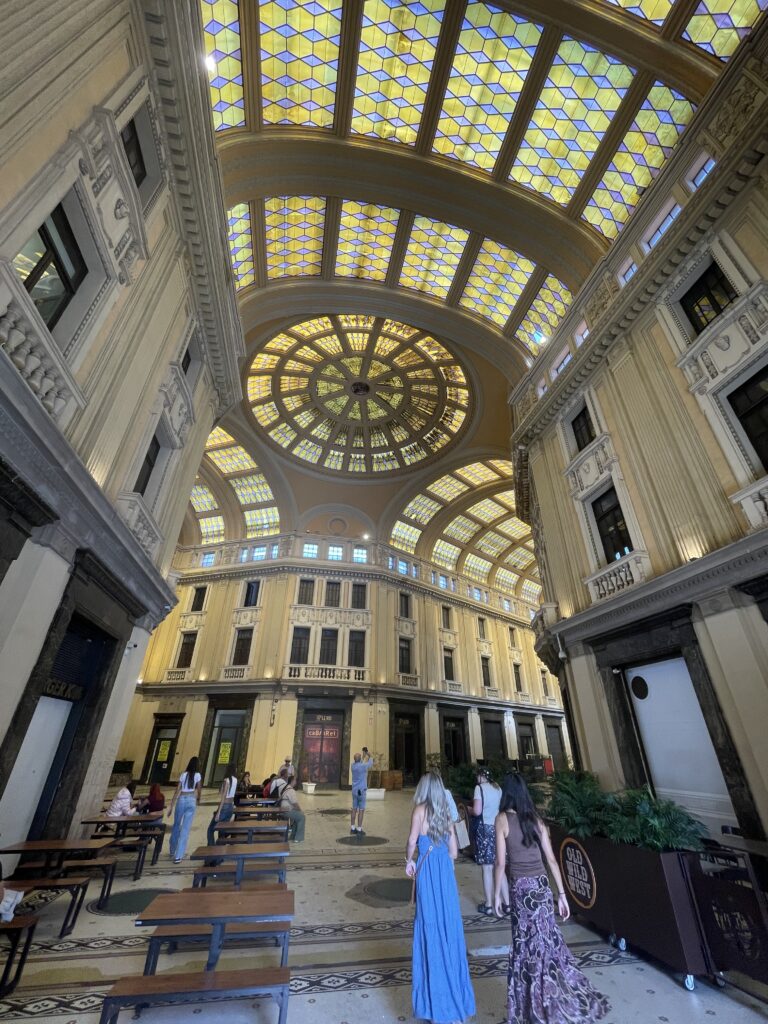
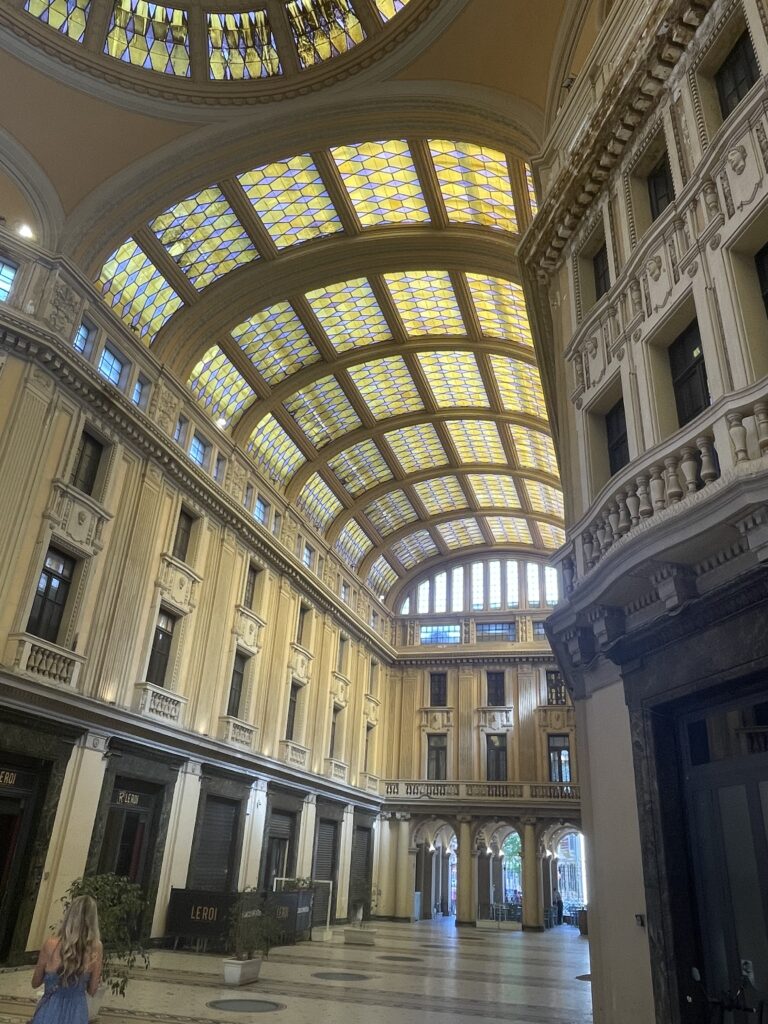
But of course, the main event was at the top of the hill and was the “Tempio di Cristo Re”. It is an ornate 11th-century Catholic church and war memorial with some pretty fair views of the harbour. Thankfully there was also a nice little café that served refreshments.

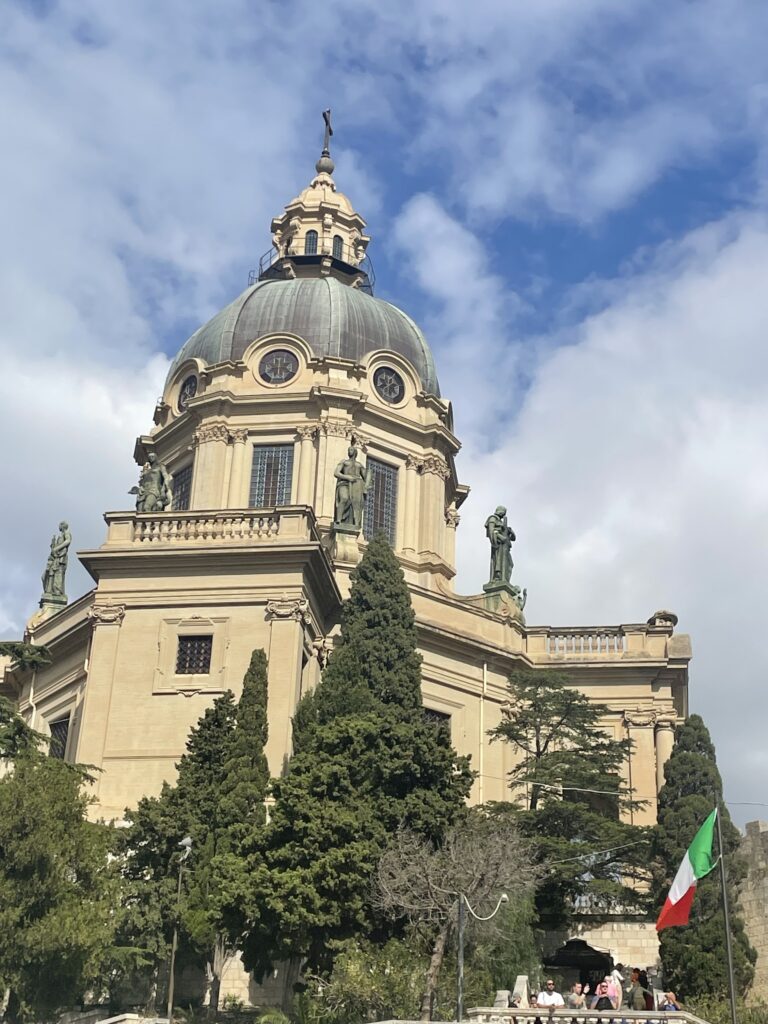

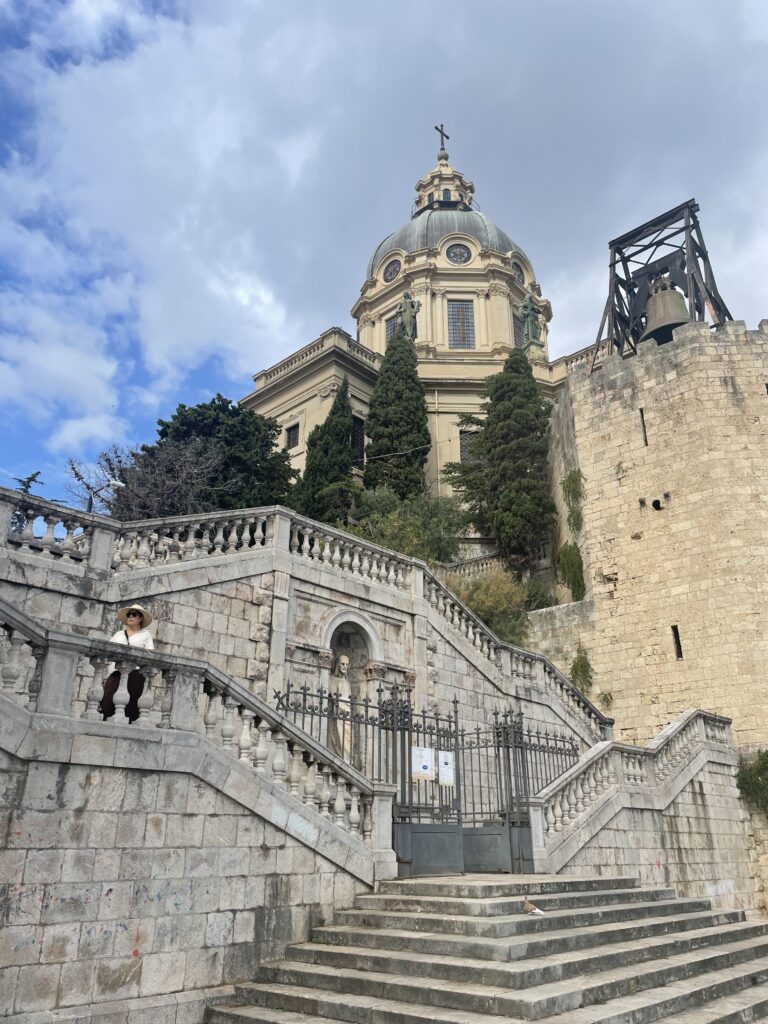
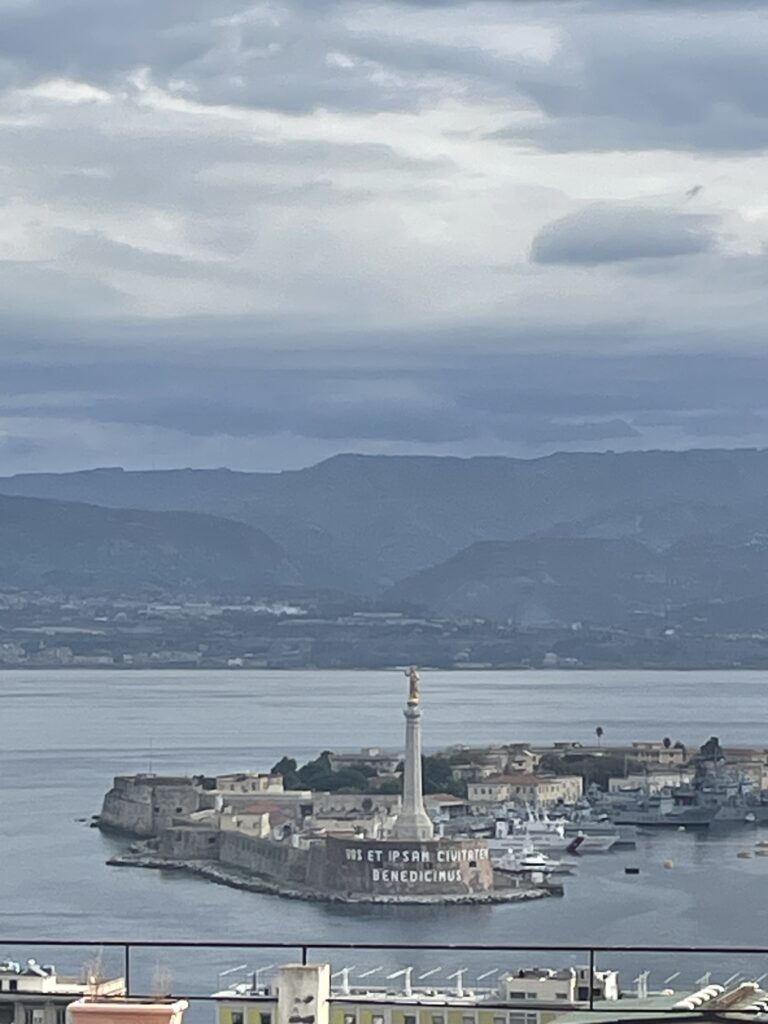
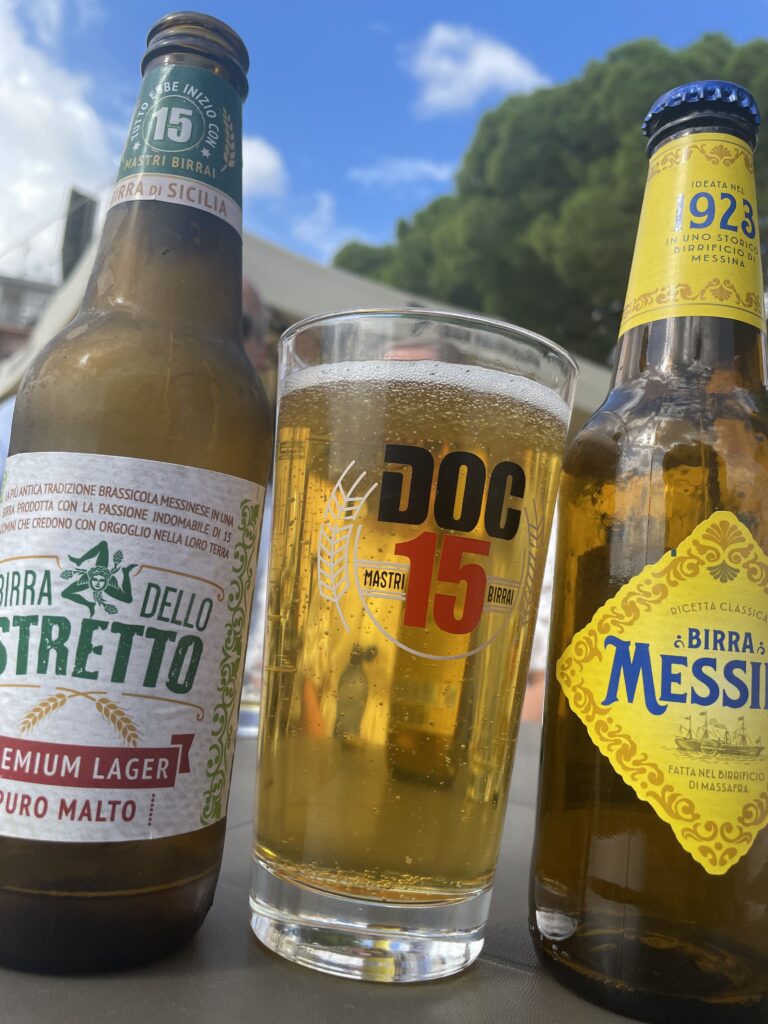
The trek down the hill took you past some pretty cool sights that were much more enjoyable after the aforementioned refreshments.
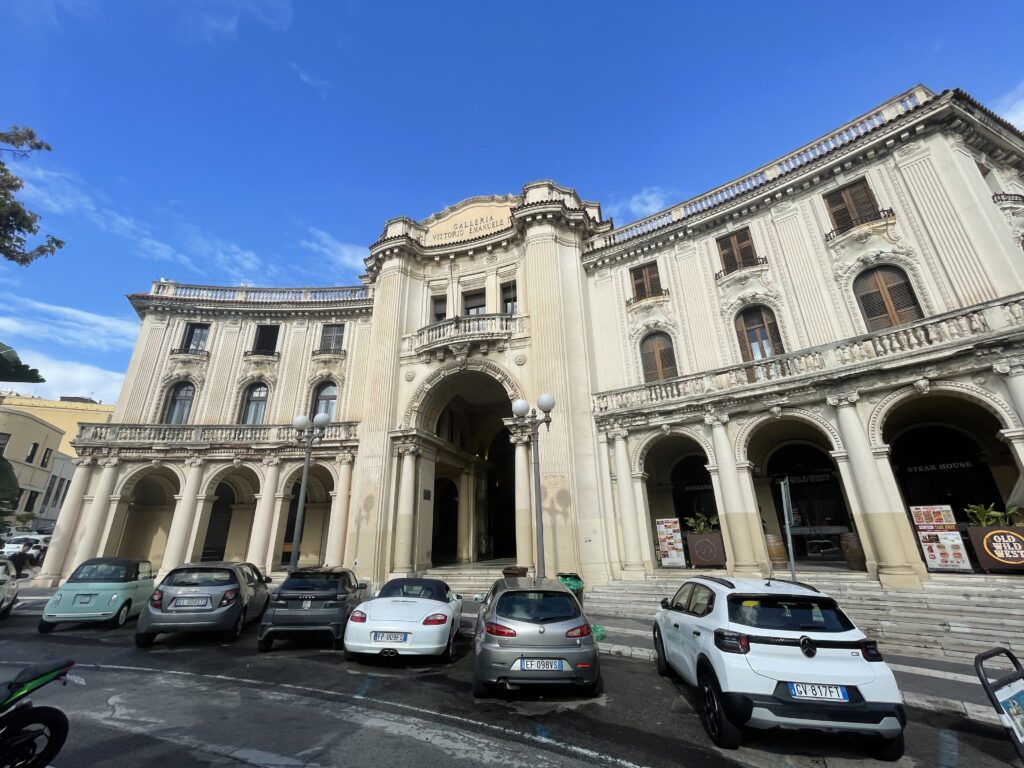
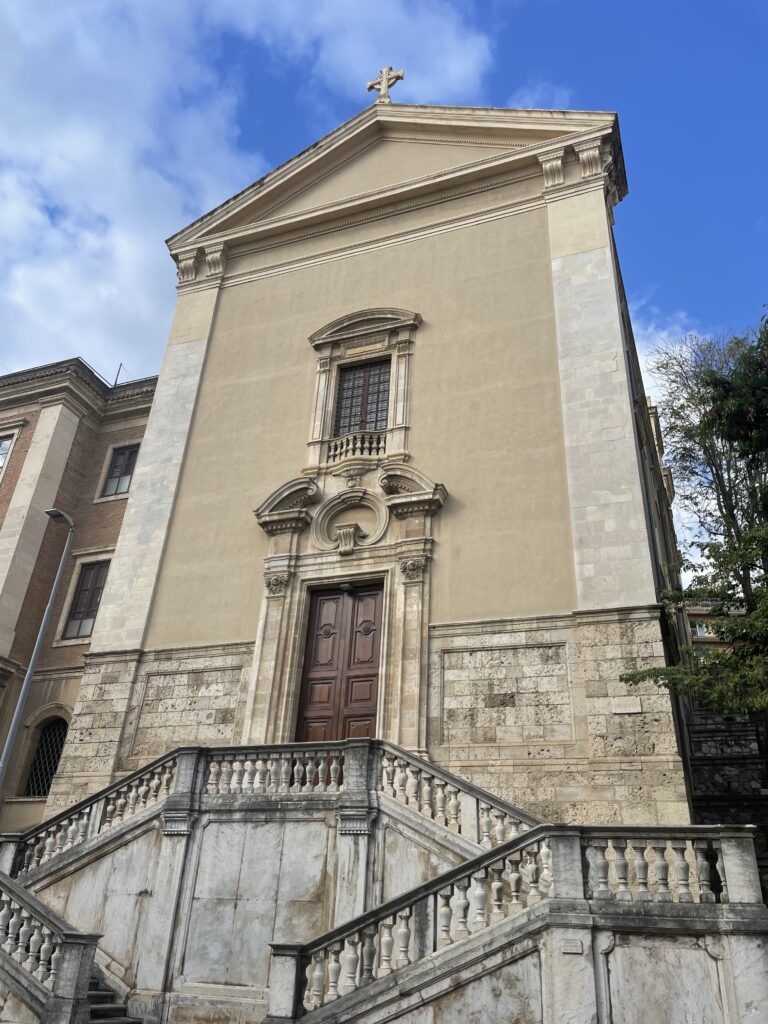
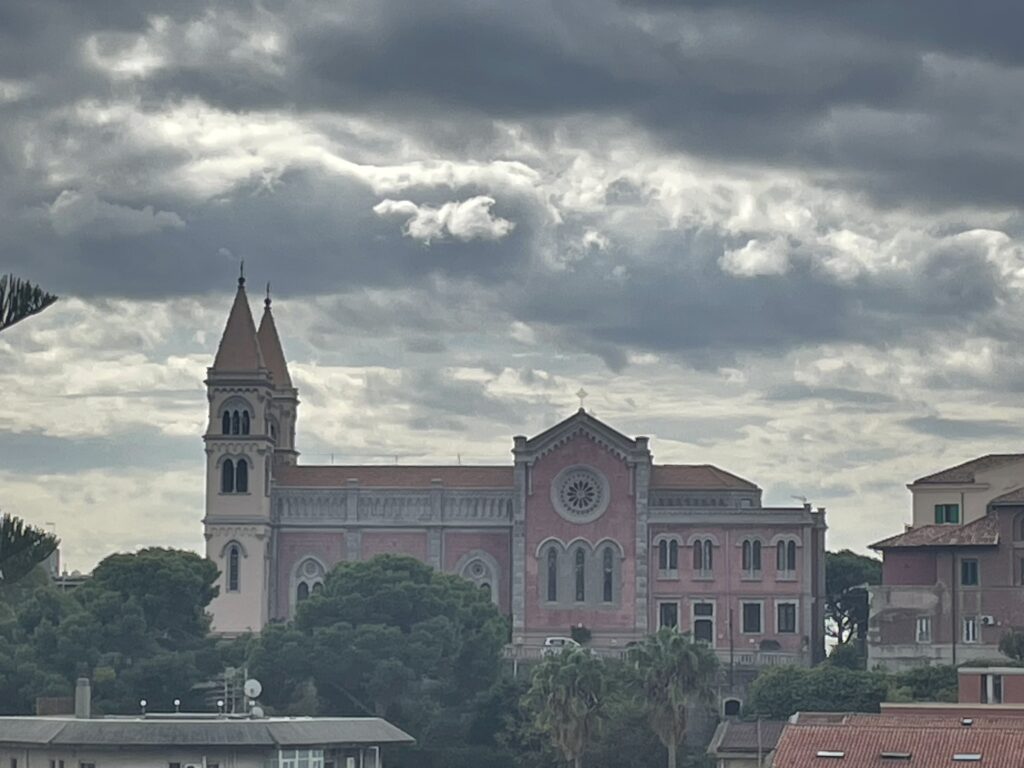
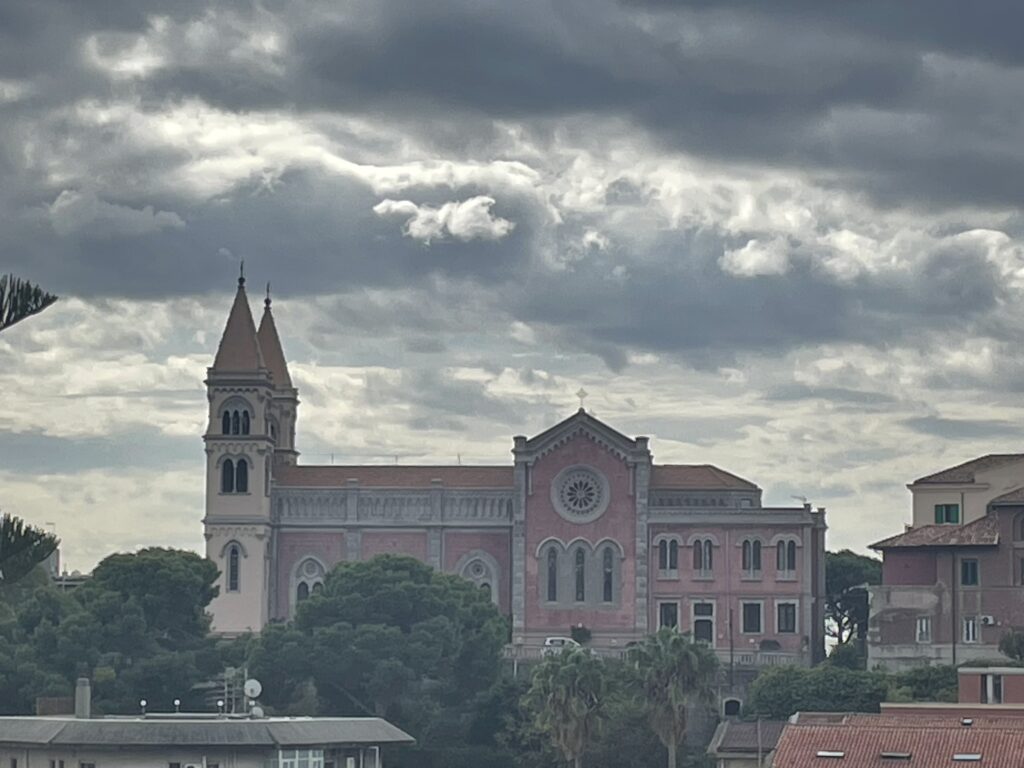

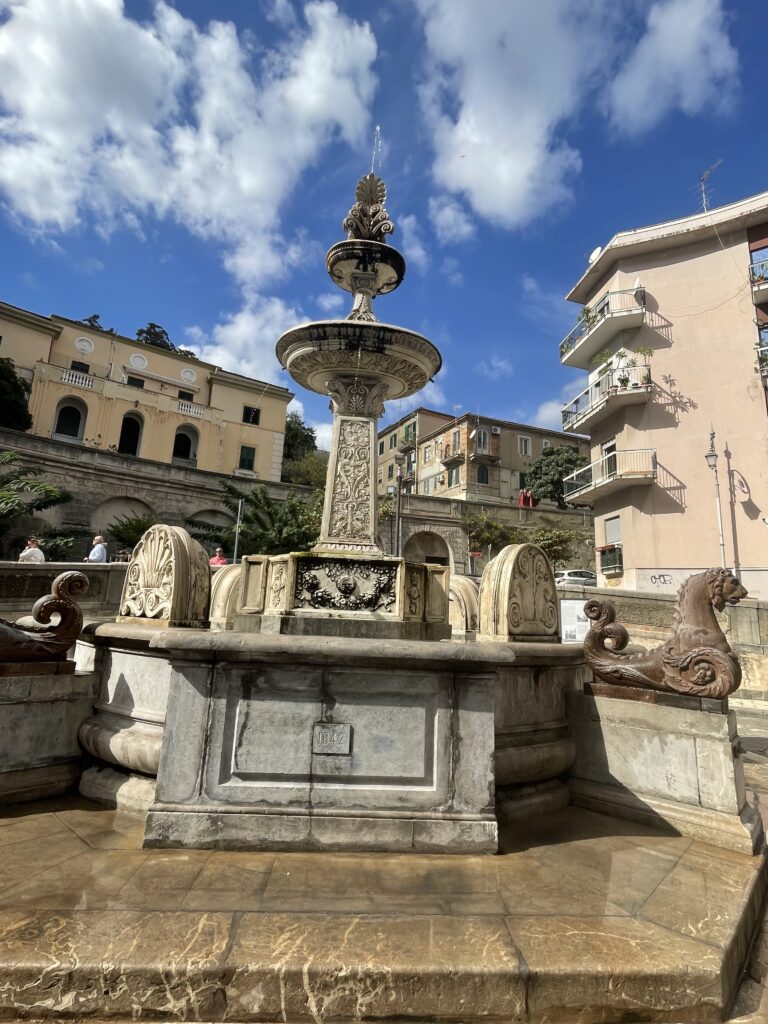
Back in the main square and we found ourselves in front of the Cathedral of Messina and more importantly, its Astronomical Clock. The bell tower of the Cathedral contains the biggest and most complex mechanical and astronomical clock in the world. Designed by the French it was installed in 1933 and is the city’s main attraction going off at noon each day.
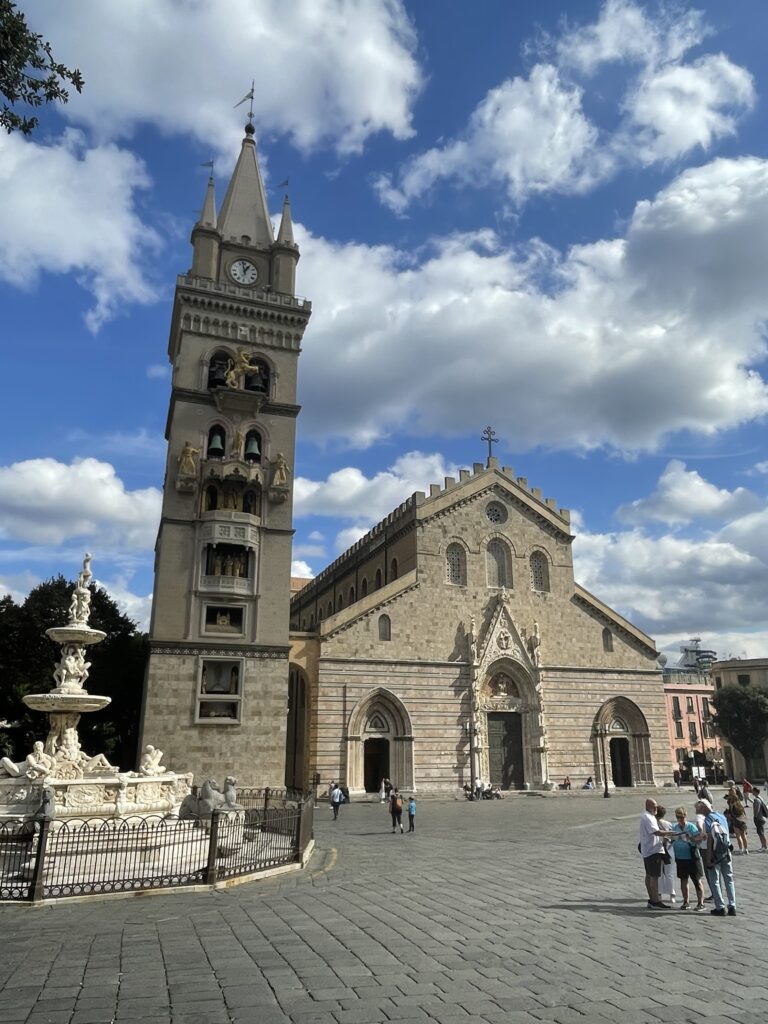
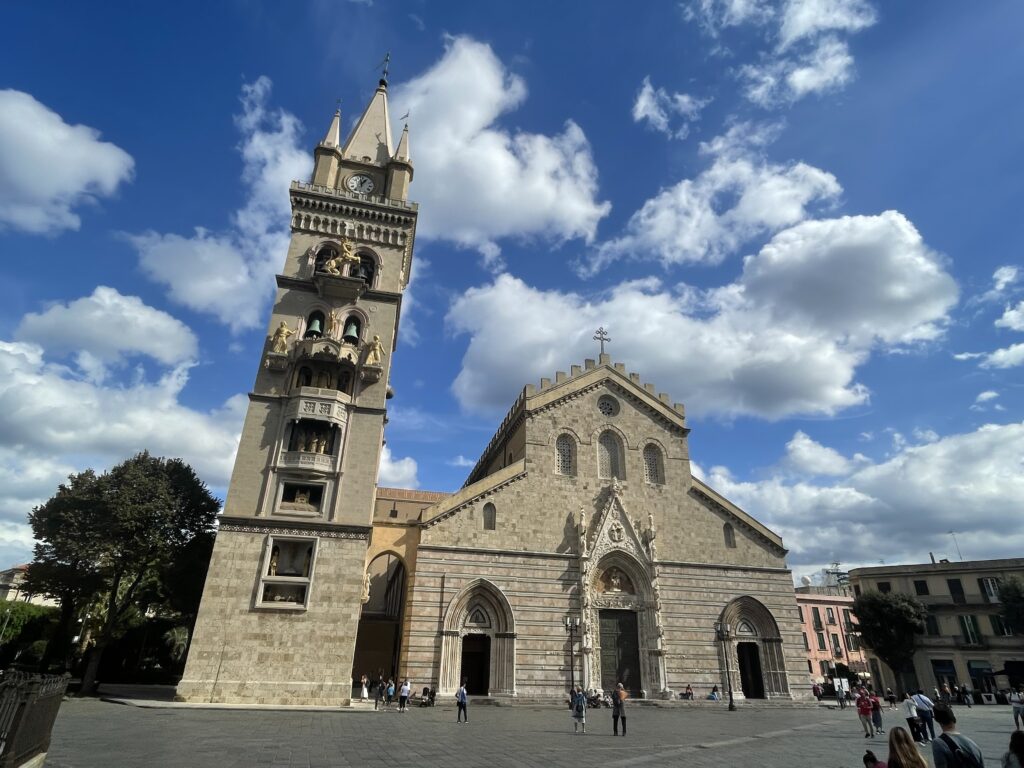
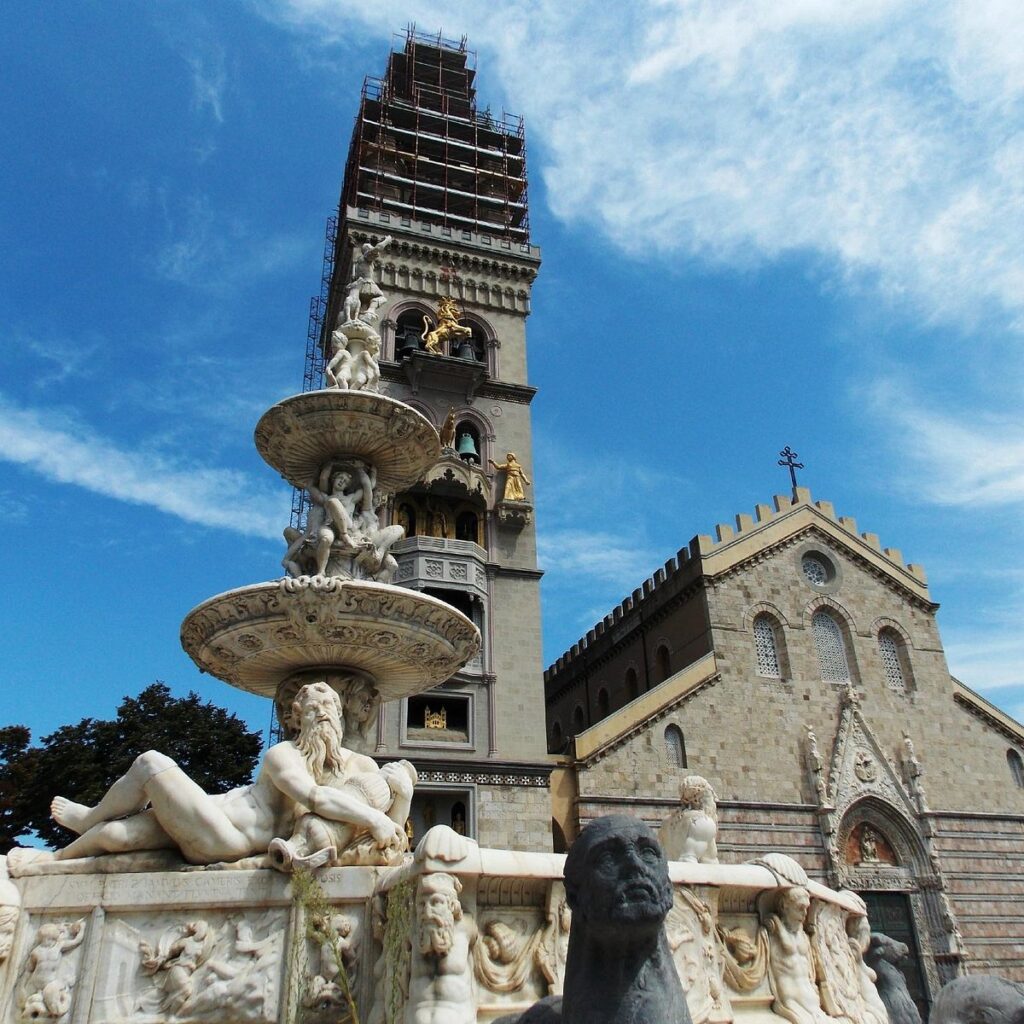
Into the banking district for a bit, a bite to eat (and some more refreshments)
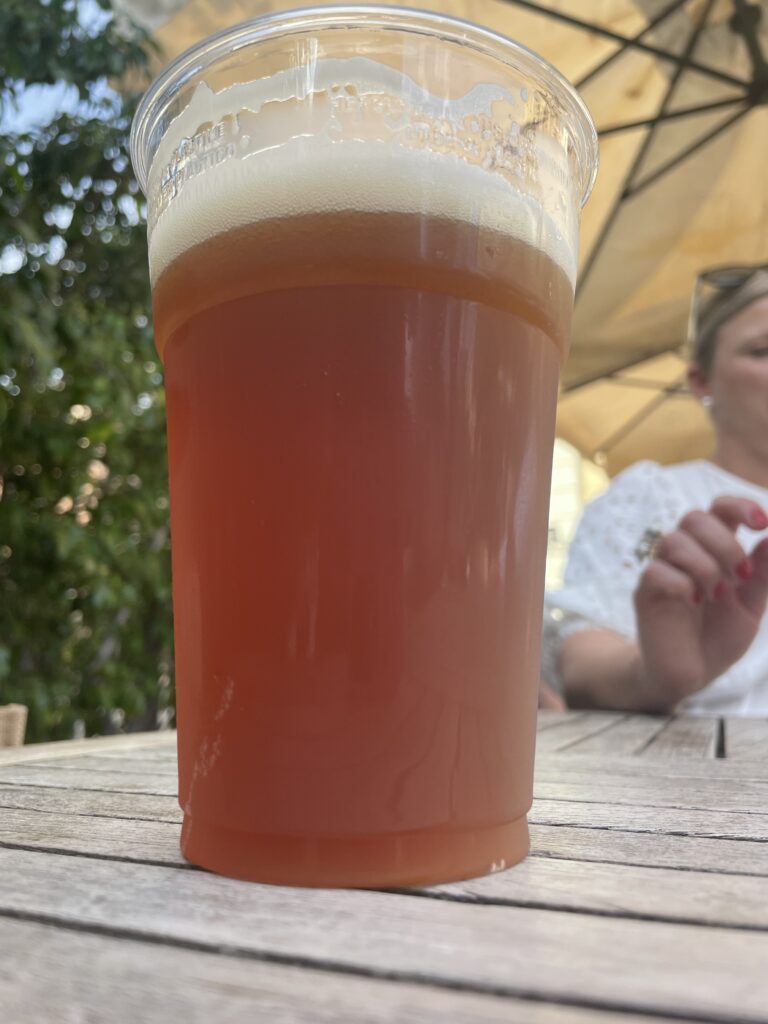


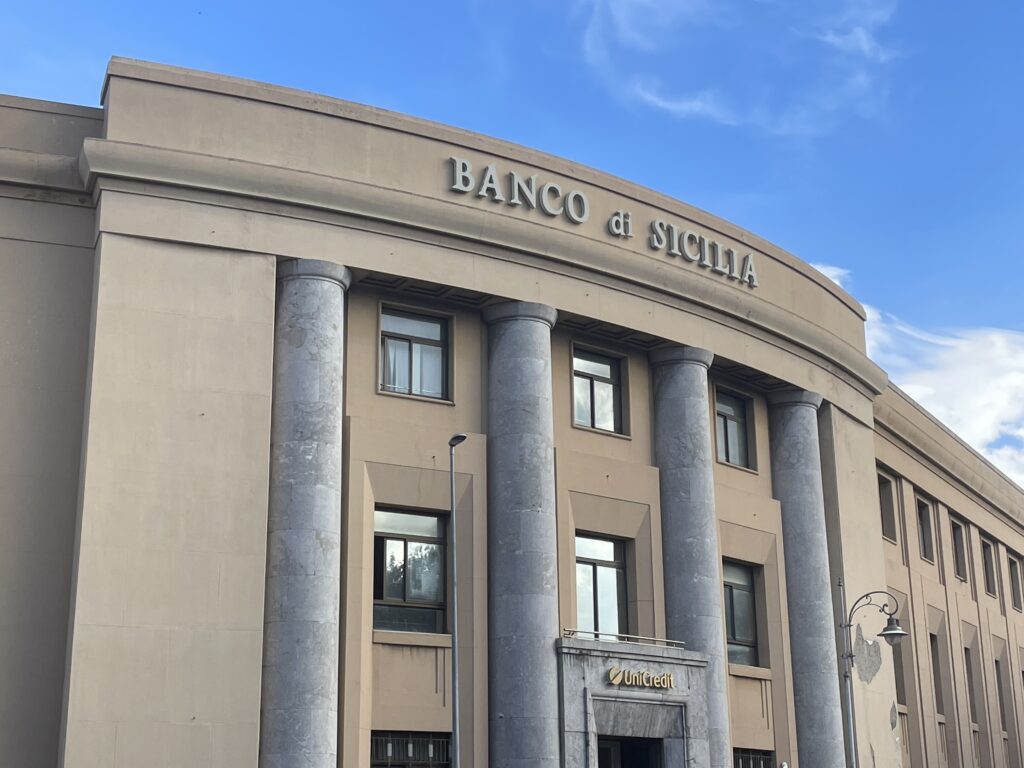
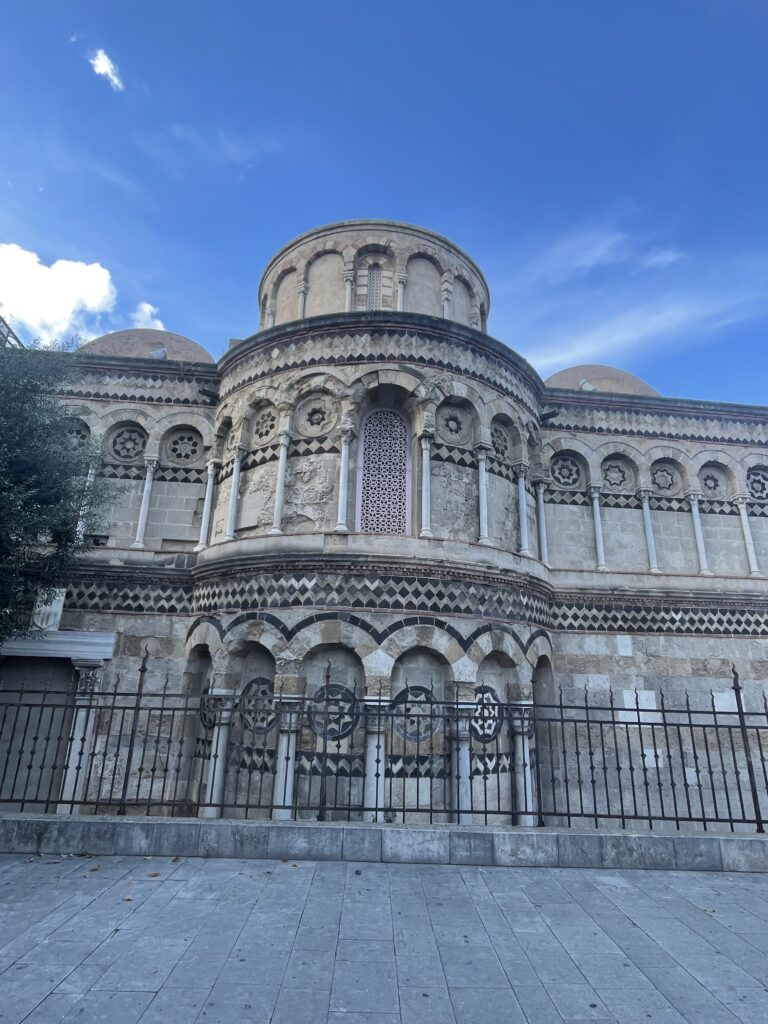
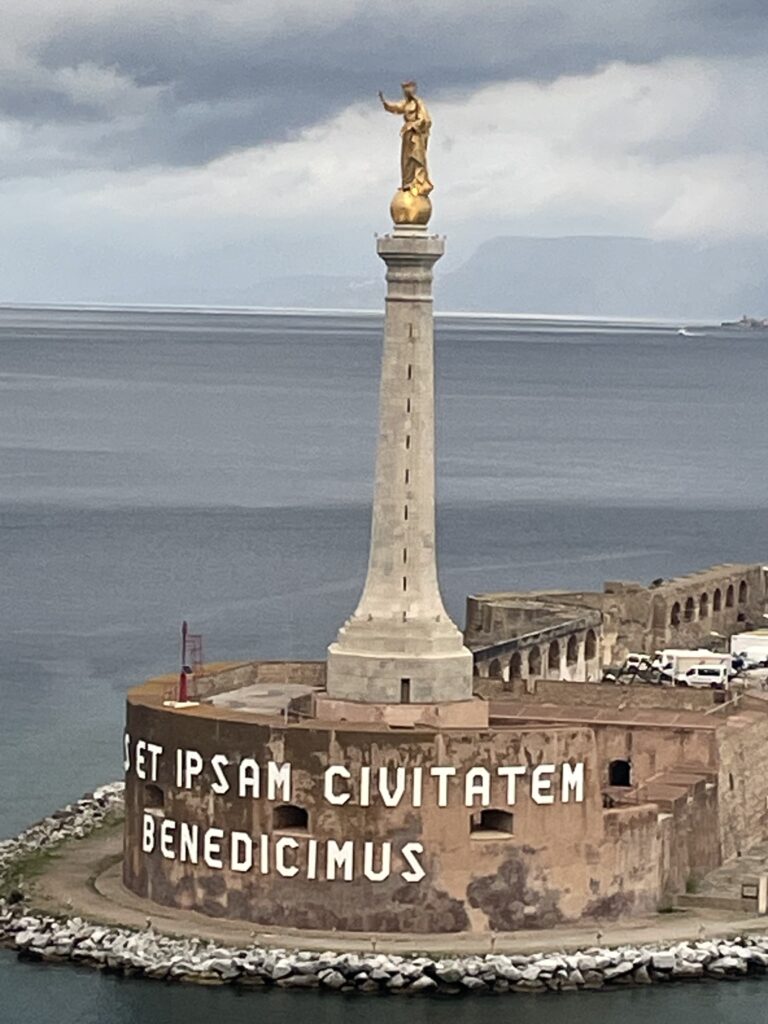
And no trip to Messina is complete without mentioning the “Stele della Madonna della Lettera” (our lady of the letter).
The statue was donated to Messina by General Ferdinando Loffredo, at the end of the siege of 1848-1849.
It stands about 60 metres high, topped by a gilded statue of the Virgin Mary holding the letter.

At the base of the stele, there is the Latin inscription ‘Vos et ipsam civitatem benedicimus’ (We bless you and the city), a phrase that sanctions Mary’s perpetual blessing on Messina.
La Spezia
Le Spezia was our last port of call in Italy. Usually most people use this as a launching point to do day trips to either Florence or Pisa. But as I had already been to both, and the idea of sitting on a bus for hours to see a poorly built tower did not appeal to Jill, we stayed and explored La Spezia, which was actually really good.

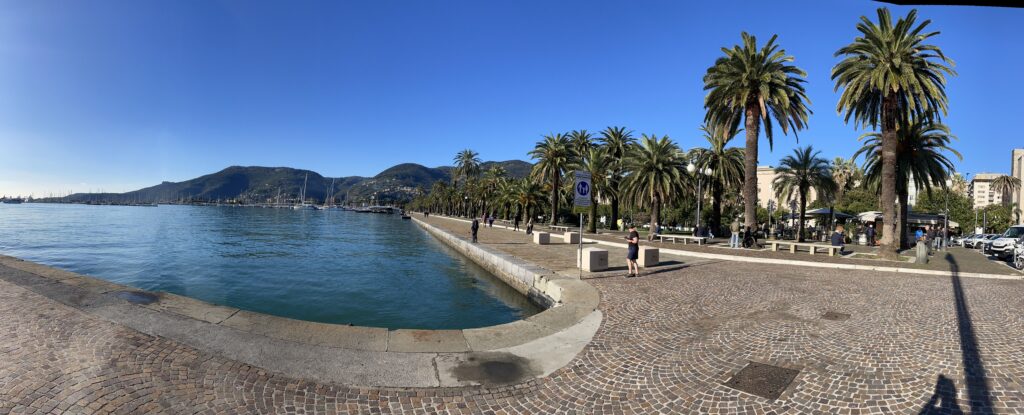
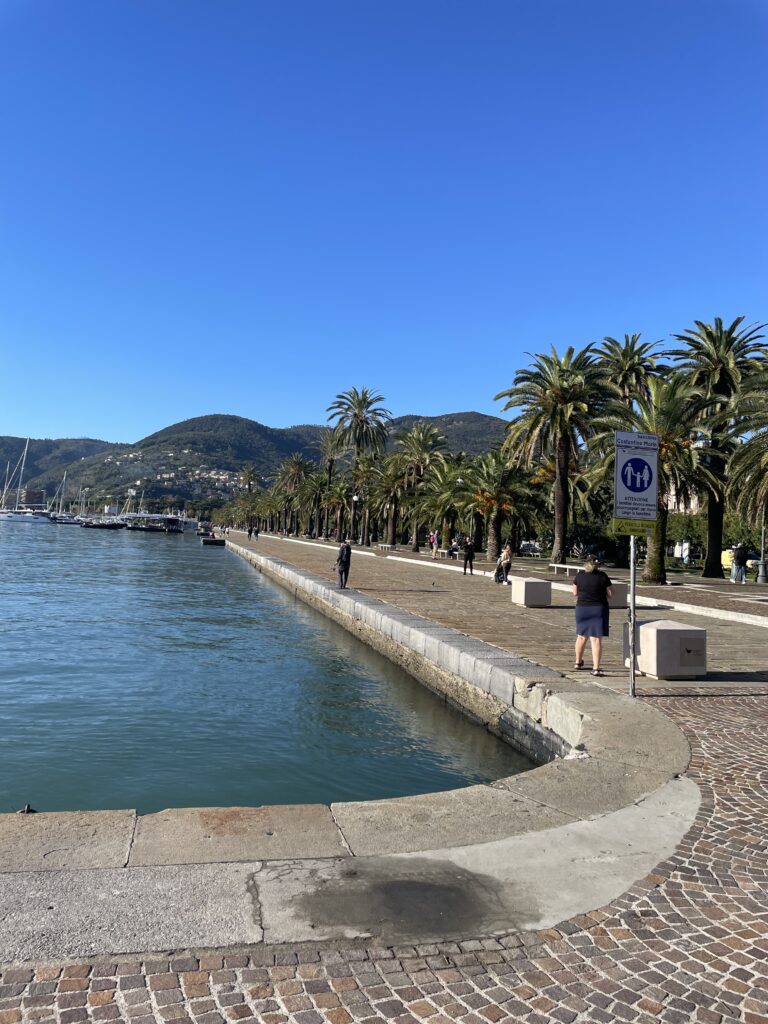
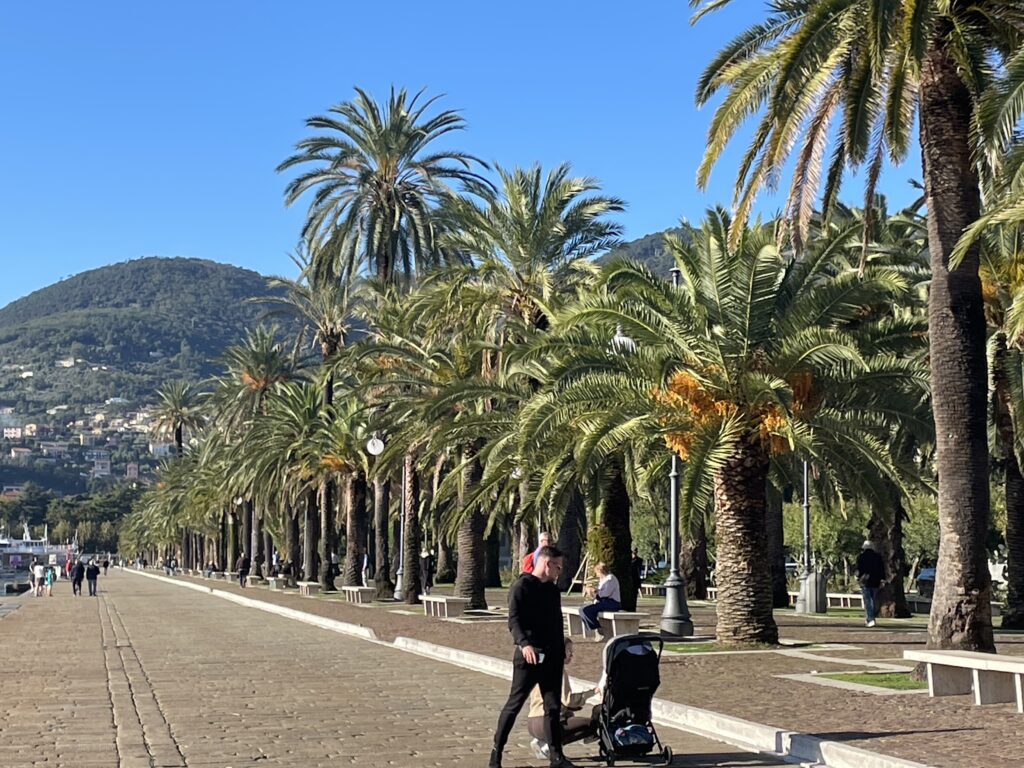
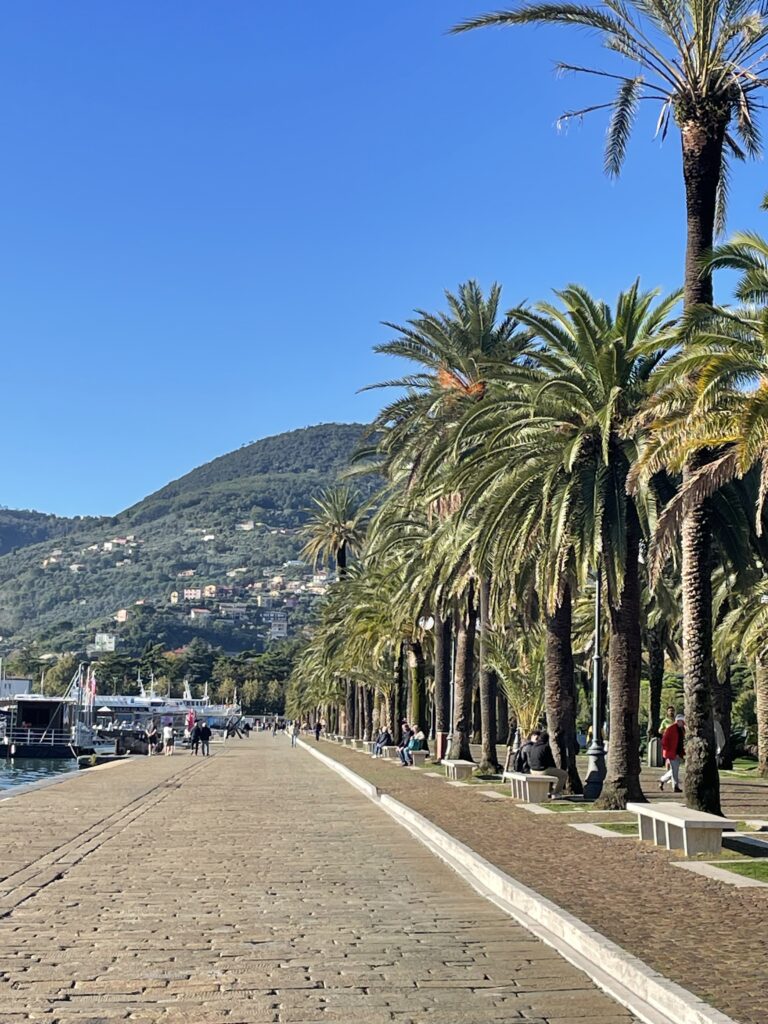
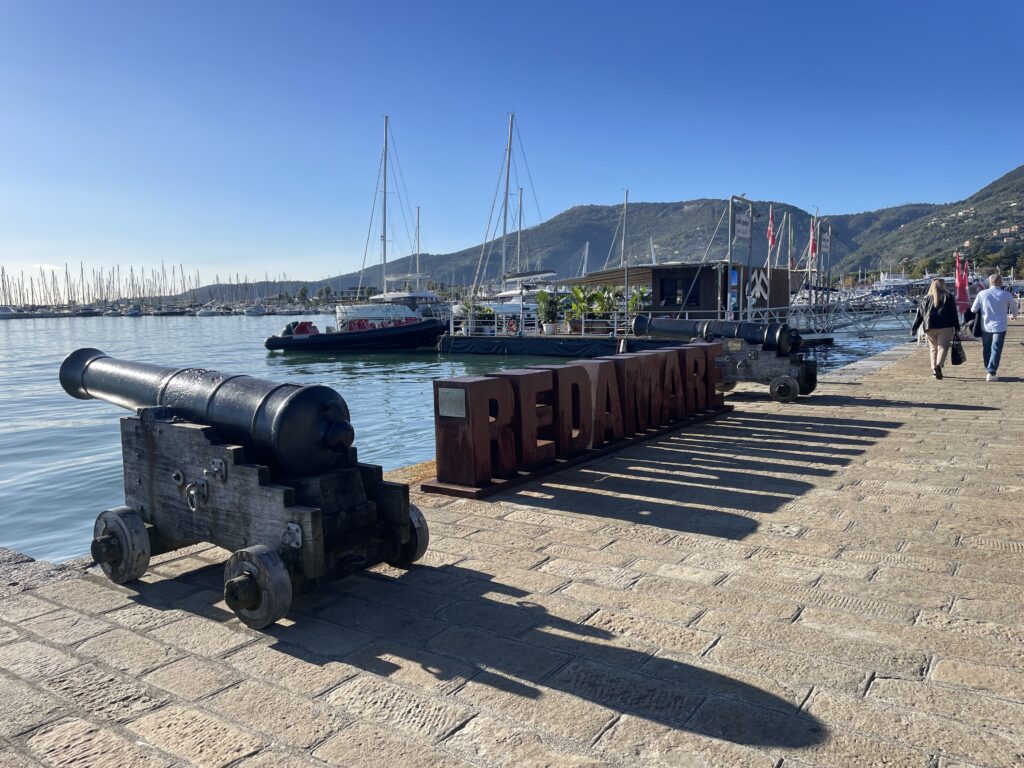
The port and docks were stunning, as were the parks and the regular markets. On the day we were there (on top of the regular markets) , the streets turned into a maze of massive open air markets.
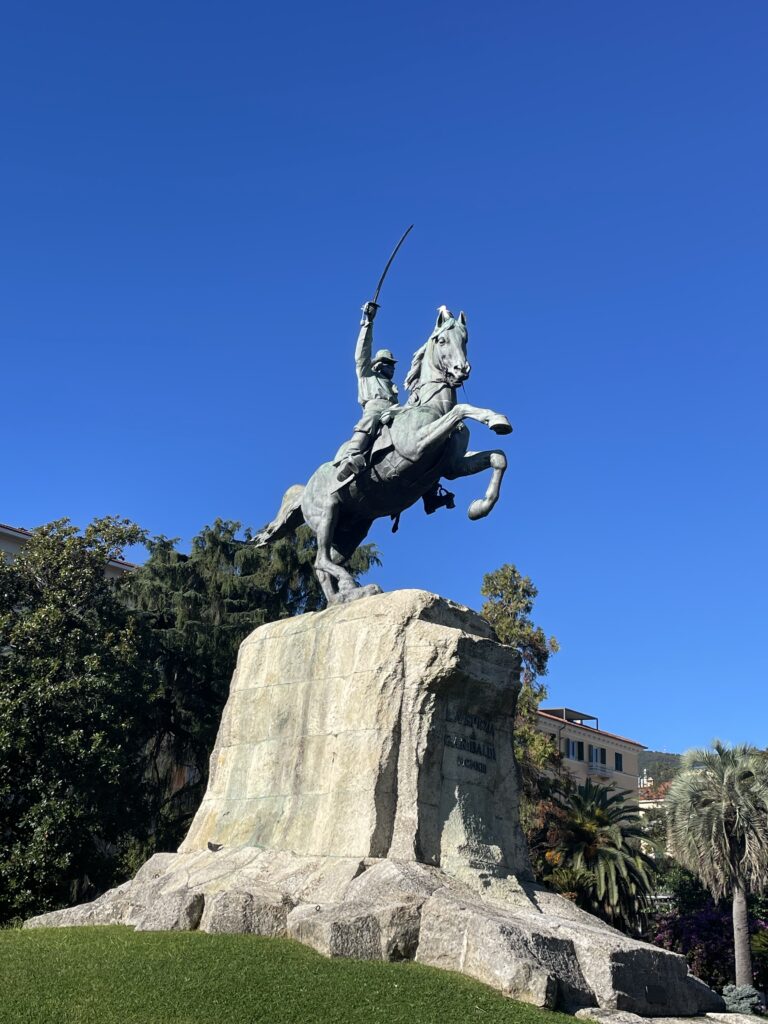




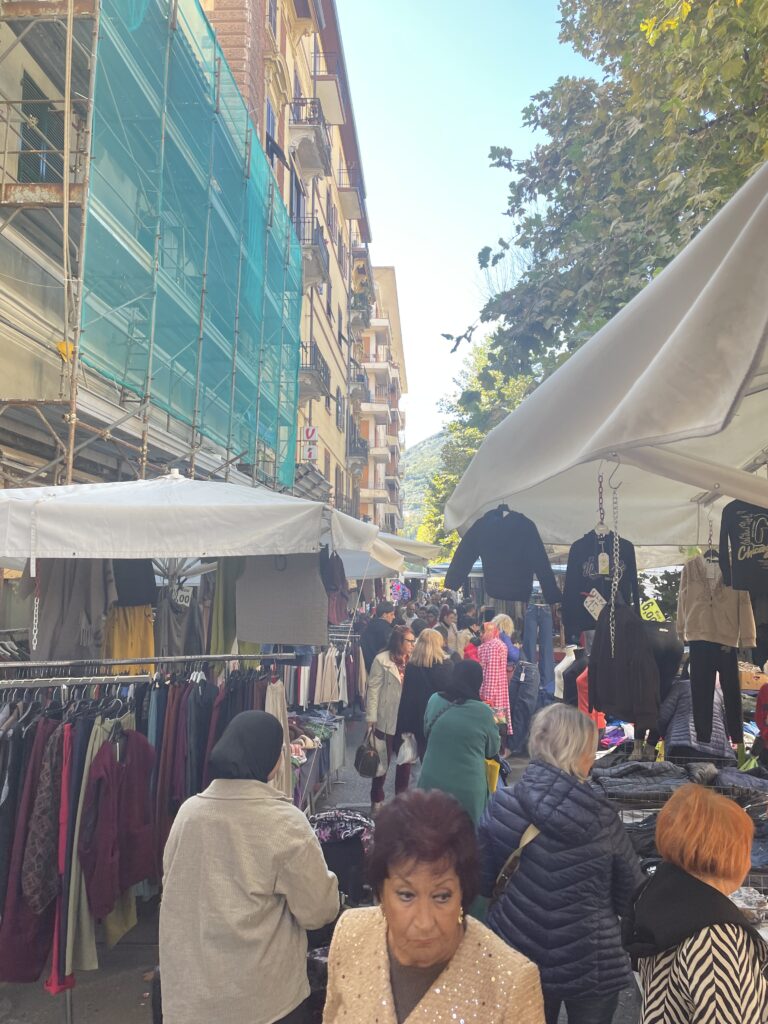
So we explored. Our enjoyment was furthered by one of the best days we had received since leaving Rome, blue skies, warm sunshine…just lovely.
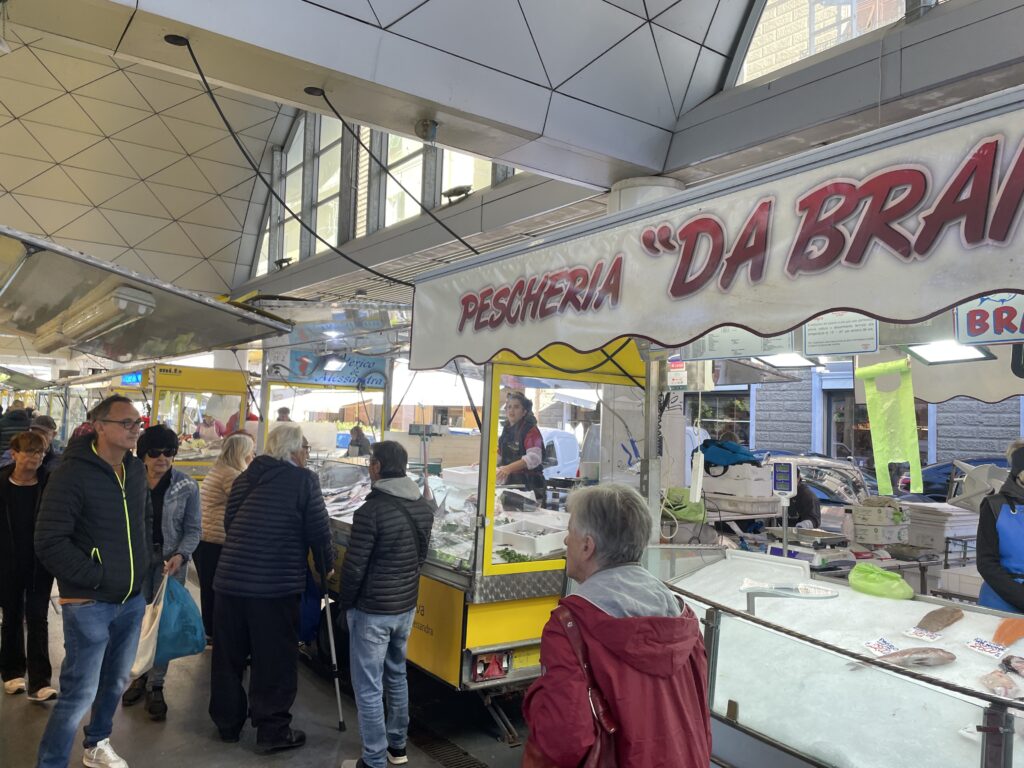

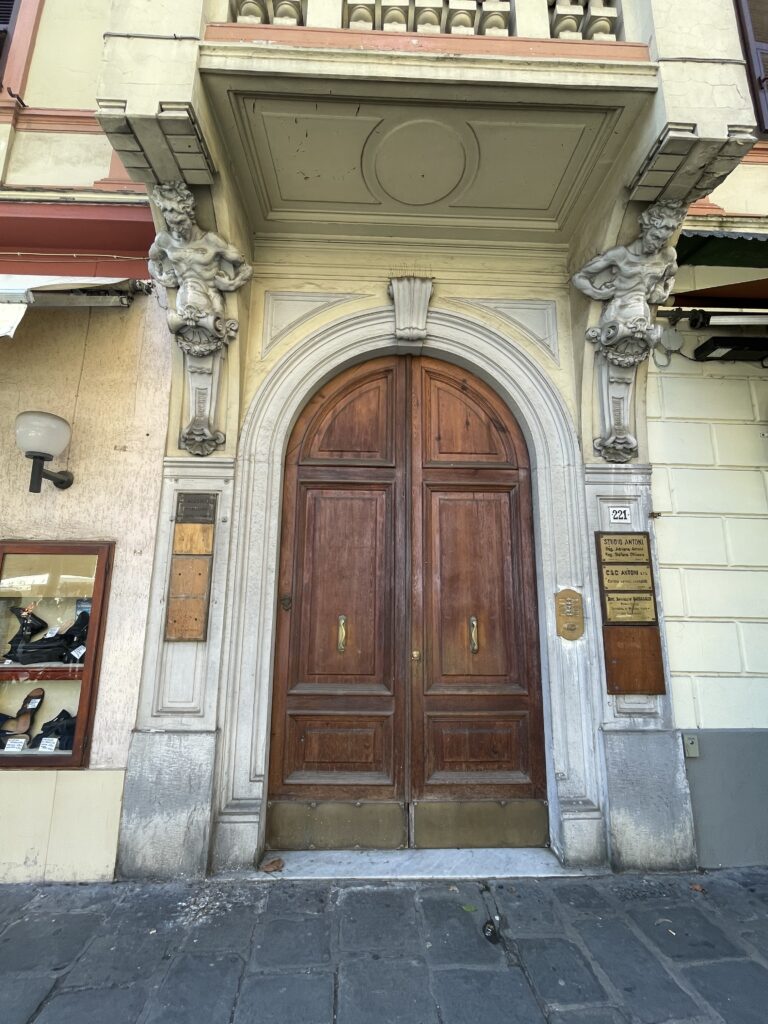

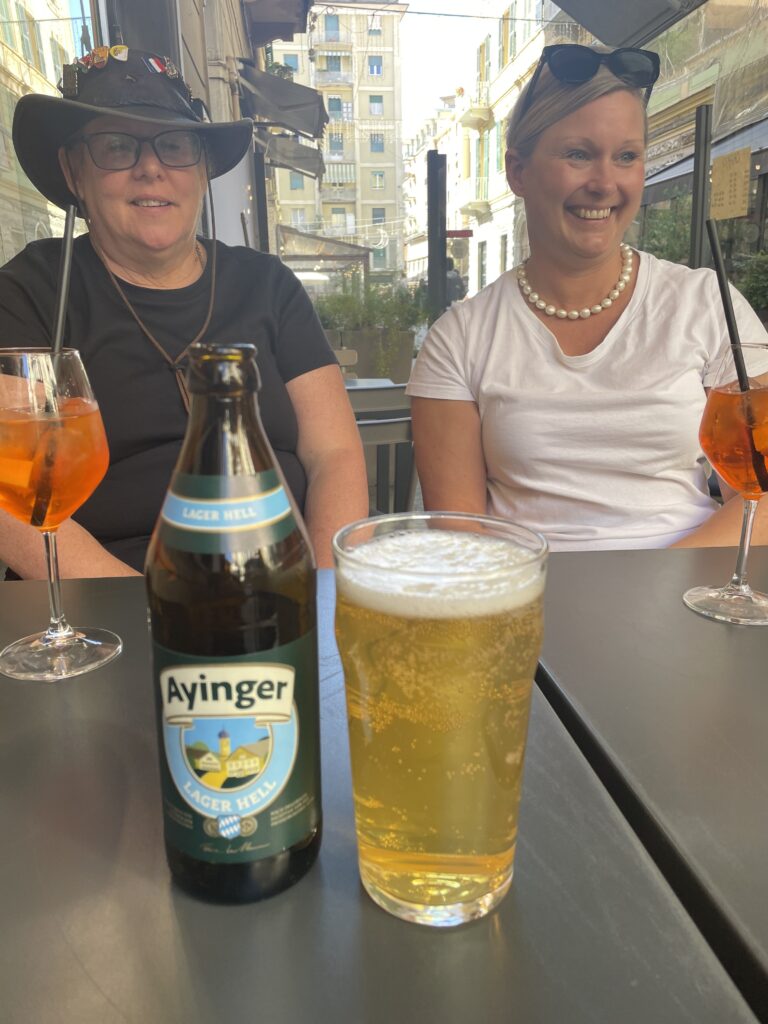
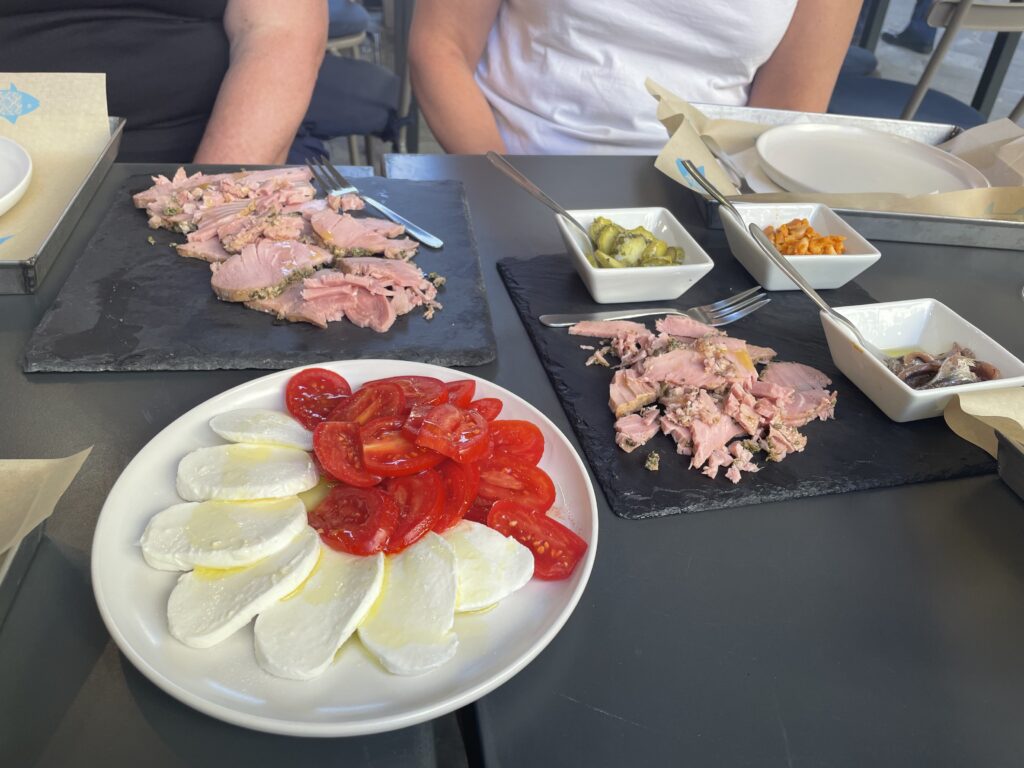
We found a nice spot for a light lunch and just generally had a great day.